
- 2024 Set Departure Safaris
- Serengeti Migration Safari
- Family Safari
- Honeymoon Safari
- Wilderness Safari
- Lodge Safari
- Luxury Safari
- Luxury Safari & Beach
- Northern Safari
- How much does a safari cost?
- Make a booking with us!
- Serengeti Walking Safaris
- Tarangire Walking Safaris

Ngorongoro Walking Safaris
- Hadzabe Bushman Walking Safaris
- Wayo Manyara Green Camp
- Wayo Serengeti Green Camp
- Wayo Little Green Camp
- Wayo Walking Camp
- Mahale Mountains
- Day Game Drive
- Night Game Drive
- Treetop Walkway
- LAKE MANYARA - SERENA
- LAKE MANYARA - WAYO CENTRE
- ARUSHA - RIVERTREES
- SERENGETI SERENA SAFARI LODGE
- BOOK WAYO ACTIVITIES
- Safari in Tanzania
- Packing list for safari
- Vehicle types
- Vehicle roof types
- December - March itineraries
- April - June itineraries
- July - November itineraries
- Our Philosophy
- Safari Guides
- Wayo is Green
- Newsletter signup

Ngorongoro Crater
Take a walk on the wild side.
Walk in the most spectacular scenery in Africa
This scenic walking safari takes place in the Ngorongoro Conservation area with the largest unbroken caldera in the world; the breathtaking Ngorongoro Crater. During this remote walking safari you will explore extinct volcanoes, diverse landscapes, wildlife and meet the local Maasai who live in this area. Immerse yourself in these beautiful highlands, away from the crowds. The views and scenery are truly breathtaking.
.png)
Sample itinerary: 3 days Ngorongoro walk
Day 1: game drive.

You drive to the rim of the Ngorongoro Crater and enjoy a late afternoon game drive on the crater floor. Overnight in Sanctuary Crater Camp.
Day 2: Crater rim
.png)
Start your walk early in the morning from the Lemala gate on the eastern side of the crater. The track takes you through thick forests following the contours of the Ngorongoro Crater rim with stunning views of the crater floor below. You walk on an easy animal trail and may encounter local Masaai with cattle. Arrive in the Wayo Fly Camp late afternoon and enjoy time in this small remote camp.
Day 3: Inside the crater
.png)
Continue your walk in the early morning following more animal trails. Today you walk more in the open, inside the crater rim, giving you the feeling of walking in the beautiful crater. The views are the best possible of the Ngorongoro Crater. The walk will end slightly after midday at the Leneto Crater decent road, from where you can continue to the Serengeti.
Budget: $2,000 - $3,000 per person all inclusive (exl international flights).
Sample itinerary: 10 days safari (incl. Ngorongoro & Serengeti walk)
Day 1: arusha.

Pick up and transfer to Rivertrees Country Inn
Day 2: Lake Manyara NP
.png)
Early morning pick up and transfer to Lake Manyara. Game drive in Manyara National Park, where you can see herds of elephants, giraffe, baboons, flamingos, buffaloes and lots of hippos in the pool. Overnight in the Wayo Green Camp located on the Endabash River, next to a waterfall.
Day 3: Lake Manyara NP
.png)
Enjoy a scenic morning walking safari inside this smaller national park, of which two-thirds is covered by the lake. You have various game drives and overnight back in the Manyara Green Camp.

Day 4: Ngorongoro Crater
.png)
Morning game drive out of Manyara with a Treetop Walk enroute out of the park. Transfer to the rim of the Ngorongoro Crater and afternoon game drive inside the crater. Overnight in Sanctuary Crater Camp.
Day 5: Ngorongoro Crater
.png)
Depart early on a walking safari round the rim of the Ngorongoro Crater, ending in the Wayo Fly Camp.
Day 6: Serengeti

Half day walking safari around the rim of the crater, ending close to the Leneto decent road. Here you meet up with your vehicle and have a game drive in the famous Serengeti. Overnight in the Nabi Green Camp .
Day 7: Serengeti

Full day game viewing on the Serengeti short grass plains. Overnight back in the Nabi Green Camp.
Day 8: Serengeti
.png)
Game drive in the Serengeti walking zone. Arrive for lunch and an afternoon walking safari in the Southern Serengeti. Overnight in the Wayo Serengeti Walking Camp .
Day 9: Serengeti
.png)
Full day walking safari in the Serengeti and overnight back in the same camp.
Day 10: Departure

Drive back to Arusha.
Budget: $8,000 - $10,000 per person all inclusive (exl international flights).
Contact us for a customised itinerary and quote.
Check our blogs: 8 reasons why you should go on a walking safari Why choose Wayo for your walking safari?
CALCULATE THE COST ASK US FOR A QUOTE
Offer! 3 Days Virunga Gorilla Safari at $1500. Book Now
+255682784150 [email protected] +255763058584

Walking safaris in Ngorongoro Conservation Area
Walking safaris in Ngorongoro conservation area is among the activities which tourists engage in as they explore the world’s largest inactive caldera. This activity is one of the best ways to explore Ngorongoro conservation area since it is carried out on foot giving the tourists a closer experience with their surroundings at the destination which is located in the northern part of Tanzania.
While engaging in the walking safari in Ngorongoro conservation area, the tourists enjoy the beautiful and diverse landscape; enjoy seeing wildlife species of a variety around the destination and also interacting with the Maasai people who live in the neighboring villages around Ngorongoro.
The walking safaris also take place around the Ngorongoro highlands which are far from the crowds with breathtaking views. Other tracks which are followed during the walking safari go through the forests and around the crater rim where tourists enjoy seeing the Ngorongoro crater .
Armed rangers accompany tourists during their walking safaris in Ngorongoro conservation area. Visits to the remote areas around Ngorongoro are also carried out during the walking safari activity.
Wildlife species such as elephants, lions, buffalos among others can also be encountered during the walking safaris in Ngorongoro conservation area. During the activity, the tourists can also enjoy learning how to track the different wildlife species and also reading the tracks of the wildlife species.
Walking safaris also enable the tourists to observe the behavior of the wildlife species from a close distance which creates an intimate and adventurous way to experience nature and wildlife viewing around Ngorongoro conservation area .
Taking a walk in the wilderness of Ngorongoro conservation area helps the tourists engaging in the activity to reconnect with the nature and their environment as they move on foot exploring savannah plains of Ngorongoro.
The local communities around the Ngorongoro conservation area also engage in the walking safaris by acting as guides for the tourists during their experience around the wilderness and cultural experience in Tanzania.
Walking safaris take about 2 to 3 hours of exploring Ngorongoro conservation area. This activity is offered by different tour operators for tourists interested in getting a close experience with their natural surroundings while on safari.
There are also other destinations around Tanzania where walking safaris are carried out such as in Tarangire national park as well as in the famous Serengeti national park which is a wildlife viewing destination in the northern part of Tanzania.
Other activities apart from walking safaris which are carried out in Ngorongoro conservation area during a safari include the following;
Game drives
Game drives are a popular safari activity which is carried out in Ngorongoro conservation area. During this activity, tourists descend in their safari vehicles 600 meters into the Ngorongoro crater which is the world’s largest inactive caldera.
This activity is carried out until about 4:30 pm on the grassy plains of Ngorongoro crater where a variety of wildlife species can be spotted during the game drive such as elephants, lions, buffalos, rhinos, leopards, antelopes, zebras, waterbucks, gazelles, cheetahs, hippos among others. Game drives take place during the day around Ngorongoro conservation area.
There are also various bird species which can be seen around Ngorongoro conservation area and they include flamingos along the shores of Lake Magadi, crowned hornbills, turraco, rufous tailed weavers, vultures, starlings and many others.
Wildlife viewing in Ngorongoro conservation area is best done during the dry season in June to October although the activity can be carried out at different times of the year.
Cultural experience
Cultural experiences during safaris in Ngorongoro conservation area involve interactions with the Maasai people who coexist with the wildlife at the destination.
The Maasai are known for their unique culture and way of life and can be seen grazing their livestock such as cows, goats and sheep around the Ngorongoro conservation area. They also have unique art and crafts such as beaded jewelry, sandals, belts, shukas and many others.
Maasai people who are about 100,000 also have unique homesteads or bomas which tourists can visit during their safaris around Ngorongoro conservation area . Other tribes living around the Ngorongoro conservation area include the Datoga and Hadzabe.
Interactions between the Maasai and the tourists at Ngorongoro conservation area during safaris at the destination also involve visiting the kraals where the Maasai keep their livestock. Tourists can also enjoy seeing as the cows are milked and how traditional meals are prepared during the cultural experience.
The Maasai freely graze their cattle and other livestock in the savannah plains and woodlands of Ngorongoro conservation area and also within the crater since they are permitted to do so.
Apart from game drives in Ngorongoro conservation area , birding is another activity which tourists can engage in during their safaris at this destination.
With over 300 bird species, Ngorongoro conservation area has different locations for bird watching. This activity can be carried out around the forests along the crater rim, along the shores of Lake Magadi where flamingos can also be spotted.
Resident and migrant bird species can be seen around Ngorongoro conservation area as the birders explore the destination looking out for bird species such as rufous tailed weavers, starlings, storks, vultures, hornbills, crowned cranes, ostriches, kori bustards, red and yellow barbet among others.
Birding in Ngorongoro conservation area is best done during the wet season around November to April.
Hiking and visits to Olduvai gorge which is an archaeological site are also among the other activities which are carried out in Ngorongoro conservation area.
How to get to Ngorongoro conservation area
There are different ways of accessing Ngorongoro conservation area and among them is driving from Arusha to Ngorongoro conservation area which is about 2 to 3 hours’ drive and the destination is about 170 kilometers from Arusha.
Flights are also available from Arusha to Ngorongoro conservation area from Arusha airport or Kilimanjaro International airport.
Visit Ngorongoro conservation area and enjoy seeing different wildlife species and the amazing landscape as you engage in a walking safari in the wilderness of Ngorongoro.


- Company Profile
- SafariBookings Reviews
- Our Video Reviews
- Tanzania Travel Tips
- Tipping Guides
- 5 Days/ 4 Nights Camping Safari
- 6 Days/ 5 Nights Camping Safari
- 7 Days/ 6 Nights Camping Safari
- 3 Days/ 2 Nights Comfort Safari
- 4 Days/ 3 Nights Comfort Safari
- 5 Days/ 4 Nights Comfort Safari
- 6 Days/ 5 Nights Comfort Safari
- 7 Days/ 6 Nights Comfort Safari
- 7-Day Lake Natron, Serengeti & Northern Circuit Safari
- 8 Days/ 7 Nights Comfort Safari & Beach Combination
- 9-Day Incredible Safari + Cultural Experience
- 10-Day Unique Safari + Cultural Experience
- 12 Day Kilimanjaro Trekking Machame Route + Safari
- 14-Day Comfort Safari & Authentic Cultural Experience
- 7 Days High End Ndutu Migration Safari (Ngorongoro, Serengeti)
- 7 Days High End North Migration Safari ( Ngorongoro, Serengeti)
- 7 Days High End Western Corridor Migration Safari (Ngorongoro, Serengeti)
- 8 Days High End Ndutu Migration Safari (Ngorongoro, Serengeti)
- 8 Days High End North Migration Safari ( Ngorongoro, Serengeti)
- 8 Days High End Western Corridor Migration Safari (Ngorongoro, Serengeti)
- 9 Days High End Ndutu Migration Safari (Tarangire, Ngorongoro, Serengeti)
- 9 Days High End North Migration Safari (Tarangire, Ngorongoro, Serengeti)
- 9 Days High End Western Corridor Migration Safari (Tarangire, Ngorongoro, Serengeti)
- 10 Days High End Ndutu Migration Safari (Tarangire, Ngorongoro, Serengeti)
- 10 Days High End North Migration Safari (Tarangire, Ngorongoro, Serengeti)
- 10 Days High End Western Corridor Migration Safari (Tarangire, Ngorongoro, Serengeti)
- 12 Days High End Ndutu Migration Safari (Tarangire, Ngorongoro, Serengeti)
- 12 Days High End North Migration Safari (Tarangire, Ngorongoro, Serengeti)
- 12 Days High End Western Corridor Migration Safari (Tarangire, Ngorongoro, Serengeti)
- 5-Day Wildebeest Migration Calving in Ndutu Dec to April
- 6 Days Luxury Ndutu Migration Safari
- 6 Days Comfort Ndutu Migration Safari
- 6-Day Western Serengeti Wildebeests Migration May-July
- 7-Day Western Serengeti Wildebeests Migration May-July
- 7-Day Serengeti Wildebeest Migration River Crossing
- 8 Days/ 7 Nights Comfort Ndutu Migration Safari
- 8-Day Western Serengeti Wildebeests Migration May-July
- 8 Days North Serengeti Wildebeest Migration Mara River Crossing
- Serengeti Wildebeests Migration Highlight
- 9 Days Comfort Honeymoon Safari + Zanzibar
- 9 Days High End Honeymoon Safari
- 9 Days Luxury Honeymoon Safari + Zanzibar
- 10 Days Comfort Honeymoon Safari + Zanzibar
- 10 Days Luxury Honeymoon Safari
- 3 Days/ 2 Nights Luxury Safari
- 4 Days/ 3 Nights Luxury Safari
- 5 Days/ 4 Nights Luxury Safari
- 6 Days/ 5 Nights Luxury Safari
- 7 Days/ 6 Nights Luxury Safari
- 7 Days Luxury Safari + Natron
- 10-Day Incredible Luxury Safari + Cultural Experience
- 7 Days Drive & Fly Out Luxury Safari
- 7 Days Drive & Fly Out Comfort Safari
- 9 Days High End Game Package Fly Safari
- 9 Days High End Drive & Flyout Safari
- 6 Days/ 5 Nights Kilimanjaro Trekking Marangu Route
- 7 Days/ 6 Nights Kilimanjaro Trekking Machame Route
- 7 Days/ 6 Nights Kilimanjaro Trekking Marangu Route
- 7 Days/ 6 Nights Kilimanjaro Trekking Rongai Route
- 8 Days/ 7 Nights Kilimanjaro Trekking Lemosho Route
- 8 Days/ 7 Nights Kilimanjaro Trekking Machame Route
- 8 Days/ 7 Nights Kilimanjaro Trekking Rongai Route
- 9 Days/ 8 Nights Kilimanjaro Trekking Lemosho Route
- 10 Days/ 9 Nights Kilimanjaro Trekking Northern Circuit Route
- Mount Kilimanjaro Packing List
- Mount Kilimanjaro Faq’s
- Arusha National Park
- Lake Manyara National Park
- Lake Natron
- Tarangire National Park
- Ngorongoro Crater
- Serengeti National Park
- Mikumi National Park
- Udzungwa Mountains National Park
- Selous Game Reserve
- Ruaha National Park
- Katavi National Park
- Gombe Stream National Park
Balloon Safari
Arusha national park day trip + walking safari, hadzabe tribe at lake eyasi, lake duluti canoeing, lake duluti walking safari, lake manyara national park day trip, lake manyara national park night game drive, lake manyara walking safari, lake momella canoeing, maasai villages in ngorongoro, mto wa mbu village visit, ngorongoro crater day trip, ngorongoro walking safari, sinya village cultural tour, tarangire national park day trip, tarangire national park walking safari.
- Serengeti Luxury+ Accommodation
- Serengeti Luxury Accommodation
- Serengeti Mid-Range Accommodation
- Ngorongoro Luxury+ Accommodation
- Ngorongoro Luxury Accommodation
- Ngorongoro Mid-Range Accommodation
- Karatu Luxury+ Accommodation
- Karatu Luxury Accommodation
- Karatu Mid-Range Accommodation
- Tarangire Luxury+ Accommodation
- Tarangire Luxury Accommodation
- Tarangire Mid-Range Accommodation
- Lake Manyara Luxury+ Accommodation
- Lake Manyara Luxury Accommodation
- Lake Manyara Mid-Range Accommodation
- Arusha Luxury+ Accommodation
- Arusha Luxury Accommodation
- Arusha Mid-Range Accommodation
- Arusha Budget Accommodation
- Spice Island Hotel & Resort
- Zanzibar White Sand Luxury Villas & Spa
- Melia Zanzibar
- andBeyond Mnemba Island
- Nungwi Mid-Range Accommodation
- Nungwi Luxury Accommodation
- Stone Town Luxury Accommodation
- Stone Town Mid-Range Accommodation
- Ziwani Lodge
- Lake Eyasi Safari Lodge
- Africa Safari Lake Natron
- Lake Natron Tented Camp
- Kilimanjaro Luxury Camp
- Pink Flamingo Hotel
- Africa Amini Life
- Kambi Ya Tembo
- Tailor made
Ngorongoro walking safari is a unique and active safari experience; a trekking safari provides a welcome break to sitting in a vehicle for days on end. While walking you have the opportunity to stalk wildlife, search for tracks, and mix with indigenous cultures. You will only need to carry your small daypack with water and personal gear for the day.
Detailed Itinerary
Start your walk early in the morning on the eastern side of the crater or according to your time of choosing. The track takes you through thick forests accompanied by an armed ranger around the contours of the Ngorongoro Crater rim with stunning views of the crater floor below. You walk on an easy animal trail and may encounter local Masaai with cattle.
Location: Ngorongoro crater rim
Duration: 2.5 – 3 hours
Difficulty: medium
Activity Price
From u$d 35 per person., enquire about this tour.
Number of Adults 1 2 3 4 5 6 7 8 9 10 11 12 13 14 15 16 17 18 19 20
Number of Children 1 2 3 4 5 6 7 8 9 10 11 12 13 14 15 16 17 18 19 20
Related Portfolio Items
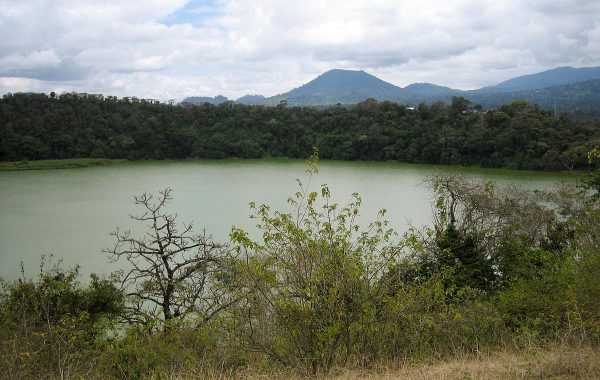
Comfort Safaris
Follow us on facebook.
African Big Cats Safaris

Camping Safaris
Safari & cultural experience, luxury safaris, contact details.
Headquaters: Arusha, Tanzania Whatsapp: +255 786 508 052 +255 689 981 444 [email protected]
Important Links
- Terms and Conditions

We sincerely thank our guests for their positive reviews, allowing us the opportunity to give back.
WhatsApp Chat
- Arusha, Tanzania
- [email protected]
- 24/7 Customer Support
Ngorongoro Walking Safari
Ngorongoro walking safari is a unique and active safari experience; a trekking safari provides a welcome break to sitting in a vehicle for days on end. While walking you have the opportunity to stalk wildlife, search for tracks, and mix with indigenous cultures. You will only need to carry your small daypack with water and personal gear for the day.
Detailed Itinerary
Start your walk early in the morning on the eastern side of the crater or according to your time of choosing. The track takes you through thick forests accompanied by an armed ranger around the contours of the Ngorongoro Crater rim with stunning views of the crater floor below. You walk on an easy animal trail and may encounter local Maasai with cattle.
Location: Ngorongoro crater rim Duration: 2.5 – 3 hours Difficulty: Medium ACTIVITY PRICE: FROM U$D 40 PER PERSON. (EXCLUDING TRANSPORTATION TO/FROM NGORONGORO).
End of Activity
Related activities, kikuletwa hot springs, kilimanjaro day hike to mandara hut and maundi creator, cooking class as an add on services at materuni village, materuni waterfall & coffee tour, maasai villages in ngorongoro, explore the magic of utopia safaris, best safari trips.
- Rwanda Experience
- 7 Days Special Safari
- 8 Days Migration Safari
- Honeymoon Experience
- Classic Kenya Adventure
- Bird Watching Tour
Important Links
- Privacy Policy
- Safari Updates
- Payment Terms
- Booking Terms & Conditions
- Tanzania Travel Guide
- + 255 787 664 033
- +255 783 714 288
- P.O. Box 12261 Kanisa Road,House No.6
Craft Your Dream Adventure
Beeadventure Safari
Destinations.

Serengeti National Park

- Ngorongoro Crater
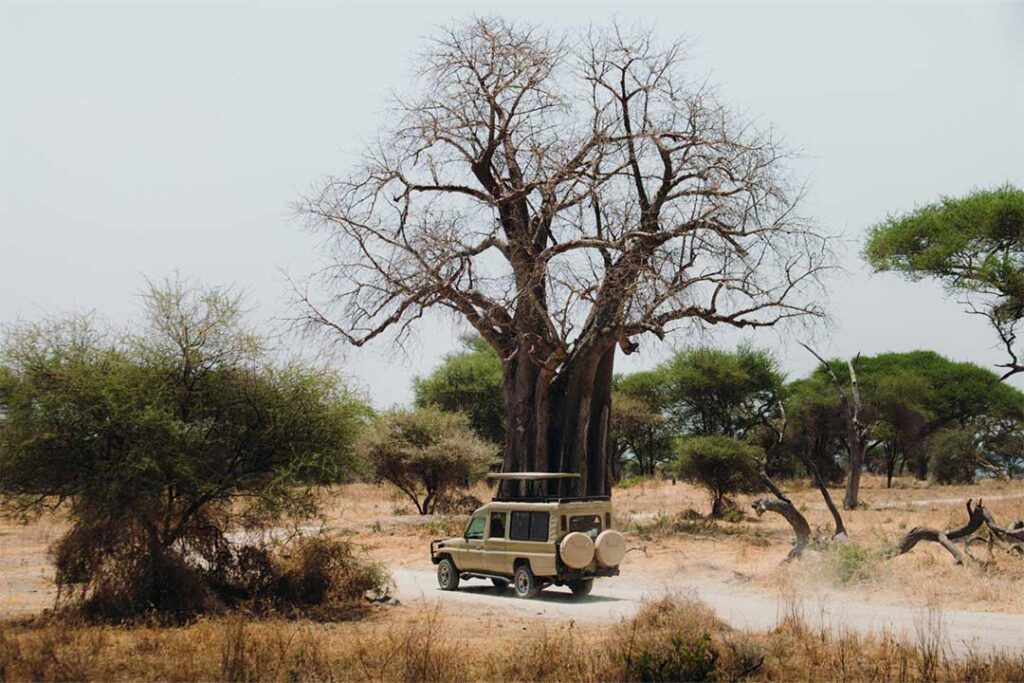
Tarangire National Park
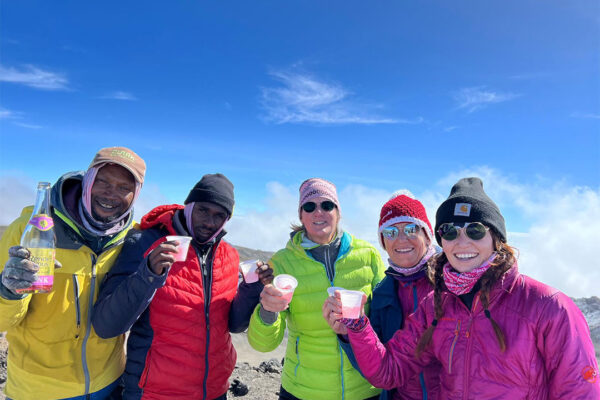
Mount Kilimanjaro
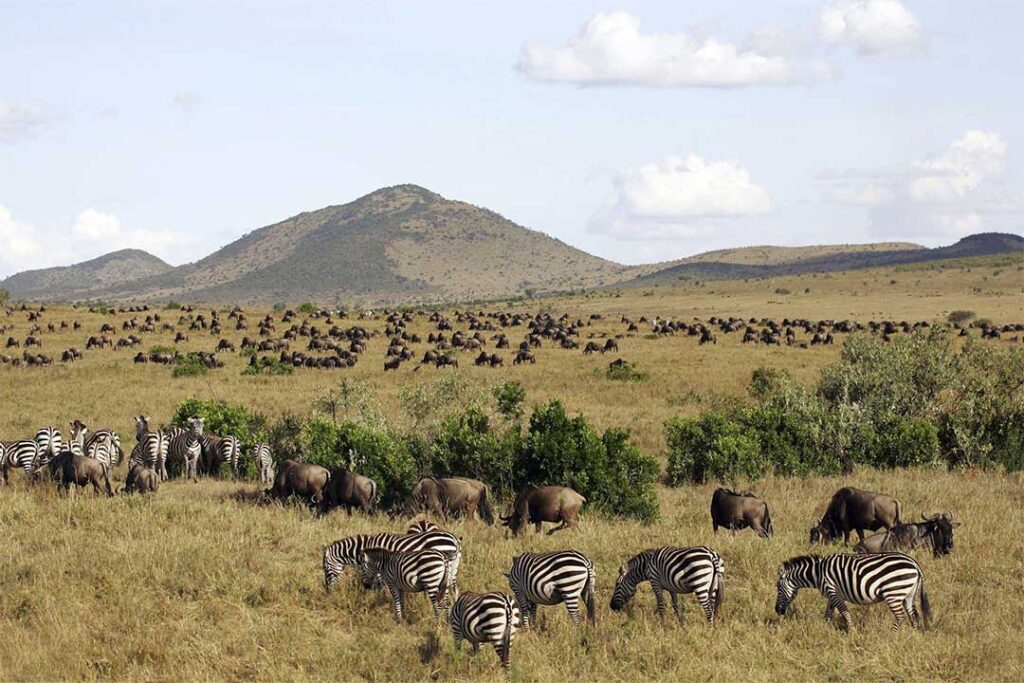
Maasai Mara Game Reserve
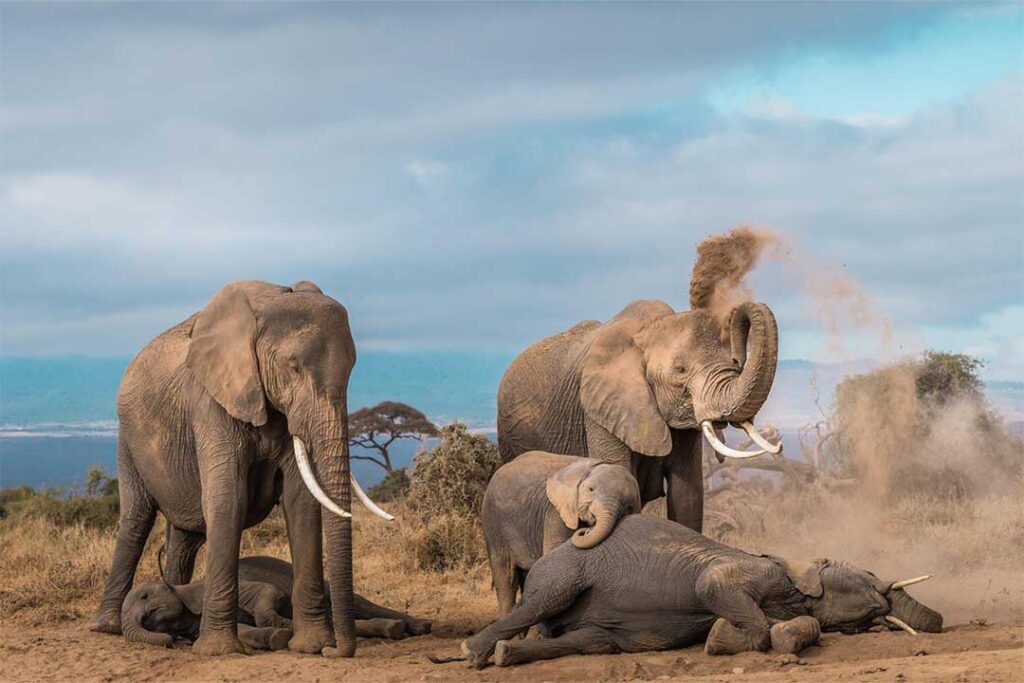
Amboseli National Park

Queen Elizabeth National Park
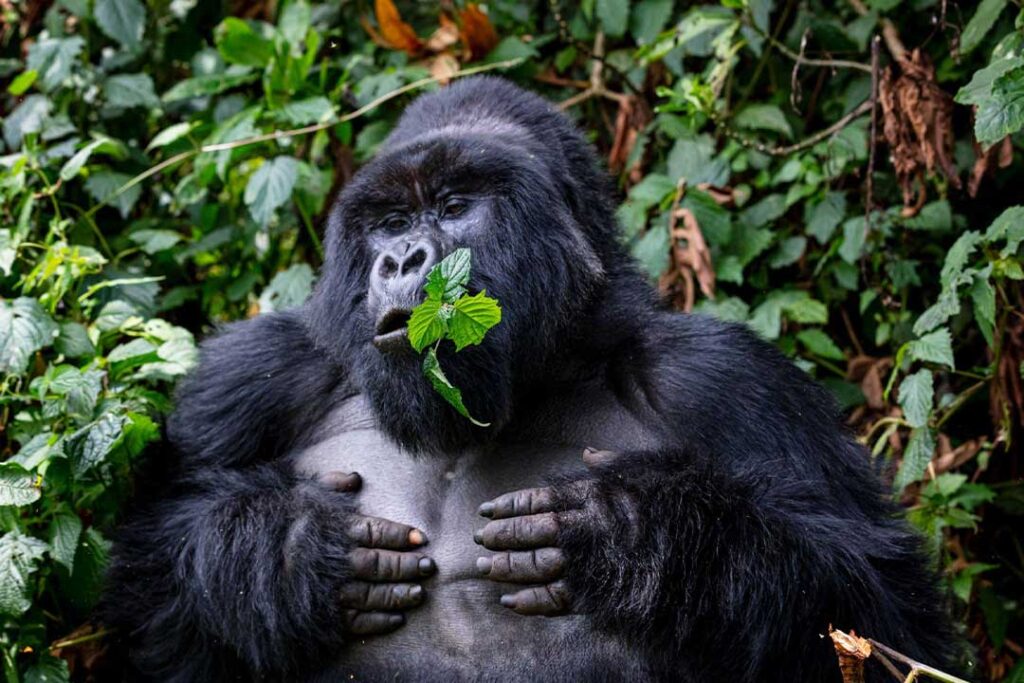
Volcanoes National Park
Mount kilimanjaro, mount kenya.
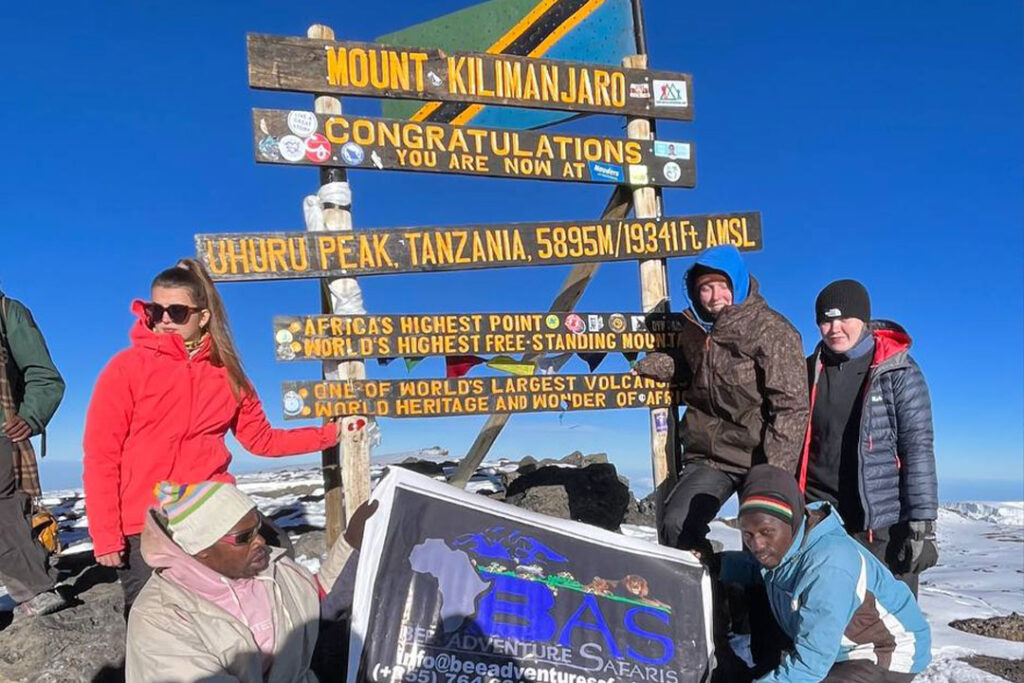
Lemosho Route
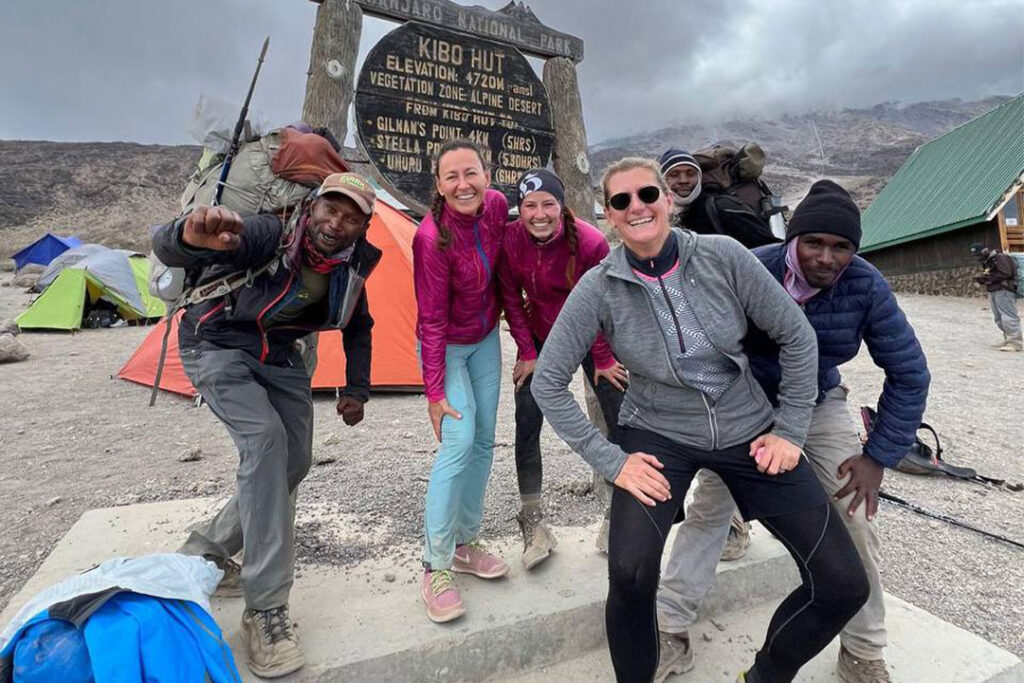
Marangu Route
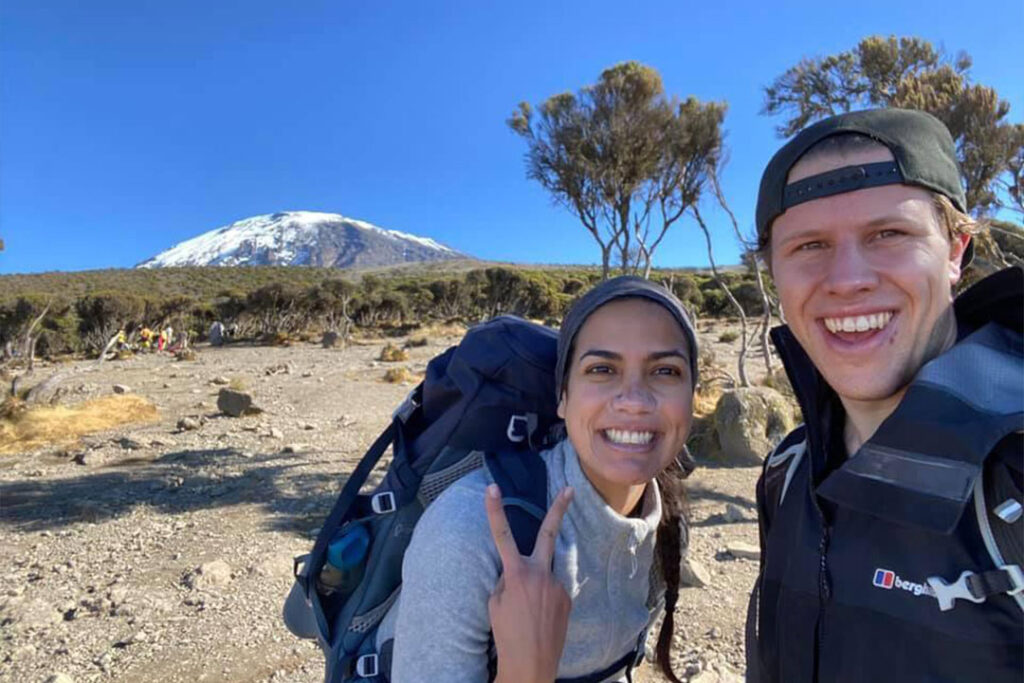
Machame Route
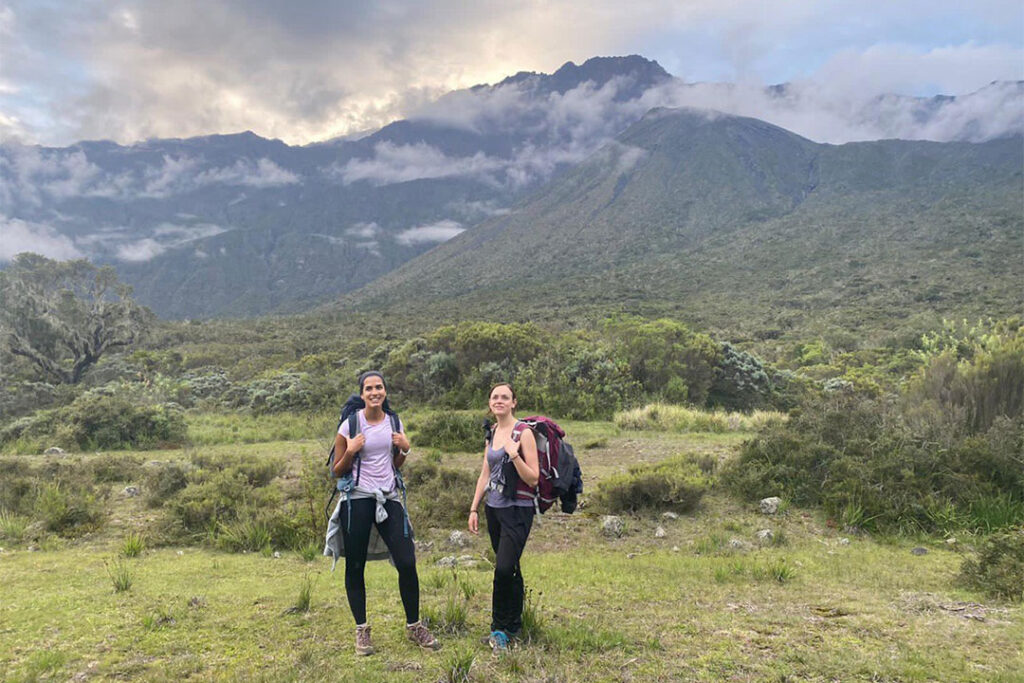
Meru Trekking
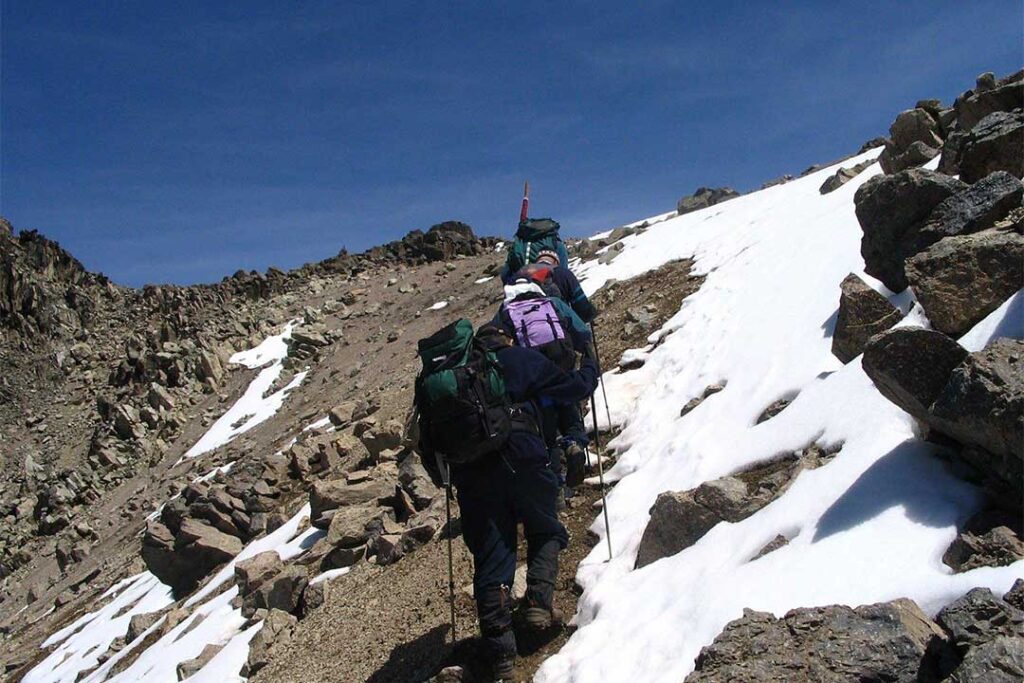
Chogoria Route
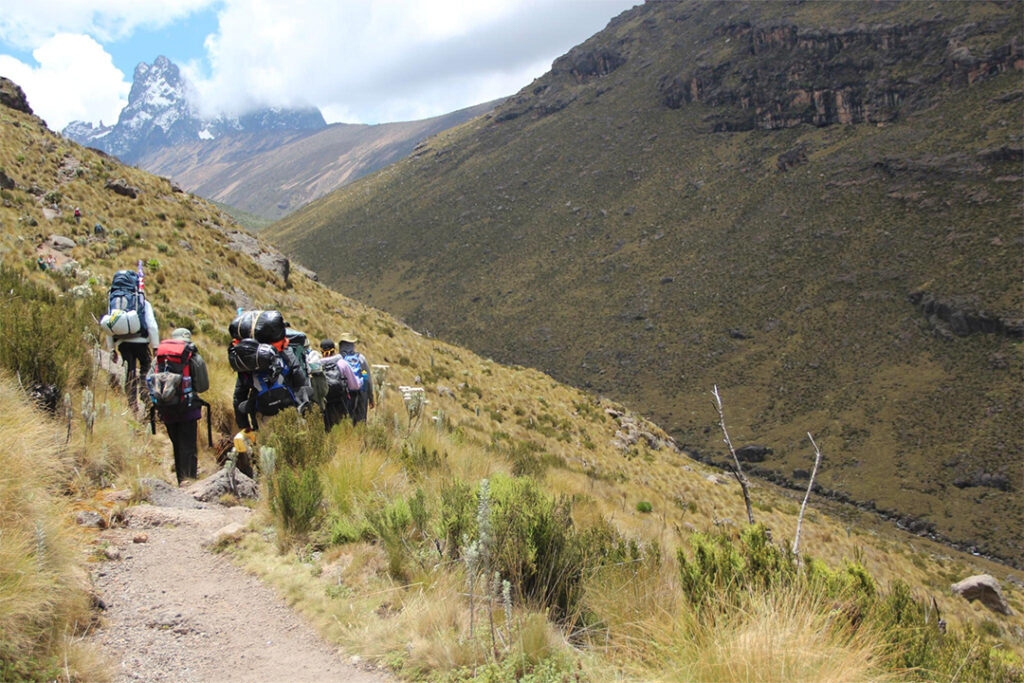
Sirimon Route
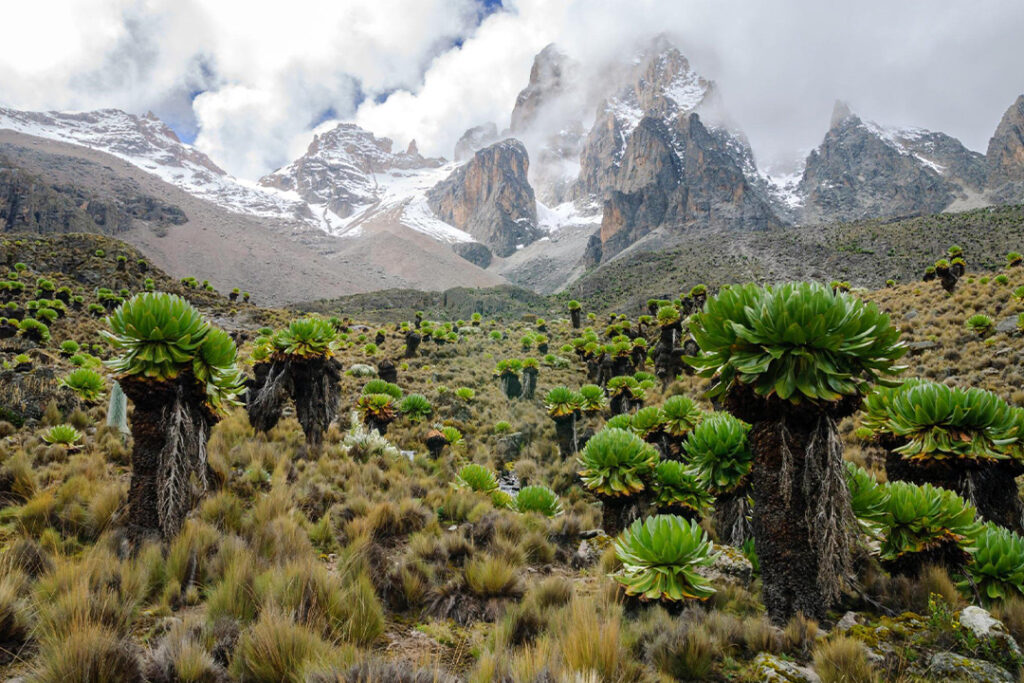
Timau Route
INCLUDED / EXCLUDED
- Transportation
- Park Entry Fee
- Professional Guide
- Airport Transfers
- Full Board Accommodations
- Government Applied VAT
- Tipping & Gratitude
- Arrival & Transit Visas
- Medical & Travel Insurance
- Drinks at the Hotel
- Drones Usage
- International Flight
Tour Highlights
- Ngorongoro Highlands
Tour Itinerary
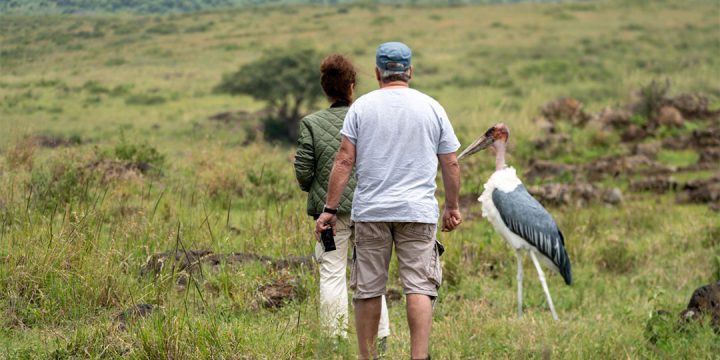
Day 1: Arrival at Kilimanjaro Airport - Arusha Town Upon your arrival at Kilimanjaro International Airport, our friendly driver guide will be there to warmly welcome you with a reassuring smile. Relax in the comfort of your vehicle as you're transported to your hotel in Arusha. Along the way, you'll catch a glimpse of this bustling, vibrant commercial city. Depending on your arrival time, you may either meet with your safari expert for a briefing today or arrange for a meeting the following day, just before the start of your safari. date-2 Day 2: Arusha - Olmoti Crater Start your day with an early breakfast before our driver picks you up at your hotel or lodge, equipped with picnic lunches. Your journey will take you to the Ngorongoro highlands, specifically the Nainokanoka Maasai village, passing through Lemala Gate. There, you'll embark on a brief walk to the village. After a satisfying lunch in the village, you'll begin your trek to Olmoti Crater, a shallow, grassy crater that serves as the source of the Munge River, which cascades through a rim gorge, forming a magnificent waterfall on its way to Ngorongoro Crater. You'll descend to the crater floor for some quality time amidst this breathtaking landscape and then ascend to Olmoti campsite for a restful dinner and an overnight stay. date-3 Day 3: Olmoti Crater - Bulati Following an early morning breakfast, you'll commence your walk from Olmoti campsite to Bulati. The trail takes you through the outer hills of the Great Rift Valley, and you'll traverse the open plains of the beautiful Embulbul depressions, often encountering antelopes, wildebeest, zebras, and other wildlife. By late afternoon, you'll reach Bulati, a typical Maasai village, where you'll enjoy a picnic lunch. Dinner and overnight accommodations await you at Bulati campsite. date-4 Day 4: Bulati - Empakaai Crater After breakfast, you'll depart from Bulati campsite with picnic lunches. Your trek takes you through Bulati village and onwards to Bulati Ranges, leading you to Empakaai Crater by midday. Lunch will be served at a campsite situated high above Empakaai Crater. This crater is renowned for its resident buffaloes, hyenas, antelopes, and the striking flamingoes that inhabit the soda lake at its floor. Your journey continues as you descend the forested crater slopes to the crater floor, allowing you to explore the lakeshore and the captivating soda lake. Later, you'll ascend to the Empakaai Crater campsite for dinner and an overnight stay. date-5 Day 5: Empakaai Crater - Naiyobi - Acacia Campsite Start your day with breakfast at Empakaai campsite, and then embark on a trek to Naiyobi with picnic lunches. The walk to Naiyobi typically takes around 4-6 hours, guiding you along a trail that skirts the rim of Empakaai Crater and leads you into a forest inhabited by animals like buffaloes and porcupines. Upon reaching Naiyobi around midday, you'll find this Maasai village located at the edge of the Ngorongoro Conservation Area. Here, you'll part ways with the armed ranger and continue your walk with a Maasai guide to the Acacia forest behind Naiyobi village. Lunch will be served at the campsite, where you'll also have dinner and spend the night. date-6 Day 6: Acacia Campsite - Lake Natron Following breakfast, you'll embark on the final leg of your trekking adventure. This leg involves a hike downhill to the Rift Valley escarpment, leading you to "Pembe ya Swala," a distinct point where our safari vehicle will be waiting to transport you to Lake Natron. Upon arrival, you'll visit the lake for a walking tour around its shores, with time to appreciate the stunning natural surroundings. In the afternoon, you'll return to the camp for a hot lunch and some relaxation. Later in the day, around 3 pm, you'll embark on a walk to the beautiful Natron waterfall, with a return to the campsite in the evening for dinner and an overnight stay at Lake Natron campsite. date-7 Day 7: Lake Natron - Arusha/Kilimanjaro International Airport After breakfast, you'll drive to Arusha or Kilimanjaro International Airport, passing through Mto wa Mbu for your drop-off, marking the conclusion of this remarkable trekking adventure. /*! elementor - v3.20.0 - 20-03-2024 */ .elementor-widget-image-carousel .swiper,.elementor-widget-image-carousel .swiper-container{position:static}.elementor-widget-image-carousel .swiper-container .swiper-slide figure,.elementor-widget-image-carousel .swiper .swiper-slide figure{line-height:inherit}.elementor-widget-image-carousel .swiper-slide{text-align:center}.elementor-image-carousel-wrapper:not(.swiper-container-initialized):not(.swiper-initialized) .swiper-slide{max-width:calc(100% / var(--e-image-carousel-slides-to-show, 3))} OUR DESTINATIONS
Discover east africa, what makes our trips different.
At Beeadventure Safari, we are firm believers that a vacation is about far more than just booking a hotel room, catching a flight, and securing a rental car. We see it as a holistic experience that transcends the individual components. Furthermore, we hold the belief that challenges have the power to foster personal growth, and a well-crafted journey has the potential to ignite the soul. Our mission is to curate exceptional journeys that hold value not only for the traveler but also for the local hosts and the world at large.
MORE CUSTOMIZATION
Build a tailor made trip in less time
MORE EXPERTISE
Push your boundaries and experience an adventure
MORE SERVICE
Feel Safe and supported while traveling
Receive open and honest consultation. Always
Head Office
- +255 764 681 260
- [email protected]
- Mianzini, Arusha, TZ
International Office
- +353 (86) 065 0749
- [email protected]
- Dublin, Ireland
- Ethical Climbs
- All Travel Deals
- Travel Jounals
- Kilimanjaro
- Nyerere National Park
- Zanzibar Beach
- The Great Migration
- Photographic Safari
- Family Adventures
- Honeymoon Safaris
- Kilimanjaro Full Moon Climbs
Terms & Conditions Booking Terms Privacy Policy Cancellation Policy
Let's get planning your Adventure
11 Days Ngorongoro Walking safari and Oldoinyo Lengai trekking
11 days walking safari.
$ On Request
No size limit
Northern tanzania.
Ngorongoro walking safari and Odoinyo Lengai trekking provides you with the real exposure to the natural African beauty and the wildlife. Escorted by full armed ranger and the maasi warriors you will trek to embulbul, empakai crater and finally to Ngaresero area which is the starting point for trekking Oldoinyo Lengai. This active volcano is located along the Eastern branch of Great Rift Valley on the southern shore of Lake Natron. The shape of Oldoinyo lengai is almost perfect conical shape and it rises 9650ft above sea level has been experiencing occasional volcanic eruptions over historical time. The occasional eruption made the Maasai people who are the local tribe in the area to call it the scaring mountain of God. Oldoinyo Lengai erupt Sodium Carbonate lava which is said to have low temperature compared to other types of Lava therefore it is quite possible to walk on the still steaming ground. This trip will also takes you to Lake Manyara, Serengeti, Ngorongoro crater and Lake Natron which is the breeding site for the flamingo birds.
National park entrance fees.
Full board accommodation on tour.
Service of an English speaking driver guide.
Transport based on an excellent 4*4 Vehicle rebuilt for Safari.
Game drives as per the Itinerary.
Government taxes.
Airport Transfer
Meals (as specified in the day-by-day section)
Items of a personal nature
Laundry Services
Insurance & Visa fees
Tour Itinerary
Day 0 - arrive in tanzania.
You will be picked up at the Kilimanjaro International Airport and transferred to Moshi town. You will meet your driver guide who will brief you on your upcoming safaris, then rest until the next day morning.
Day 1 - Lake Manyara National Park
After breakfast, depart for Lake Manyara National Park for game drive, Lake Manyara is a shallow freshwater lake in Tanzania. It is said to be the “loveliest (lake) … in Africa,” Lake Manyara is covering 127 square miles (329 km2) of Lake Manyara National Park, the lake’s alkaline waters cover approximately 89 square miles (231 km2). It is famous for a good number of baboons and birdlife, also home to herbivores such as hippos, impalas, elephants, wildebeests, buffalo, warthogs, and giraffes, giant fig trees and mahogany seen in the groundwater forest immediately around the park gates, and then proceeds to Haven Nature Campsite in order to stay overnight on Full Board basis.
Day 2 - Serengeti National Park
After breakfast, drive to the Serengeti National Park with an optional – via Olduvai Gorge (Millions of years ago, the site was that of a large lake, the shores of which were covered with successive deposits of volcanic ash. Excavation work there was pioneered by Louis and Mary Leakey beginning in 1931. The Serengeti National park covers 14,763 km² (5,700 square miles) of grassland plains and savanna as well as river trine forest and woodlands. The park lies in the north of the country, bordered to the north by the national Tanzania and Kenyan border, where it is continuous with the Masai Mara National Park reserve. Stay overnight at Seronera Campsite in order to stay overnight on Full Board basis.
Day 3 Full Day at Serengeti National Park
Spend a full day game drives in Serengeti plains; the endless, almost treeless grassland of the south is the most emblematic scenery of the park. . Other hoofed animals – zebra, gazelle, impala, hartebeest, topi, buffalo, and waterbuck – also occur in huge numbers thru out the year. Stay overnight at Seronera Campsite – on Full Board basis.
Day 4 - Serengeti – Ngorongoro Conservation Area Authority
Wake ups call at 6:00am, in order to have just a cup of hot coffee then proceed for the early morning game drive, this morning game drive is very important as you will be able to witness the early morning kills from the big five only if you will be lucky enough. After the game drive back to the camp/Lodge at 9:30am in order to have your main breakfast, there after you will check out the Lodge and proceed with game drives en–route to Ngorongoro Conservation Area Authority. Stay overnight at Simba Campsite – with fascinating view of the crater floor!
Day 5 - Ngorongoro Crater Game Drive
Head for the spectacular Ngorongoro Crater – a wonder of the natural world – and descend into the crater for the park maximum 6-hour tour of the Crater floor. Ngorongoro Crater is the world’s largest caldera measuring 600 meters in depth and covering 250 square kilometres in area. The crater is a stunning setting and contains an abundance of wildlife with over 20,000 large animals including Tanzania’s few remaining black rhino. The Ngorongoro Conservation Area is unique in that over 40,000 Masaai pastoralists with their cattle, goats and sheep live alongside the abundant wildlife in relative harmony. Return to Simba Campsite for dinner and overnight on Full Board basis.
Day 6 -Drive to Nainokanoka/ Trek to Bulati
Today you will start the Ngorongoro walking safari by heading to Nainokanoka by 4WD, where you will commence a spectacular 4-day walking safari with your private Maasai guide, a cook plus donkeys to carry supplies. We leave Nainokanoka for a full day’s walking to Bulati Village Campsite in order to stay overnight on Full Board basis. Plan on approx 5 to 6 hours of walking each day over the next 4 days. This special trek offers you fresh air, peace and serenity in the wilderness, along with authentic cultural interaction with the Masaii, plus panoramic views of Mount Kilimanjaro, Mount Meru, Olmoti and Lolmasin. Other sights include Empaki crater, the famous Lake Natron flamingos, and for those who are very fit, the optional opportunity to climb the “Mountain of God” (Ol Doinyo Lengai). This trek can be combined with a northern circuit lodge or camping safari, please inquire if you are interested in more game viewing or encounters with different tribes. Stay overnight at Bulati Village Campsite on Full Board basis.
Day 7 - Bulati to the Empakaai Crater Rim
Today we continue with Ngorongoro walking safari to Empakaai Crater. Dinner and a scenic overnight stay tonight on the rim of Empakaai Crater. Bushbuck, buffalo and blue monkey can be seen on the rim, which boasts splendid views on a clear day to Ol Doinyo Lengai Volcano, Mount Kilimanjaro and Lake Natron. Stay overnight at Empakaai Crater Rim Campsite on Full Board basis.
Day 8 - Empakaai Crater Hike / Trek to Nayobi village
This morning proceed with the Ngorongoro walking safari by descend into Empakaai crater. The crater is 300 meters high with almost half of the floor filled by a pristine soda lake. Later, we hike to Nayobi village. Dinner and overnight will be camping on the grounds at the Nayobi school. Stay overnight at Ngaresero Campsite on Full Board basis.
Day 9 - Finish Trek / Drive to Surreal Lake Natron
For those interested in climbing Ol Doinyo Lengai, we can arrange your trek for an extra fee of US$ 120 per person and you can start the ascend approximately 2:00am). Our 4WD will drop you off at the base of the mountain starting point and your driver will be waiting for you until you descend so that you can proceed to Ngaresero Campsite where you will stay overnight on Full Board basis.
Day 10 - Return Back to Arusha / Kilimanjaro International Airport
Early this morning, You are free to relish at the sight of the million or more Lesser Flamingos that flock here (the best time for the flamingos on Lake Natron is between August to October, when breeding behaviours are peaking) and the dramatic desert scenery all around you. At the right time, you will begin your drive back to Arusha town. For those departing on the evening KLM flight tonight, you have the choice of either a direct drop off at Kilimanjaro International Airport or we can arrange an overnight Arusha at Planet Lodge Arusha on Bed and Breakfast basis. End of Service
Book This Tours

Speak To Our Expert
Call/ WhatsApp +255 754 405 771 [email protected] / [email protected]
Our Associations

- [email protected] [email protected]
- +255 754 405 771

6 days Ngorongoro Crater Rim, Empakaai & Lake Natron Walking Safari
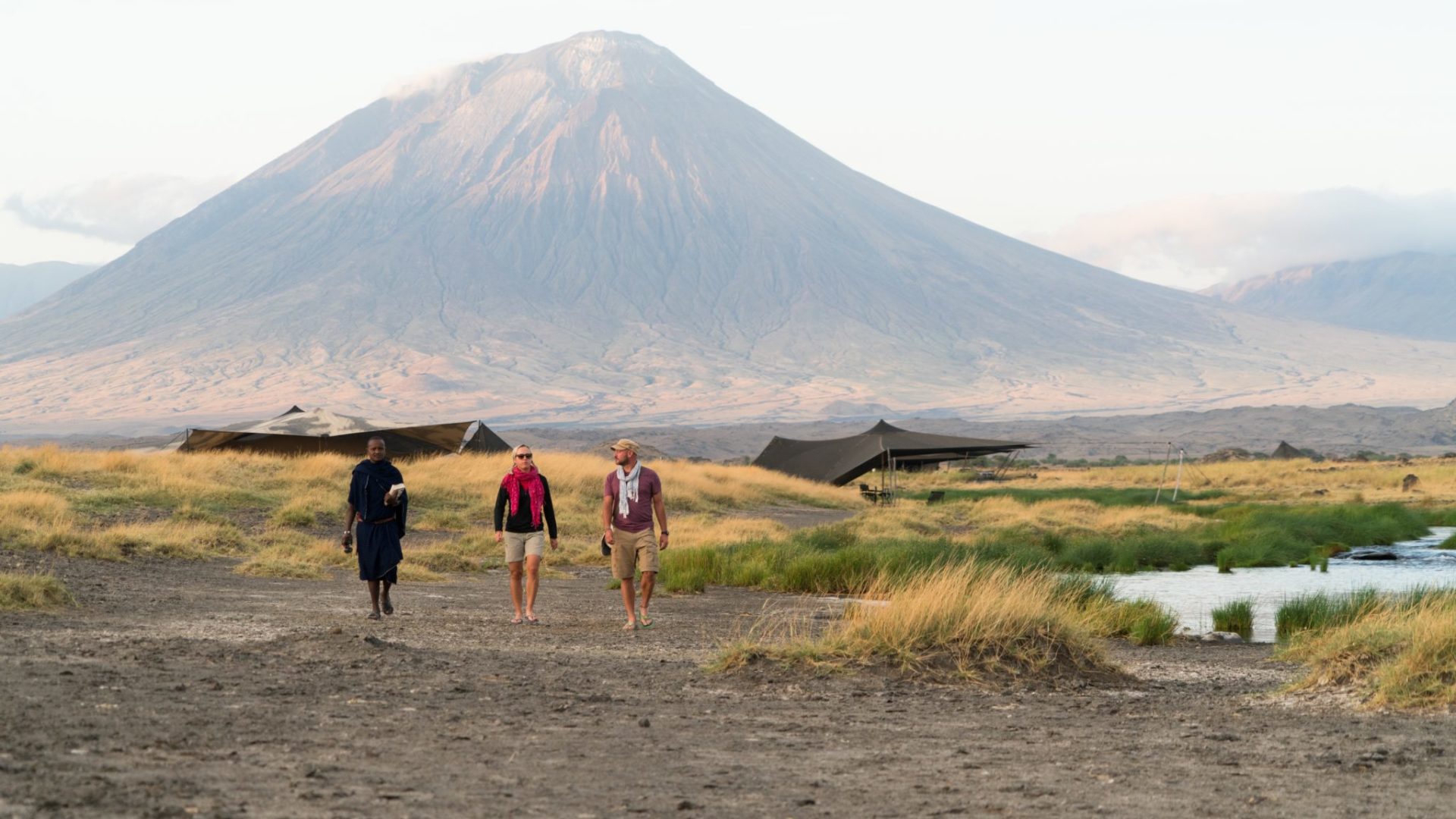
- Includes/Excludes
- Tanzania Safaris
This is an active 6-day safari adventure that combines the best of Tanzania’s national parks with an unforgettable hike from Empakaai Crater to Lake Natron. Prepare to be captivated by diverse wildlife, breathtaking landscapes, and the raw beauty of untouched Tanzania. This unique itinerary takes you on a journey through some of the most iconic destinations, providing opportunities to witness the Big Five and immerse yourself in the tranquility of the wilderness. From the vast plains of Tarangire National Park to the ancient Ngorongoro Crater, and from the challenging hike accompanied by Maasai guides to the lunar beauty of Lake Natron, every moment of this safari promises to be epic. Experience the magic of Tanzania as you camp under the stars, listen to the sounds of the bush, and create memories that will last a lifetime. Let Tranquil Kilimanjaro be your guide to this remarkable Tanzanian odyssey.
Day to Day Itinerary of the 6 days Walking Safari
Day 1: Arrival in Arusha, transfer to accommodation.
Day 2: Arusha to Tarangire National Park, game drive, overnight in Karatu.
Day 3: Ngorongoro Crater exploration, drive to Empakaai Camp. Day 4: Hike from Empakaai Crater to Acacia Camp with donkeys.
Day 5: Hike from Acacia Camp to Lake Natron, overnight at Lake Natron Tented Camp.
Day 6: Sunrise at Lake Natron, return to Arusha.
6 days Ngorongoro Crater Rim, Empakaai & Lake Natron Walking Safari Highlights
- Explore Tarangire National Park and witness its diverse wildlife, including elephant families and predators like lions and leopards.
- Discover the Ngorongoro Crater, a pristine wilderness with sweeping savannah, glistening lakes, and a chance to spot the endangered black rhino.
- Experience the breathtaking views of Empakaai Crater and Lake Natron, surrounded by stunning landscapes and the sound of nature.
- Embark on a 2-day hike from Empakaai Crater to Lake Natron, accompanied by Maasai Guides and donkeys, camping under the stars in the bush.
- Encounter picturesque Maasai villages and rolling hills along the hike, immersing yourself in the local culture and natural beauty.
- Stand atop mountains with 360-degree views and feel the power emanating from Ol Doinyo Lengai, an active volcano.
- Witness the incredible beauty of Lake Natron, known for its reddish color and as a breeding ground for millions of flamingos.
- Enjoy the serenity of Lake Natron at sunrise, capturing unforgettable moments and experiencing its unique lunar-like beauty.
- Return to Arusha, reflecting on the extraordinary landscapes, wildlife encounters, and cultural experiences of the safari.
Best time for this 6 day Walking safari
The best time for this safari is during the dry season, which generally falls between December-March, and June to October. During this period, the weather is generally dry, and wildlife congregates around water sources, making it easier to spot animals. The temperatures are pleasant, and there are fewer mosquitoes. However, it’s important to note that Tanzania’s weather patterns can vary, and wildlife sightings are possible throughout the year. It’s always recommended to check with your tour operator for the most up-to-date information and to plan your safari accordingly.
Arrive in Arusha
Upon arrival in Arusha, you will be welcomed by a Tranquil Kilimanjaro representative and transferred to your accommodation. Take this day to rest and prepare for the upcoming adventure.
Accommodation: Arusha Planet Lodge
Arusha to Tarangire National Park
Embark on a drive to Tarangire National Park, known for its diverse wildlife and stunning landscapes. Experience encounters with elephants, zebras, wildebeest, buffalo, and giraffes. Enjoy a picnic lunch inside the park and later head to your accommodation in Karatu for dinner and relaxation.
Accommodation: Eileen’s Tree Inn
Ngorongoro Crater to Empakaai Camp
Explore the magnificent Ngorongoro Crater, home to the endangered black rhino and an array of wildlife. Drive to Empakaai Camp, located near the Empakaai Crater, where you will camp for the night. Enjoy breathtaking views of the crater and lake as you camp under the stars.
Accommodation: Camping in tents at Empakaai Camp
Empakaai Crater to Acacia Camp
Embark on a hike from Empakaai Crater to Acacia Camp, accompanied by Maasai guides and donkeys. Trek through picturesque Maasai villages and rolling hills, witnessing stunning landscapes along the way. Set up camp at Acacia Camp and enjoy a night in the wilderness.
Accommodation: Camping in tents at Acacia Camp
Acacia Camp to Lake Natron
Continue your hike from Acacia Camp to Lake Natron, taking in the incredible scenery and feeling a sense of solitude in nature. Experience the lunar beauty of Lake Natron and witness the millions of flamingos that call it home. Rest and enjoy the surroundings at Lake Natron Tented Camp.
Accommodation: Lake Natron Tented Camp
Lake Natron to Arusha
Witness the sunrise on the shores of Lake Natron, a truly memorable experience. Explore the lake and its unique features before returning to camp for breakfast. Afterward, embark on the journey back to Arusha, where the safari comes to an end.
The cost for the whole 6 Days Tanzania walking safari includes and excludes the following items
Tanzania Safari Price includes
Game drives and activities
All accommodation
A professional driver/ safari guide
All transportation
All Taxes/VAT
Roundtrip airport transfer
Water / Coffee / Tea or Soft Drinks
Price Excludes
International flights
Additional accommodation before and at the end of the tour
Tanzania Visa
Personal Expenses (e.g. laundry, telephone, beverages, etc.)
Meals not listed above
Government imposed increase of taxes and/or park fees

You May Also Like
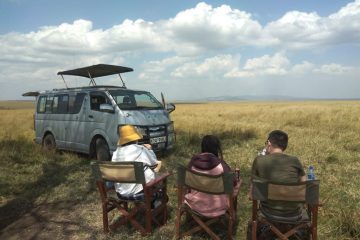
8 Days Kenya - Tanzania Safari
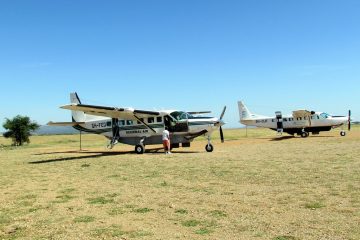
3 days Tanzania Safari from Zanzibar
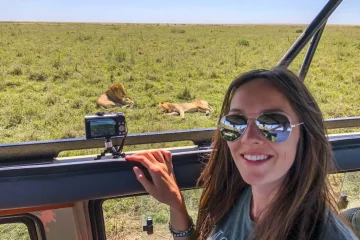
4 Days Tanzania Safari from Zanzibar
Please enable javascript in your browser to visit this site..
[email protected]
+255784424268.
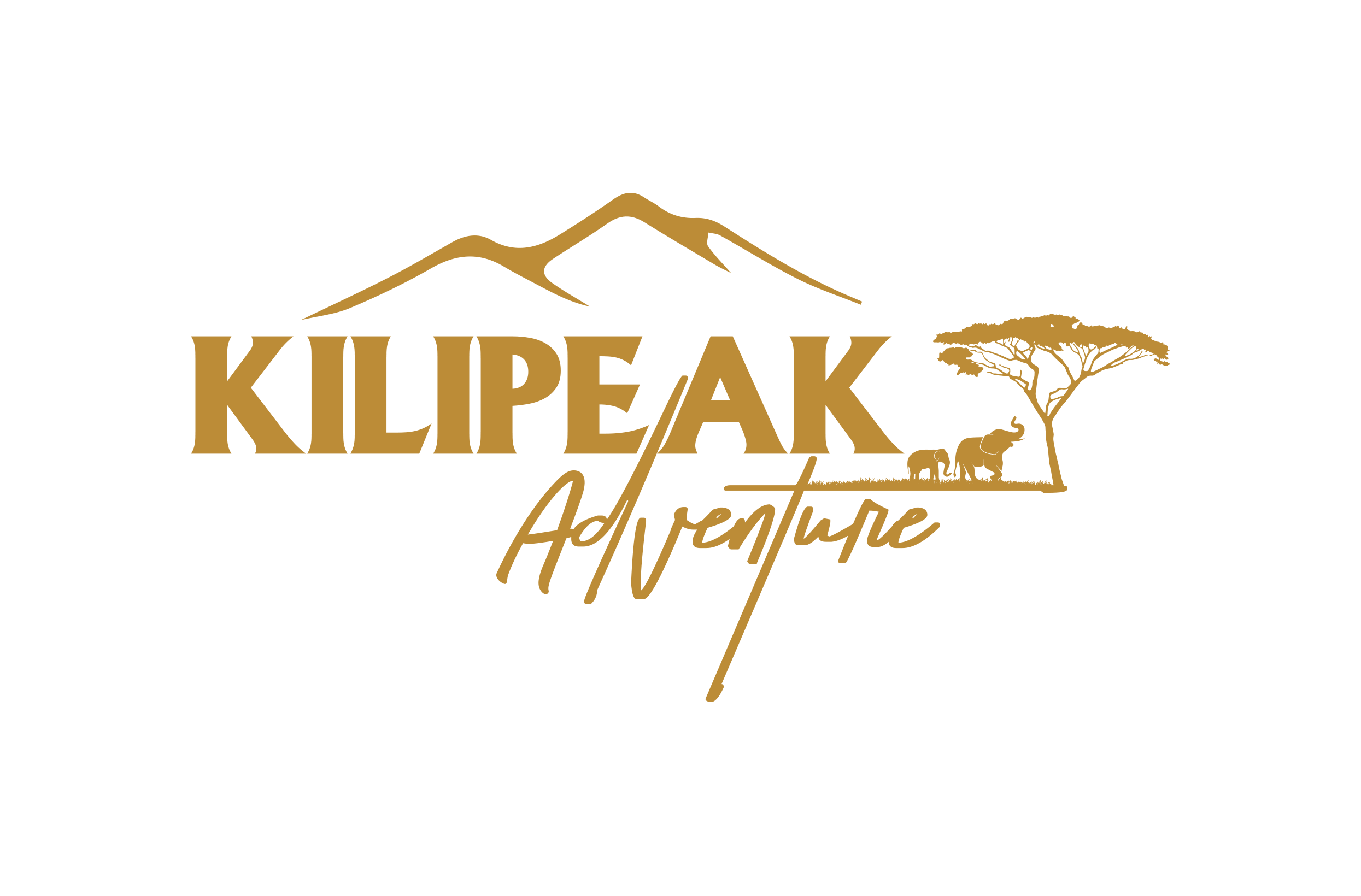
8 Days Tanzania Walking Safaris to Ngorongoro & Lake Natron
Walking Safari Itineraries , Lake Manyara National Park , Ngorongoro Crater
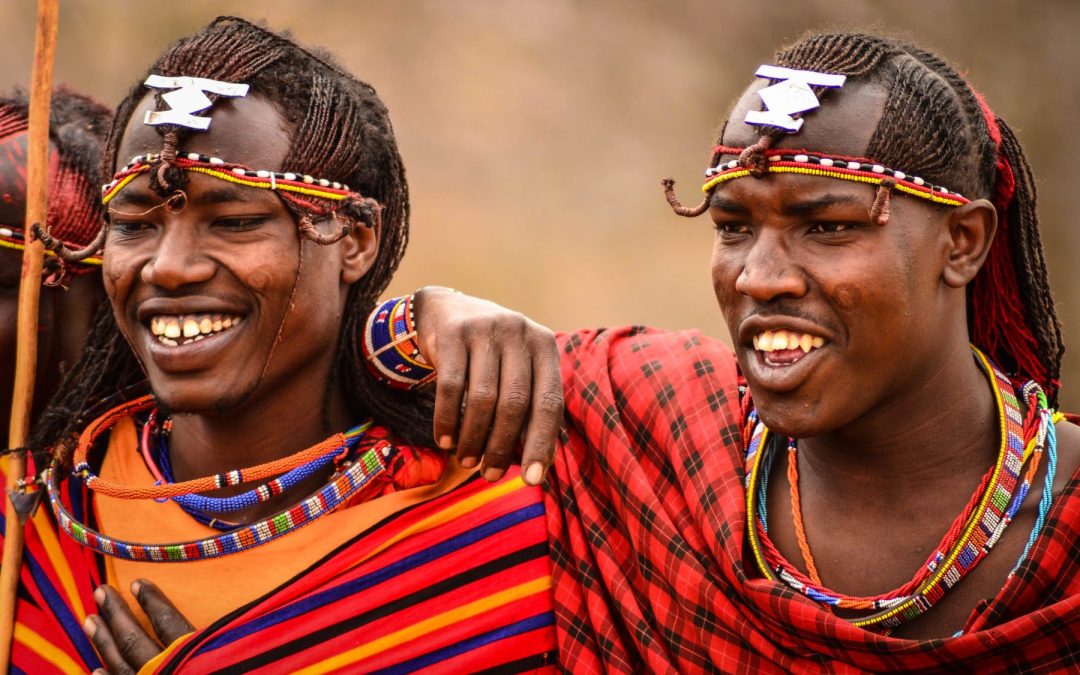
Program Highlights
8 Days Tanzania Walking Safaris to Ngorongoro & Lake Natron, Experience the spectacular scenery of the Ngorongoro Highlands where indigenous Maasai people live in their traditional ways and climb the Maasai Mountain of God, an active volcano. For active types, Tanzania has a lot to offer and this is one of the most dramatic hikes in East Africa. As well as the amazing scenery there is also the chance to witness the changing lives of the Maasai in both Ngorongoro and Natron.
Program Description
Day 1: arrive in tanzania..
Arrive any at Kilimanjaro International Airport you will meet us at the arrival point with the signboard written your names on it. We will arrange a pick up transfer from the airport to Arusha at Masailand Safari Lodge to prepare for your safari adventure. Dinner and overnight at Masailand Safari Lodge : Bed, and Breakfast.
Day 2: Arusha – Ngorongoro Crater.
Today we visit the largest intact volcanic crater in the world, the magnificent Ngorongoro Crater. At more than 2,000 feet deep and 12 miles in diameter, the Ngorongoro Crater has one of the largest concentrations of wildlife in Africa. 30,000 animals make their home in this crater, making it an ideal place for sightings of the ‘big 5′ – lion, elephant, rhino, buffalo, and leopard. We enjoy a game drive and picnic lunch in the crater, also known as the ’8th Wonder of the World’. Dinner and overnight at Ngorongoro Simba Campsite: Full board.
Day 3: Ngorongoro Conservation Area – Empakaai Crater.
After breakfast, we drive to Olmoti Crater for a half-day walk. Often we meet Maasai on the way. We walk to the waterfalls at the crater for a picnic lunch. In the afternoon we drive to our base camp at Empakaai Crater Rim (If you have an extra day this part of the journey could also be done on foot.) You will experience the serenity and quiet beauty of this wild spot. Surrounding the lake are many springs, where the wildlife is plentiful. In the lake, there are many flamingos. Dinner and overnight at Empakaai Campsite: Full board.
Day 4: – Rift Valley Scarp.
Dawn rises and our lofty position affords a great sunrise. As we take breakfast our camp crew break camp and depart to send the camp ahead with donkeys. We then set off hiking with Maasai guides following a route that takes us through picturesque Maasai villages and rolling hills. Lunch can be taken on the route as a picnic or if guests are very fit a late lunch can be had in camp. In the late afternoon a hike up to a nearby viewpoint is highly recommended and a great place for sundowners. Dinner and overnight at Engaresero Campsite: Full board.
Day 5: Empakaai Crater – Olmoti Crater.
Today we walk from Empakaai to Acacia Campsite. We descend the outer hills of the Great Rift Valley, walk through the open plains of the Embulbul depression, and pass through Nairobi village. We again have the opportunity to meet the local Maasai. Ol Doinyo Lengai and Mount Meru are seen along the way. Donkeys carry our luggage or it will be shuttled by car. Dinner and overnight at Engaresero Campsite: Full board.
Day 6: Walking Oldonyo Lengai Mountain.
Today we walk to Oldonyo Lengai, the single active volcano mountain in Tanzania. The name means the Holy Mountain or mountain of God in Maasai. The steep trail will lead us down into the Rift Valley escarpment. After 5-6 hours of walking, we reach the foot of the inspiring mountain. Here you can decide if you want to camp at the Chini Ya Mlima campsite, or want to proceed to the Engaresero campsite, which is much more comfortable (showers!) and less hot both campsites are in the Lake Natron area. After hot lunch at the camp proceed to Lake Manyara for a night. Dinner and overnight at Nsya Campsite: Full board.
Day 7: Game Drive Lake Manyara National Park.
We depart from the Camp in Mto Wa Mbu Village and proceed to Lake Manyara National Park. Although small in size, this park is one of the most diverse reserves in the country. Lake Manyara covers two-thirds of the park. At the backdrop is the wall of the Great Rift Valley, before which lies the groundwater forest, areas of open grassland near the lake foreshore, and the Soda Lake. We enjoy a picnic lunch in this area, which consists of open grassy areas, hot springs, dense woodlands, and steep mountainsides. Lake Manyara National Park is a birding paradise that has more than 350 species of bird. The park is also famed for its unique and elusive tree-climbing lions. Dinner and overnight at Masailand Safari Lodge : Bed, and Breakfast..
Day 8: Departing Day.
Today we continue with a morning visit in Arusha town there is an opportunity to shop and visit the Cultural Center, Maasai Market and then transfer to the Airport for the afternoon/evening flight for the next adventure or fly back home.
8 Days Tanzania Walking Safaris to Ngorongoro & Lake Natron Includes. • WFR Trained guide • Ngorongoro entry fees • NCAA Empakai private campsite fees • Ranger fees • Meals as described • Limited stock of red wine/beers/ sodas • Tea / coffee / hot chocolate • Donkeys to carry guest luggage to Natron • 2 nights Expedition ‘Fly-camping’ • 2 nights Lake Natron Camp • Activity fees Ngare Sero • Village fees Ngare Sero • Wildlife Department fees • Gate fees Longido • Gate fees Engaruka • Gate fees Ngorongoro District 8 Days Tanzania Walking Safaris to Ngorongoro & Lake Natron Excludes. • Any changes to the itinerary requiring the change of route or accommodation • Items of a personal nature • Personal evacuation insurance/travel insurance
WHAT TO WEAR • Sun hat • sunglasses • head torch • buff or lightweight neck gaiter (for keeping out dust) • rain shell • light fleece • long sleeve t-shirt x 2 • hiking trousers (zip-off style are recommended so you have shorts too) • waterproof trousers • socks x 3 pairs • hiking shoes preferably with some decent ankle support • Teva or flip flops for in the camp • walking poles • gaiters for those that have low cut hiking shoes • water bottles x 3 enough to hold 3 Liters
Start Quote Request Form
Itinerary name: 8 days tanzania walking safaris to ngorongoro & lake natron, online payment methods.
Kilipeak Adventure specialized in tailor-made and custom-made tour programs. Our team of experts is experienced in arranging and planning wildlife safaris, special trips for couples, family, honeymoons and professional groups.
- You are here:
- Tanzania Tours
Serengeti Wakanda Tours and Safaris
7-Day Serengeti, Ngorongoro, Tarangire, Walking Safari

5.0 /5 – 467 Reviews
$1,870 pp (USD)
Your request will be sent directly to the operator
If preferred, you can contact the operator directly
Discover an affordable private tour through the Northern Circuit's wildlife wonders, including Tarangire, Serengeti, and Ngorongoro, with chances to encounter the Big Five. Highlighted by a unique Serengeti walking safari, you will travel comfortably in a 4x4 safari vehicle with a pop-up roof for excellent wildlife viewing and limitless game drives. You will experience camping in the heart of the Serengeti and at the Ngorongoro Crater's rim for an unforgettable adventure.

Tour Features
Budget tour.
This budget tour includes camping and hotels.
Private tour
This tour will be organized exclusively for you and won't be shared with others.
Can start any day
If availability permits, this tour can start on any day.
Can be customized
You can request minor changes to the accommodations and destinations of this tour.
Not for solo travelers
Solo travelers cannot book this private tour.
Minimum age of 7 years
The minimum age for this tour is 7 years.
Activities & Transportation
Accommodation & meals.
- Additional accommodation before and at the end of the tour can be arranged for an extra cost
- Day Accommodation Meals

- 3-5 Seronera Public Campsites Budget camping inside Central Serengeti – All Meals Included All Meals Included
- 6 Ngorongoro Simba Campsite Budget camping on the crater rim of Ngorongoro Crater – All Meals Included All Meals Included
- 7 End of tour (No accommodation) – Breakfast & Lunch Included Breakfast & Lunch Included

Interested in This Tour?
Request a Quote
- We advise requesting quotes from 3 operators ( Learn why )
- Requests are sent directly to the tour operator
- If preferred, you can contact the tour operator directly
Best price guarantee
- This tour is offered by Serengeti Wakanda Tours and Safaris , not SafariBookings.
- This operator reserves the right to change rates advertised on SafariBookings.
- If you request changes to this tour, the advertised rates will likely change.
- The exact order, contents and rates of this tour are subject to availability.
- If an accommodation is fully booked, the operator will suggest a comparable alternative.
- What is included in this tour
Get a Free Quote
- More About This Operator
Customer Reviews

Fantastic trip from start to finish! Can absolutely recommend Serengeti Wakanda Tours and Safaris to anyone who wants to go on a Safari in Tanzania, both the service and the experience were fantastic! The guide Benjamin did an amazing job!...
Full Review

Bobby Camping Safaris Tanzania

CAMPING SAFARIS
Lodging safaris, combo safaris.

- 6 DAYS UMBWE ROUTE
- 6 DAYS MARANGU ROUTE
- 7 DAYS RONGAI ROUTE
- 7 DAYS MACHAME ROUTE
- 5 DAYS MARANGU ROUTE
- 9 DAYS LEMOSHO ROUTE
- CANOEING SAFARI
- Tanzania weather
- TRIP SUMMARY
- DAY TO DAY ITINERARY
- BOOK THIS TOUR
OUR SPECIALITY..!
Plan your walking safari Ngorongoro crater with us . Therefore, this starts at Ngorongoro Highlands to the base of Oldonyo Lengai. Then it ends at the shores of Lake Natron.
This Walking safari Ngorongoro crater package will take you from a visit to Ngorongoro Crater. Also you will visit, Olmoti Crater, Lolmalasin Mountain, Empakai Crater and ending at the foothills of Oldonyo Lengai. Fianally, you will visit Lake Natron.
Short overview
The Walking safari Ngorongoro crater tour has a mixture of driving plus hiking with Maasai Warriors and their Donkies that will be carrying all your luggage. Hope you enjoy your walking safari Ngorongoro crater tour.
6 Days Tanzania Hike The Ngorongoro Highland Program
- Private safari ensures personalized service from the guide
- Visit four game reserves with entrance fees included
- Enjoy a mix of hotel and camping accommodations and meals
- Convenient ground transport includes an airport arrival transfer
What to Expect
Day 00: Kilimanjaro International Airport to Arusha
Day 01: Arusha to Ngorongoro Crater
Day 02: Ngorongoro Crater to Olmoti Crate r
Day 03: Olmoti to Lolmalasin Mountain to Empakai
Day 04: Empakai to Nayobi to Acacia Camp
Day 05: Acacia to Lake Natron
Day 06: Lake Natron to Arusha
Price Includes :-
GROUP JOINING SAFARIS
Our guided Tanzania Joining Safaris Groups where you will be grouped with fellow travelers. We operate a range of small group safaris for a more sociable Africa experience. All of our scheduled Tanzania Joining Safaris Groups use vehicles with a maximum of six passengers, all guaranteed a window seat and standing space through the roof hatch when game viewing.
Group-joining safaris have increasingly become popular these days. It is a type of safari wherein a traveler or group of travelers join other like-minded adventurers on a safari.
IN THE WORDS OF OUR HAPPY CLIENTS
We have been receiving reviews from our served clients and Bobby Camping Tours is rated 5/5 by customers. This honor is given to us by customers because we always remain committed to all our customers to do whatever is needed by them to make their safari fully satisfied.

Ngorongoro Crater safari | Travel guide
The Ngorongoro Crater in the Great Rift Valley in northern Tanzania is unique as it is the world’s largest intact volcanic caldera, a cauldron-like hollow formed in the volcano with a crater floor covering over 100 sq. miles and 0.4 miles deep.
This incredible crater, a UNESCO world heritage site in the Ngorongoro Conservation Area, is often referred to as ‘Africa’s garden of Eden’, due to the sheer volumes of animals and wildlife found there.
It is also one of the best places to spot critically endangered animals like black rhinos, golden cats, wild hunting dogs and see the amazing colours, abundance of wildlife and huge variety of flora makes the crater a natural wonder.
Table of Contents
Why visit the Ngorongoro Crater?
Safari in ngorongoro.
One of the Seven Natural Wonders of Africa, a safari at Ngorongoro is a must-do on a trip to Tanzania due to the incredible landscape and wildlife on display.
The crater was formed when a large volcano erupted and collapsed on itself with this explosion creating a caldera. Thousands of animals are attracted to the crater to feed on the abundant green grass and water with birds also attracted in their droves to the lush vegetation along the lakesides.
There are few places that have wildlife variety on this level and it is not so unusual to see the Big Five in one day at Ngorongoro with over 25,000 large animals found in the crater. The crater floor is also home to old elephant bulls that boast some of Africa’s largest tusks. The giant creatures are often found flaunting their ivory tusks near the Lerai Forest.
In addition, the accommodation here is excellent with numerous options from tented camps, luxury lodges to camping grounds.
Visitors will be amazed by the variety and numbers of animals they will encounter including the big five namely the African bush elephant, the lion, rhinoceros, leopard and the African buffalo.
Over 20,000 large animals can be found here including 7,000 wildebeest, 6,000 black spotted hyenas, 4,000 zebras, 300 Elephants and 55 Lions and many more wildlife.
The crater is one of the few places where visitors can easily see black rhinos in close proximity in their natural habitat.
Animals are free to enter or leave the crater, but many of them stay for plentiful water and grazing on the crater floor. Also on the crater floor are swamps, providing water and habitat for elephants and hippos as well as numerous smaller creatures such as frogs, snakes, and serval cats.
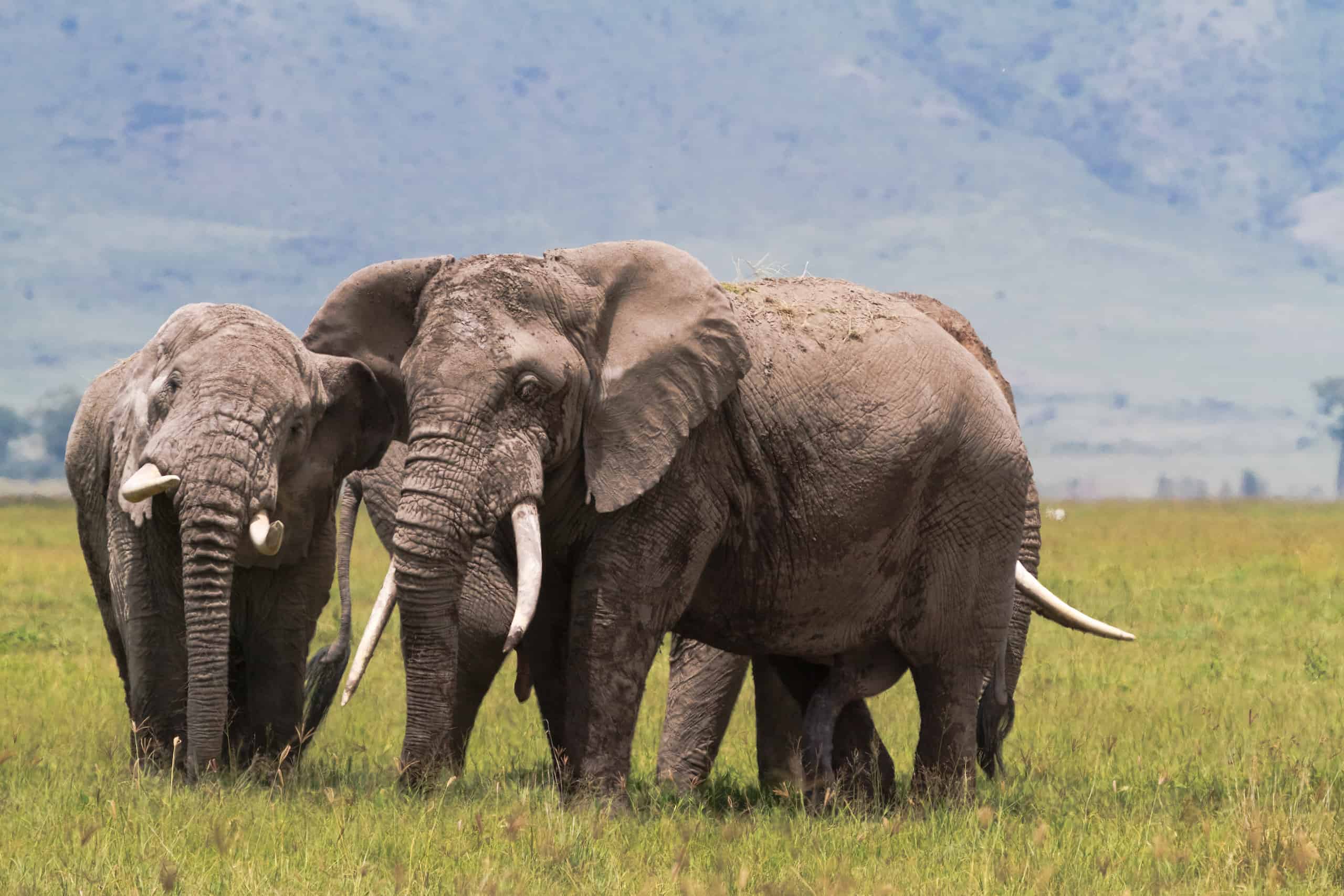
Over 500 bird species can be found here including the black kite, black-winged lapwing, Hildebrandt’s spurfowl, lesser flamingo and the Kenya rufous sparrow.
Open grassland covers most of the crater floor, turning yellow with wild flowers in June. The Makat soda lake is a great attraction for flamingos and other water birds.
Visitors can find long grasslands, high open moorland and the remains of dense evergreen montane forests covering the steep slopes. Highland trees include peacock flower Albizzia gummifera and yellowwood.
Elephants often graze in the forest shade during midday, emerging into the open plains during the early morning.
The small forest patches on the crater floor are home to leopards, monkeys, baboons and antelopes such as waterbucks and bushbuck.
Other activities at the Ngorongoro Crater
There are multiple activities and things to do in Tanzania that can be added to your safari including walking safaris . Here are some other activities which visitors can consider during their visit:
- Photo safaris: As safari destinations go, visitors on a photo safari will be in dreamland at Ngorongoro where small groups of just 3 travellers can share a luxury photography tour with like-minded individuals and enjoy big game viewing whilst capturing their favourite moments.
- Meet the Maasai tribe: Discover the homes and traditions of the Maasai people and attend traditional dance performances and meet the elders.
- Walking safaris: Explore wildlife and private concessions on foot, an authentic and economical means of exploring wildlife in the Ngorongoro and Lake Eyasi.
- Experience Bushmen in Tanzania: Discover how bushmen live and fight for food as well as their culture and food, an authentic Tanzania safari experience.
- Hike the Empakaai crater: A full day hike exploring the Empakaai crater wandering through beautiful forests and exploring incredible birdlife.
- Ngorongoro luxury safari tours: With excellent game viewing, Ngorongoro also offers some of the very best luxury lodges in the world. With incredible décor, modern decorated suites, excellent views, superb service and food, these intimate safari experiences have it all.
- 4×4 safari: A stunning self-drive Ngorongoro journey will allow visitors to enjoy the very best wildlife at their own pace.
- Hot air balloon tour: A scenic hot air balloon flight over the landscape offers a unique perspective on the incredible wildlife and crater.
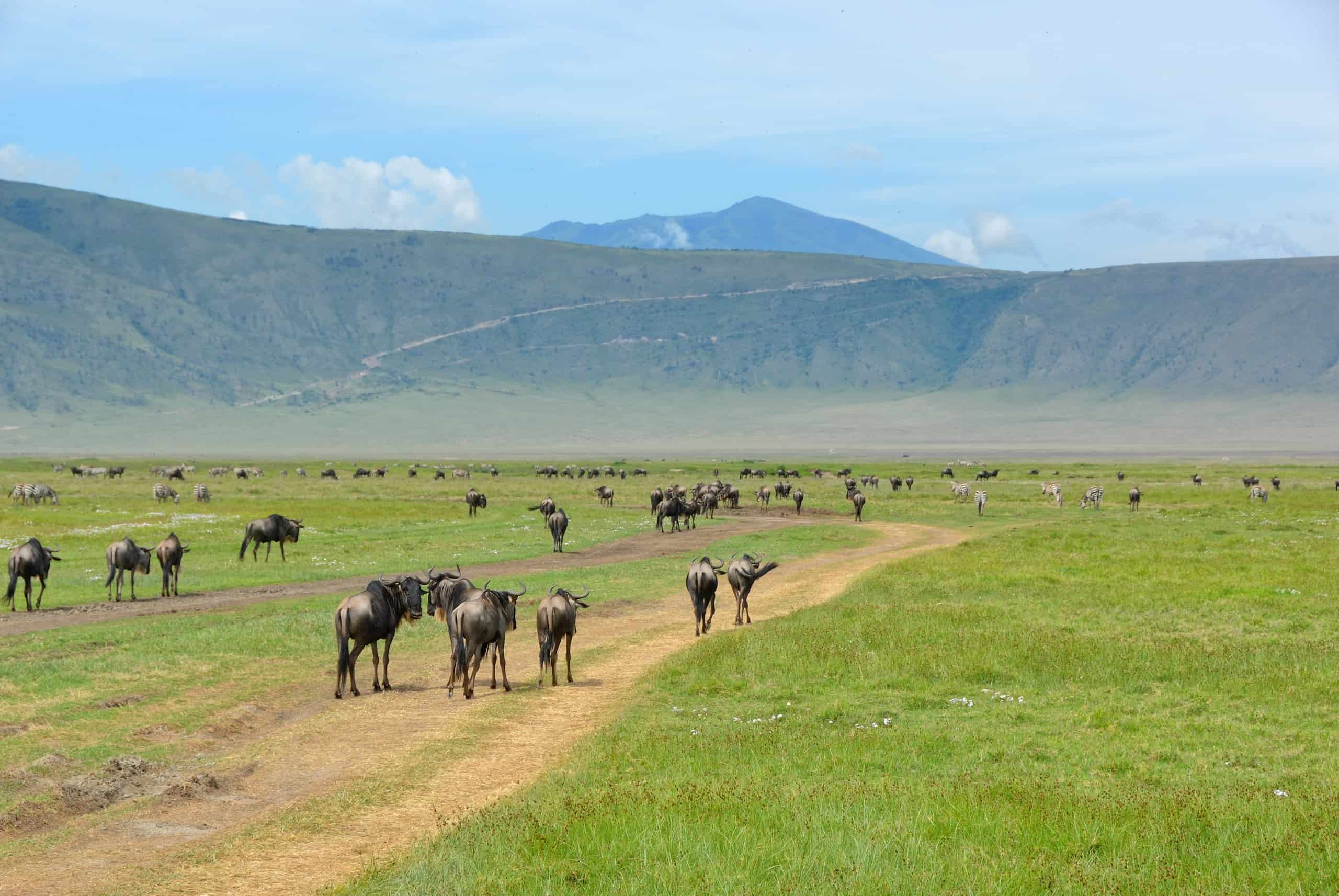
How to get to the Ngorongoro Crater?
By plane .
Access to the Ngorongoro Crater is typically made via a flight and road transfer. Typically, tourists will fly into Kilimanjaro International Airport (JRO), 29 miles from the town of Arusha. From Arusha, it is a three hour drive to Ngorongoro.
It is also possible to fly into Julius Nyerere International Airport (DAR), near Dar es Salaam and fly on to Arusha Airport (ARK) or Kilimanjaro International Airport (JRO). Visitors often combine trips to Ngorongoro with the Serengeti National Park .
International flights into the country can also be made arriving into Dar es Salaam (DAR) airport for visitors wondering how to get to Tanzania . DAR airport is located 18km south of Dar Es Salaam and a Tanzania visa and certain vaccinations may be required to enter the country.
From the capital Dodoma, the Ngorongoro Crater is 290 miles/8 hours driving, a less popular option given the time required.
Tariffs & Regulations
Entrance fee.
Prices per person per day:
- USD $60 per adult to enter the conservation area
- USD $10 per child (aged 5 – 16)
- Fixed price per vehicle weight of between $200 – $300
The gates into the Ngorongoro Conservation Area open at 6am and close at 7pm.
Carrying a small amount of Tanzanian currency , the Tanzania Shilling (TZS) is recommended as back-up when paying for items where credit card facilities are unavailable. Visitors can also review further details on overall Tanzania safari prices here .
Regulations
To visit the Ngorongoro Crater as well as the Olduvai Gorges, it is mandatory to be accompanied by an official guide and approved by the NCAA.
Visits to the crater are limited to a max duration of 6 hours.
Accommodation at the Ngorongoro Crater
Staying inside the Ngorongoro Conservation Area is possible, but the cost of accommodation can vary in price significantly. Rates mainly depend on the season and type of accommodation from lodges, manor houses, hotels and tented sites.
Typical accommodation rates range from $200 to $1,000 per person a night.
Luxury lodges
Lodges are set on the rim of the crater are exclusive and luxurious with views amongst the most spectacular in the world along with world-class service, incredible food, all luxury amenities, simply ideal for the perfect luxury safari or Ngorongoro honeymoon .
Pricing from $400 to several thousand dollars per night.

The Ngorongoro Crater Area hotels offer the perfect pillow for every person. From historic properties to boutique hotels, Ngorongoro has a wide selection for visitors to choose from.
Pricing starts from $420 dollars per night.
Tented camps
These sophisticated structures are large luxury tents on raised wooden floors with excellent guest services and meals provided, often found overlooking a wildlife-rich lagoon.
Pricing from $835 per person per night.
Manor houses
Visitors can step back in time at manor houses including Elewana The Manor at Ngorongoro with 9 luxurious cottages and the magnificent main Manor House, blending East African hospitality with old-world Afro-European architecture and decor.
Campervan
Guests on a self-drive safari with a campervan can make significant savings by sleeping in their vehicle.
Pricing starts from $80 per day.
Campsites
There are a number of affordable camping sites offering cheaper camping options for travellers on a budget including the Ngorongoro Simba Campsite.
Pricing starts from $20 per person per night.
Bars/restaurants/amenities : Lodges will typically have all meals and drinks included in the lodge package.
Useful information
- Geography: Located in the north of Tanzania, a trip to Ngorongoro Crater is often combined with a trip to the Serengeti National Park.
- Weather: Day-time temperatures range from 21C/69F to 25C/77F with the last of the rain falling in May.
- Understanding the best time to visit Tanzania is useful as this impacts flight prices and availability.
- Health: Ngorongoro lies in a lower risk area however visitors pass through areas where malaria is prevalent in order to get there. Antimalarials may be required.
Where is the Ngorongoro Crater located?
Access to the Ngorongoro Crater is made via flight and road. Tourists will fly into Kilimanjaro International Airport (JRO), a 1 hour flight from Nairobi in Kenya. From JRO, it is 29 miles to the town of Arusha. From Arusha, it is a three hour drive to Ngorongoro.
How much is the entrance fee to the Ngorongoro Crater?
USD $60 per adult & USD $10 per child (aged 5 – 16). Vehicles cost $200 – $300.
What time does the entrance gate open and close at?
The gates into the Ngorongoro Conservation Area open at 6:00 a.m. and close at 7:00 p.m.
What animals will visitors see?
The big 5 as well as wildebeest, black spotted hyenas, zebras, elephants, a large population of lions and much more.
- Vision & Mision
- Core Values
- Wildlife Species and Management
- Wildlife Habitats
- Range Management
- Conservation Education
- Environmental Management
- Research and Monitoring
- Ngorongoro Crater
- Empakai Crater
- Olmoti Crater
- The Northern Highland Forest Reserve
- Endoro Waterfalls
- Endoro Elephant Caves
- Olduvai Gorge
- The New Olduvai Gorge Museum
- Dr. Mary Leakey Living Museum
- Laetoli Footprints
- Shifting Sand
- Lolmalasin Mountain
- Olkarien Gorge
- Nasera Rock
- Ndutu Plains
- Gol Mountain and Sale Plains
- Amboni Caves
- Mbozi Meterorite
- Mumba Rockshelter
- Engaruka Ruins
- Engaresero Footprints Site
VISITOR INFORMATION
- Accommodation Facilities
- Guidelines and Procedures for Visitors
- Tariffs - NCAA
- Customer Information and Contact Centres
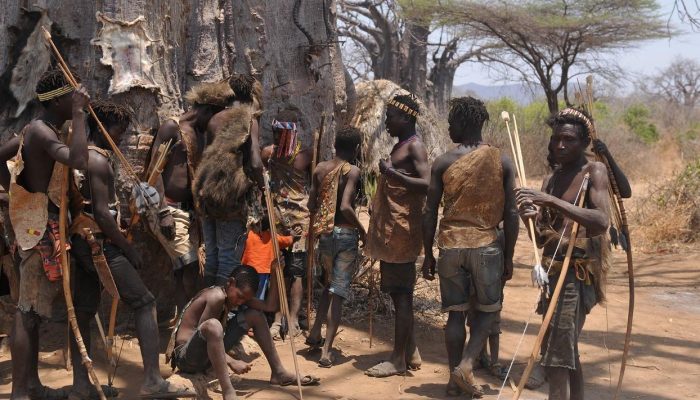
The United Republic of Tanzania
NGORONGORO CONSERVATION AREA AUTHORITY
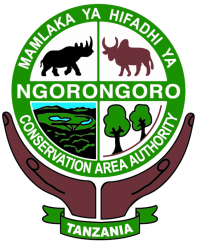
VISIT NGORONGORO
- Watch Full Video
Ngorongoro Lengai UNESCO Global Geopark is the Only one and Sub-Saharan Africa
Ngorongoro Conservation Area is a World Heritage Site.
The Ngorongoro Crater is the largest unfilled, intact and inactive volcano in the world.
Ngorongoro Crater is also referred to as ‘the Garden of Eden’.
Ngorongoro Crater has the densest known population of lions in the world
Ngorongoro Conservation Area is one of the best places in Africa to see the critically endangered black rhino in their natural habitat.
The crater was once voted as one of the Seven Natural Wonders of Africa.
In 1959, Dr Louis Leakey, discovered the skull of Zinjanthropus boisei dated 1.75 mya.
In 1978, Dr Louis Leakey discovered the Laetoli footprints dated 3.6mya - the only evidence of bipedalism in the world.
The Oscar-winning movie ‘Out of Africa’ was partly filmed in the Ngorongoro Conservation Area.
Each year, the spectacular Great Migration happens in the grass plains of Ngorongoro.
There are over 500 species of bird in the Ngorongoro Conservation Area.
Vote for Ngorongoro - World Traveller Awards
White Rhinos to land in ngorongoro Crater
Essential tips for the best chance of seeing wildlife
Ngorongoro Conservation Area
The Ngorongoro Conservation Area Authority (NCAA) is a well-established wildlife management entity under the Tanzanian government, dedicated to managing the Ngorongoro Conservation Area (also known as NCA ) and conserving its stately-natural splendor while striving to make it the world’s top tourism destination – Your best option for a future holiday is the Ngorongoro Conservation Area.
Ngorongoro Conservation Area is in northern Tanzania. It’s home to the vast, volcanic Ngorongoro Crater and “big 5” game (elephant, lion, leopard, buffalo, rhino).
Years of Establishment
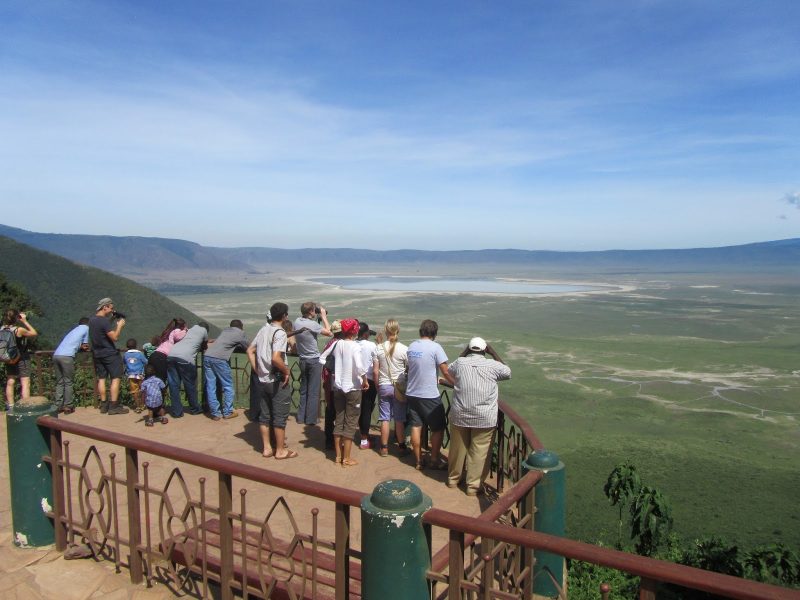
8,292 ㎢
UNIQUE ATTRACTIONS
12,000 ㎢
GEOPARK AREA
EXPERIENCE | EXPLORE | LEARN
ATTRACTIONS
The Ngorongoro Conservation Area is a vast an untouched protected area teeming with the densest wildlife populations on earth, breathtaking landscapes, mountains, world’s largest unbroken caldera, history of human evolution, and so much more. One has to visit to see and believe it.
The Ngorongoro Crater is the world's largest intact and unfilled volcanic caldera and the Ngorongoro Conservation Area's main tourists’ attraction.
The Olduvai Gorge is a remarkable archaeological site in East Africa and It is the one of the most important prehistoric sites in the world with crucial evidence of human evolution.
The Empakai crater is one of the multi-volcanic calderas in the Ngorongoro Conservation Area, with a beautiful lake that makes up more than 75% of its crater floor.
The Nasera rock is situated about 20 kilometers North of Olduvai Gorge. An admirable rock standing 100 metres above the plains.
The Endoro Waterfalls is a source of a natural spring that forms the Endoro River, which flows from the rim of the Ngorongoro Crater.
The Olkarien Gorge is a massive granite monolith on the outskirts of the Gol Mountains in northern Tanzania.It is a nesting site for hundreds of the Ruppell's griffon vulture.
Olmoti Crater is situated at the Northern end of the Ngorongoro Crater, and offers scenic view of highlands. It is a water a catchment for Ngorongoro rich in flora and fauna.
Is a moving black dune, composed of volcanic ash from the nearby volcanic mountain - oldoinyo lengai. It is moving slowly westwards across the Ngorongoro plains at a rate of about 15 to 20m per year.
Mount Lolmalasin is the crater mountain in the Ngorongoro Conservation Area and the third highest mountain in Tanzania standing at 3700m above sea level.
The Gol Mountains are located at the north-end of the Ngorongoro Conservation Area and is an example of a fault-bounded mountain range.
The Ndutu plains is located in the Ngorongoro Conservation Area, on the outskirts of the Southern Serengeti plains. It is where the great migration wildebeest migration take place in Ngorongoro.
There is an abundance of activities related to natural and cultural attractions, ancient sites, mountains, culture and arts, festivals and events one can get to experience while visiting Ngorongoro Conservation Area.
ACCOMMODATION
There are a variety of accommodation properties within NCA, ranging from luxury hotels, lodges, tented camps and public camping sites located in some of the most pristine scenic areas.
Information
The Center provides thorough information on tourism attractions, facilities and activities available in the Ngorongoro Conservation Area.
Accommodations
Visitors to Ngorongoro can stay in luxury lodges, Simba A public campsite, community campsites, special campsites and permanent tented lodges within.
Important things to know before going on a safari; Visas, Passport, Health information, Tipping and gratitude, food on Safari, destinations, accommodations and press release etc.
Traveller’s Feedback – NCA
"This is a true sanctuary of wildlife, the Ngorongoro crater. What continued to amaze me in our safari in Tanzania was how the flora and fauna in each of parks was a bit different, even though location-wise they were not that far apart. In the Ngorongoro Crater you can see so many different species of animals, and definitely some we saw we did not see in any of the other parks."
"We traveled to Tanzania for our honeymoon and went on an incredible safari organized by Habari adventure. They organized an incredible itinerary for us and they were incredibly responsive, giving us all the information we needed to ensure we were prepared for a great trip. We spent 9 days traveling through Serengeti, Tarangire, Ngorongoro Crater, Empakaai walking safari & Lake Eyasi - seeing an amazing variety of animals and staying at beautiful lodges in the evening. "
"The physical layout was beautiful- all the game were at the bottom of the world's largest caldera. We were there on a day that we did not see a great deal of animals, but we still say several hundred large mammals. Our tour company also planned a wonderful lunch out in a small glen, with staff from the place we were staying- very special meal. "
"Friends Let me start by saying this trip to Tanzania was like a miracle and was something me and friends always wanted to do and it was amazing and Nafika Tours made it even more amazing , my guide ( livin ) took us on a journey through the Serengeti and ngorongoro the things we saw and experienced was nothing like i have experienced before we saw a lioness catching a zebra for it's cubs to feast on and on the next day we saw buffaloes scaring away lions"
"If you want to get away from the crowds of Ngorongoro Crater, a short drive (2-ish hours) takes you to the rim of Empakaai Crater. Below, the crater floor is largely taken up by a jade-coloured lake. A half-hour walk and you're at the lakeshore - if you're lucky, it might be teeming with flamingoes"
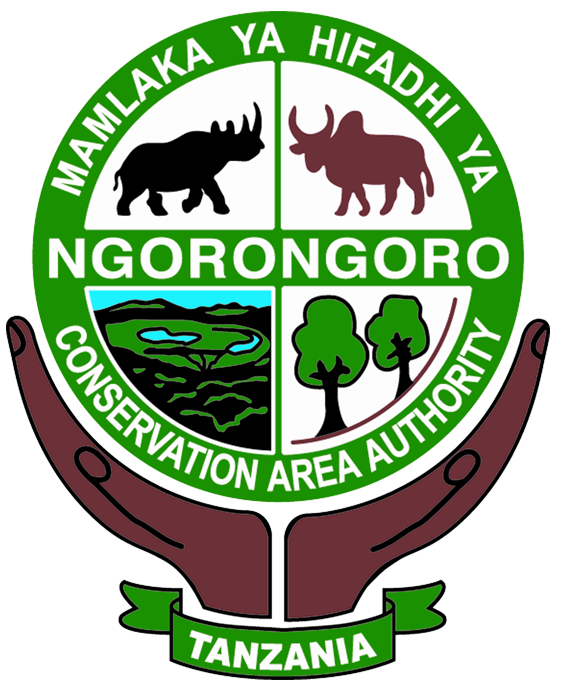
P.O. Box 1, Ngorongoro Crater Arusha, Tanzania
+255 27 253 7019 +255 734 160 015
FOLLOW US/VISIT US
@visitngorongoro, quick links.
- TARIFFS/ FEES
Related Links
- NCAA - Attractions Map
- Geopark Locations Map
GIVE US YOUR FEEDBACK
what is your experience at NCAA
FAST RESPONSE
chat with our representative
entry fee, motor vehicle, crater fee etc

- COVID 19 POLICY & GUIDELINE
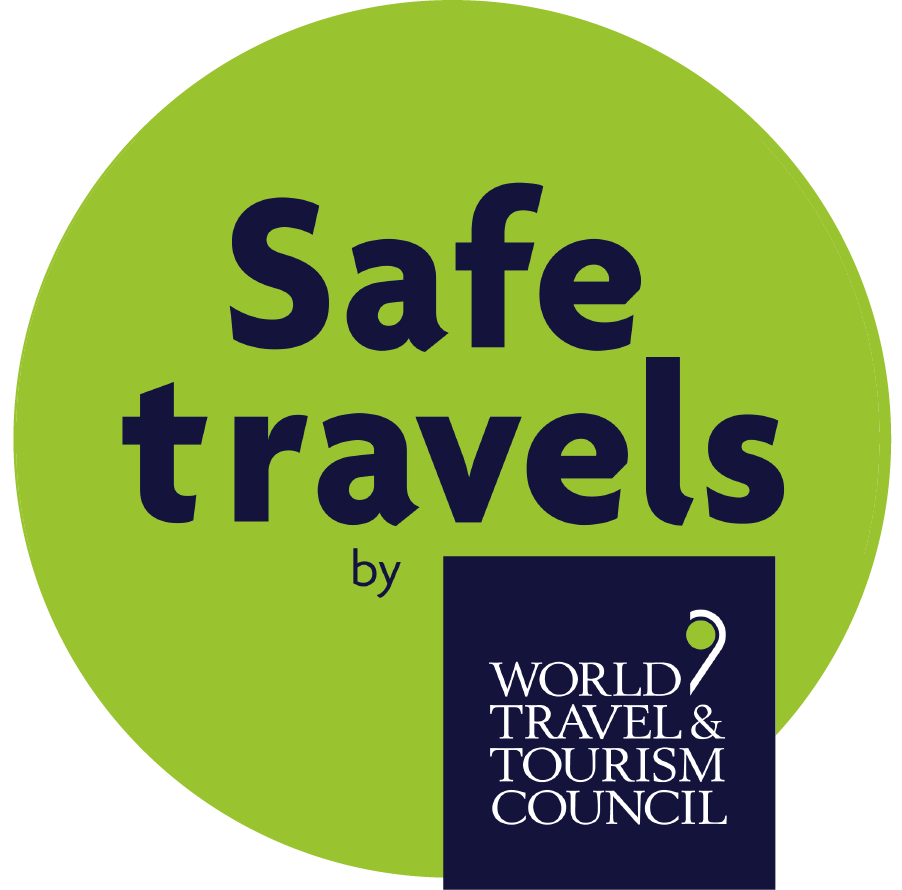
- Privacy Policy
- Terms and Conditions
- Copyright Statement
The website is Designed, Developed and Maintained By NCAA 2024 , All Rights Reserved.
- +39 340 830 3297
- +255 764 962 326
- [email protected]

Safari Activities
Ngorongoro walking safari, detailed itinerary.
Duration: 2.5 / 3 hours
Location: Ngorongoro Crater Rim
Difficulty: Medium
Price: $45 per person
Contact us for info
Others activities.
Whatever your travel wishes and needs are, Obag Safari can make your journey a open eyes dream.

- Tanzania Safaris
- Destinations
- Accomodations
- Privacy Policy
- Cookie Policy
+255682784150 +255763058584 [email protected]

7 Days Ngorongoro Crater and Serengeti Safari
7 Days Ngorongoro Crater and Serengeti Safari is one of the most immersive Tanzania safari tours that you can book for an experience of the Serengeti and Ngorongoro in full detail. This 7 Days Ngorongoro Crater and Serengeti Safari has you spending more time in either parks. Both Serengeti Park Tanzania and Ngorongoro Crater Tanzania are the most sought after Tanzania national parks that travelers visit over the years for an ultimate Africa safari experience to see the big 5 animals and so much more.
Day 1: Arrival, Optional Serval Wildlife Visit
Upon your arrival at the Kilimanjaro International Airport, our company Tanzania safari guide shall pick you and transfer to the hotel. Depending on your time of arrival, you can enjoy a Serval Wildlife Sanctuary visit for a chance to enjoy coming in contact with almost domesticated wild animals including giraffes, waterbucks, zebras, and even lions! Check in at the hotel, relax as you wait for dinner and an overnight stay.
Accommodation: Burka Coffee Lodge for Budget, Tulia Boutique Hotel for Mid-range, Serval Wildlife Villa for Luxury.
Meal Plan: Dinner
Day 2: Drive to Ngorongoro, Crater Rim Walking Safari
Drive Time: Approx. 3-4 hours.
You shall be picked up at the hotel in Arusha by your driver guide. You will proceed to drive to the Ngorongoro conservation area where you will engage in a walking safari. During your walking safari, you will be accompanied by a ranger and you will get a close encounter with your natural surroundings in Ngorongoro and also get to know how to track animals. After this experience, you will return to your lodge for dinner and overnight stay.
Accommodation: Eileen’s Tree Inn for Budget, Ngorongoro Wild camp for Mid-range, Ngorongoro Serena Safari Lodge for Luxury
Meal Plan: Breakfast, Lunch and Dinner
Day 3: Ngorongoro Crater Drive, Maasai Bomas Experience
You will have breakfast as you prepare for a drive to the Ngorongoro crater where you will descend 600 meters into the crater and engage in a game drive as you look out for elephants, lions, buffalos, leopards, zebras, hippos, wildebeests, hyenas, dik dik, antelopes, and warthogs among others.
You will also enjoy amazing views around the Ngorongoro crater during your game drive and also see flamingos along the shores of the alkaline lake found in the crater, Lake Magadi.
Get to interact with the Maasai tribe locals who still stay in the conservancy with the animals! Learn of their culture, way of life, and dance along with them in their famous high-jumping dance! After, you will return to your lodge, relax as you wait for dinner and overnight stay.
Accommodation : As above
Meal Plan : Breakfast, Lunch and Dinner
Day 4: Drive to Serengeti, Game Drive
After breakfast at your lodge, your guide will drive you to Serengeti national park. You will have lunch at your lodge in the national park and later you will engage in a late afternoon game drive around Serengeti national park.
You will search for different wildlife species during your game drive such as the big 5 and many others during your safari. After your game drive, you will be driven you to your lodge for your dinner and overnight stay.
Accommodation: Tukaone Serengeti Camp for Budget, Central Serengeti Tanzania Bush camp for Mid-range, Melia Serengeti Lodge for Luxury
Day 5: Hot Air Balloon Safari, Game Drive

Wake up to an early morning hot air balloon experience which will literally blow your mind for the mazing views whilst floating over the Serengeti, as well as sunrise and animal sightings! Enjoy a bush breakfast thereafter, and return to the camp or lodge for rest for the rest of the morning and a game drive after lunch, or choose to have your guide meet you for more game viewing with a packed lunch to be enjoyed over a picnic! Return to your camp or lodge thereafter for relaxation, dinner and an overnight stay as above!
Day 6: Full Day Serengeti Game Drive, Sundowner Experience Today after breakfast at the lodge, together with your packed lunch you shall head out for a full day game drive in the Serengeti Plains, looking out for various animals in the park. Explore Serengeti national park and engage in a game drive as you look out for wildlife species like giraffes, wildebeests, zebras, gazelles, lions, leopards, elands, wildebeests, zebras, hippos, cheetahs among others.
As the day unwinds, enjoy a sundowner experience and sunset at a set location. Return to the camp or lodge and relax as you wait for dinner and overnight stay.
Accommodation : As Above
Day 7: Departure
Drive Time: 7 Hours
You will have breakfast as you prepare for your drive to Arusha from your lodge in Serengeti national park , enjoying another opportunity to see wildlife species on the way to Arusha where you will be dropped off at the airport in Arusha or hotel of stay in Arusha, which will bring your safari to an end.
End of 7 Days Ngorongoro and Serengeti Safari
Price includes
- All day game drives as per itinerary
- Accommodation for the duration of the safari
- 4×4 land cruiser safari vehicle
- Professional safari and tour guide / driver
- All national park fees
- All meals on the safari
- Crater and Concession fees
- Drinking water in the safari vehicle
- Government taxes
Price excludes
- Items of personal nature (laundry, beverages, internet, etc.)
- Any hotel accommodation before / after the safari
- Entry visas
- Travel insurance
- Tips and gratuities
- Any items not included in the itinerary


Ngorongoro Crater

Sub regions inside
Broader region.

Renowned as a UNESCO world heritage site and protected wilderness area, Ngorongoro Crater is one of the best places in Tanzania to see the famous Big Five (Lion, Leopard, Elephant, Rhino, Buffalo) and for this reason is a popular choice amongst safari enthusiasts. A safari in the Serengeti or reserves in northern Tanzania is not complete without a visit to the Ngorongoro Crater.
Encompassing volcanic craters and fertile grazing grounds, Ngorongoro affords incredible game viewing all year round. Renowned for its big game and plentiful predators, game drives in this region are exciting and offer great photo opportunities. Experiences to be had in the Ngorongoro Crater include big five game drives on the crater floor, bird watching, interactions with people from the Maasai tribe, and visits to Olduvai Gorge.
There is a selection of lodges that nestle on the rim of the crater, offering phenomenal views, gorgeous sunsets, and convenient access to the crater floor. A short distance away from the crater is Karatu which offers fewer crowds, smaller and more intimate lodges and additional activities such as walking and mountain biking.
Due to the fact that the Ngorongoro wildlife remains within the confines of the steep-walled crater throughout the year, your decision as to when to visit is not likely to revolve around maximising your game viewing experience. What is likely to influence your decision, however, are the highs and lows of the tourist seasons as the crater floor can become rather crowded with visitors at certain times of the year.
Visitor numbers tend to be at their highest during the dry season from around June to September as this is generally considered to be the best period for wildlife watching. The game usually gathers around rivers and water holes during the dry season and the vegetation is at its thinnest, making the animals much easier to spot. The dry season’s days tend to be warm and sunny but early mornings and evenings can get cold, so be sure to pack plenty of warm clothing.
Visitors numbers then typically decrease significantly during the rainy season which begins around the end of October and continues until the end of May. Tourist rates are generally reduced during this time and the landscape becomes beautifully lush and green. The higher water levels in the Ngorongoro Crater’s Lake Magadi also result in higher concentrations of both resident and migratory water birds including large numbers of flamingo for which the area is known. Aside from the months of March, April and May, when the rains are at their heaviest, the rains are usually short afternoon showers and are unlikely to affect your safari experience. Note that travellers who are eager to experience the wonders of the calving season, should plan their trip during the wet season, particularly during the months of December, January and February.
Forming part of the greater Serengeti ecosystem, the Ngorongoro Conservation Area is an impressive UNESCO World Heritage site in northern Tanzania . This pristine expanse of wilderness is comprised of a large area of short-grass plains on the southern border of the Serengeti National Park as well as the exquisite Ngorongoro Highlands region, featuring a range of dramatic ancient volcanoes on the western side of the Great Rift Valley.
The area’s star attraction is undoubtedly the Ngorongoro Crater, the world’s largest inactive, intact volcanic caldera, which forms a unique 300 square kilometre natural enclosure for around 30, 000 wild animals. The crater is renowned for containing the highest density of big game in Africa including all of the ‘ Big Five ’ as well as cheetah, serval cat, jackal, hyena, Grant's and Thompson's gazelle, and over 400 species of bird. In addition to its astonishing array of wildlife, the crater features the wonderfully scenic Lake Magadi; the Lerai Forest, considered one of the best places in Africa for leopard sightings; and the lovely Ngoitokitok Spring area, inhabited by countless hippos, elephants, and lions.
Other popular attractions within the greater Ngorongoro Crater Conservation Area include the smaller Empakaai Crater, known for its exceptionally large flocks of flamingos, and the spectacular Olduvai Gorge. This steep-sided, 50-kilometre-long ravine is one of the world’s most significant prehistoric sites boasting a fascinating museum displaying replicas of some of the hominid and animal fossils unearthed at the site.
Must see: The magnificent Ngorongoro Crater containing: an impressive abundance of resident wildlife, an acacia forest crawling with leopards, a beautiful lake teeming with waterbirds, and the Ngoitokitok Spring area, inhabited by countless hippos, elephants, and lions.
.webp)
Mar 29, 2024
Thank you so much Keith
Thank you so much Keith! You’ve made booking our holiday and the Safari so easy. We look forward to meeting you.
Pascal was amazing throughout the…
Pascal was amazing throughout the process of booking! He took time to understand our travel requirements and wishes and pulled it all together to create an amazing itinerary!
Mar 28, 2024
Helpful, easy and fast communication
Experienced a double booking
Before payment, we experienced an issue of double booking, where suddenly our chosen lodging is only available for 2 out of 4 days. I hope Safari.com can improve their system to avoid this in the future. While it will be an inconvenience on our part to have to move lodging half way, we also understand the high demand of the lodging as we make the booking just 5 months before departure. I really appreciate Nelia's quick action informing us and providing an alternative plan which works for us. Overall it was quite a smooth booking process.
Safari.com was helpful start to finish
Safari.com was helpful start to finish. The sign up process was clear, the support was great as we tailored our experience. Directions were perfect to get there. Everything in the safari was as we thought it would be and even better. It literally was the trip of a lifetime and exceeded our expectations.
Heleen 's service was superb
Heleen 's service was superb: prompt, friendly and efficient. She altered my reservation promptly and efficiently. She warned me that SAN Parks might not be able to accommodate my wishes, but all is well.
A superb experience
Dear Jayson, You are a star. The very professional pieces of advice and the optimal design of the schedule that turned our holidays into an extraordinary experience. Thank you so much! Leopard Hills are indeed the boutique luxury camp that you recommended. People there are incredible friendly and knowledgable. The guide was excellent. And the cook, she was a friendly star too. The flight connections went well, despite that rather long drive, and the very early morning start. Wake up calls at 4 AM should be forbidden :) Mauritius was great, Club Med The Plantation Albion was the perfect choice. (The other Club Med @ Cannonier we visited only and were glad we didn’t chose that one…) Thank you again for the superb organisation.
Shamiel was very helpful with advice on…
Shamiel was very helpful with advice on our trip and responded promptly to all my queries.
Mar 27, 2024
I have enjoyed working with Safari.com
I have enjoyed working with Safari.com! We are bringing a big group, and they have been amazing coordinating the different changes we have had to make. We will work with them in the future!
TOP DESTINATIONS
- Kruger Park
- Okavango Delta
- Serengeti National Park
- Victoria Falls
TOP COUNTRIES
- South Africa
TRAVEL DEALS
View All Travel Deals
SOUTHERN AFRICA
East africa, indian ocean islands, top experiences.
- Beach Holidays
- Family Safaris
- Honeymoon Safaris
- Desert Safaris
- Luxury Rail Safaris
- Multi-Generational Safaris
- Positive Impact Safaris
- Photographic Safaris
- Walking Safaris
WILDLIFE SAFARI
- Big Five Safaris
- Birding Safaris
- Gorilla Trekking Safaris
- Migration Safaris
- Mobile Camping Safaris
- Horseback Safaris
FEATURED EXPERIENCES
Comfort levels, property types.
- Tented Camps
- Boutique Hotels
Featured Safari Collections
- African Anthology
- Desert & Delta
- Saruni Basecamp
- Imvelo Safaris
- Elewana Collection
GET TO KNOW US
- Meet The Team
- Pricing Explained
- Traveller Reviews
- Traveller Stories
- Why Book With Us?
- HerdTracker
- Safari Cost Calculator
- South Africa In 360
- Trusted Safari Partners
What are you looking for?
- Safaris & Tours
- Destinations
- Experiences
- Accommodations
- Why book with us?
Hello traveller!
It's in Cape Town now.
We're sorry. Our safari planners aren't available now. Our office hours are 08:00 - 19:00 (GMT+2).
Call us to speak to an experienced safari planner.
Alternatively, we recommend...
Schedule a phone or Zoom call with one of our safari planners
Complete our travel enquiry form to connect with a safari planner
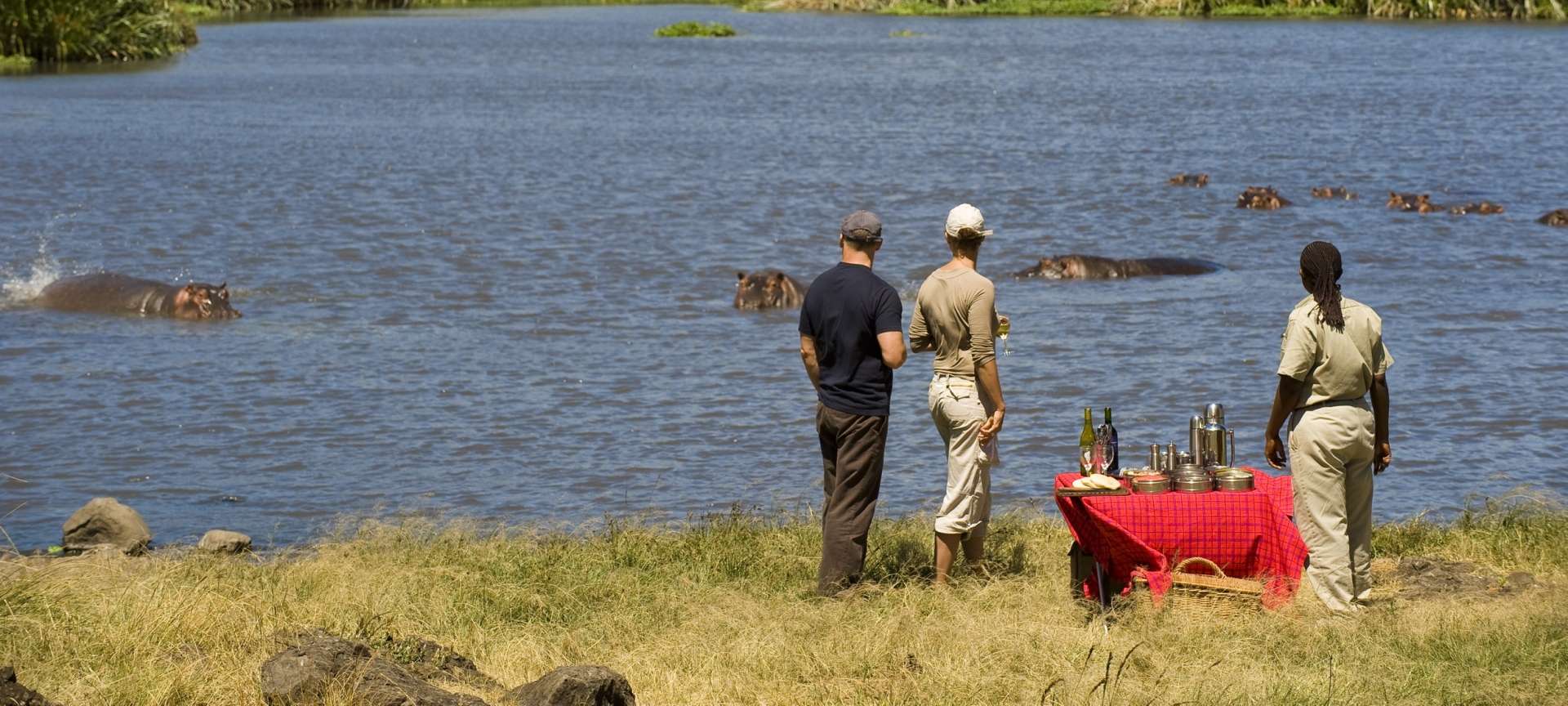
- Ngorongoro Crater Safari
The ultimate guide to your next Ngorongoro Crater Safari
Get to know ngorongoro crater.
This is where vast herds of the Great Migration come to give birth in a 3-million-year-old collapsed volcano, Masai people live and fossils abound
Ngorongoro Crater – a Unesco World Heritage site – is 600 meters deep, 20 kilometres wide and the largest unflooded, unbroken caldera in the world. It's an extraordinary ecosystem where you can find the Big Five or even, if you're lucky, the endangered black rhino on the Crater floor.When it was still active, the volcano deposited its volcanic ash on what's now the Serengeti plains towards the west, preserving many fossils in Olduvai (Oldupai) Gorge, discovered by Louis and Mary Leakey. The greater Ngorongoro Conservation Area conserves the fragile Ngorongoro Crater ecosystem and serves as an important space for the animals of the Great Migration to give birth at Lake Ndutu, which borders the southern Serengeti.
Ngorongoro Crater Video
- Ngorongoro Crater
How it Works
View our recommended safaris for inspiration and get ready to plan your dream safari
Contact us or fill out an enquiry form and one of our travel experts will help you tailor make your perfect safari
Enjoy an authentic African experience, with peace of mind
Why Ngorongoro Crater?
- Unesco World Heritage Site
- Great Migration calving season
- Biggest concentration of wild mammals in the world
- Walking safaris on the Crater rim or to Lake Natron
- Black rhino
- The Big Five
Where to go in Ngorongoro Crater
- Empakaai Crater
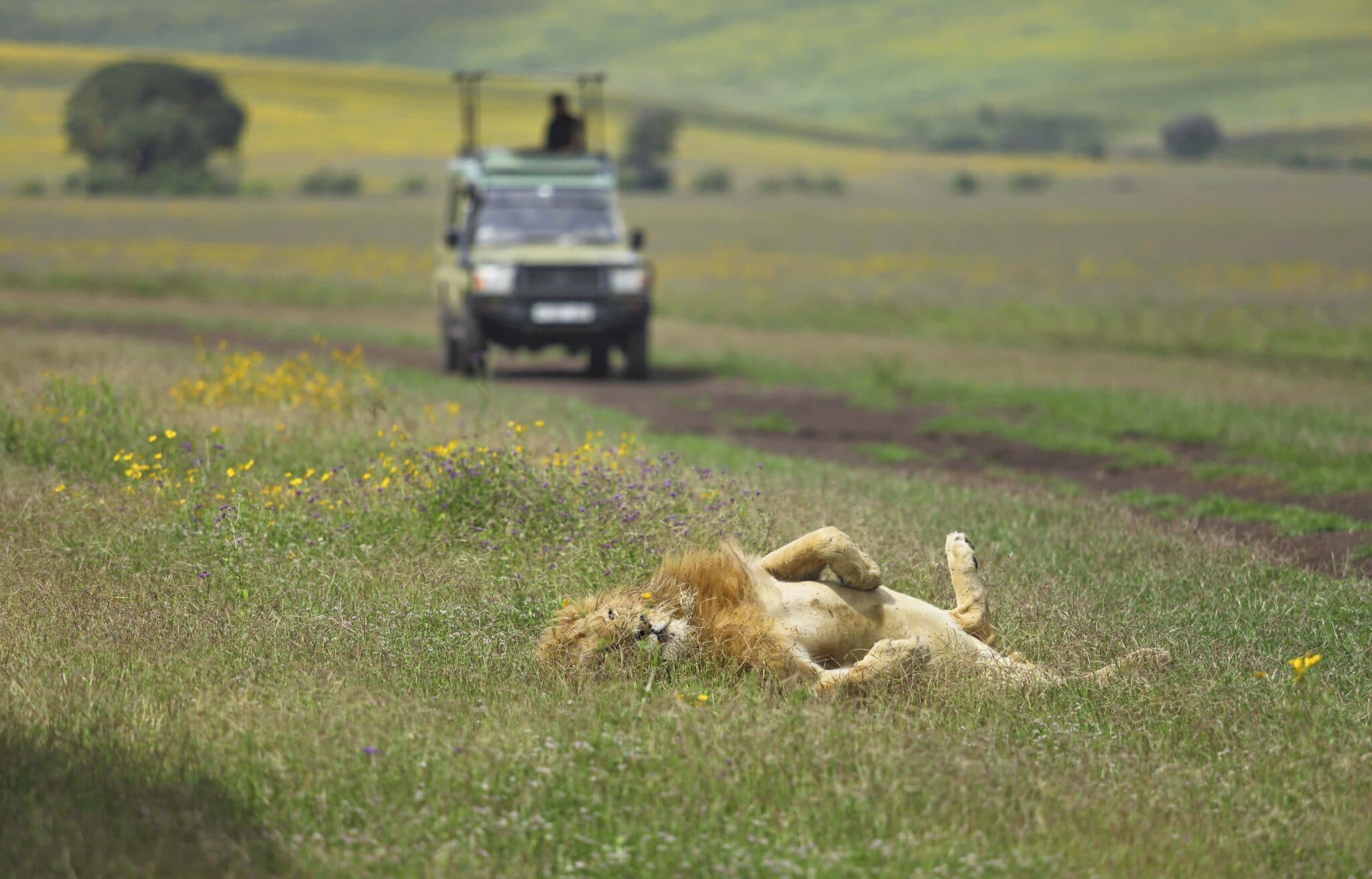
The second-largest crater in the Ngorongoro Conservation Area, Empakaai is almost 8km in diameter and its floor is dominated by a saline crater lake and enclosed by sheer 300m high walls that rise to an elevation of 3,200m on the eastern rim. On of East Africa’s most underrated and seldom-visited scenic gems, the crater lies about 90 minutes’ drive northeast of Ngorongoro Crater via the Embulbul Depression, a grassy bowl that which dips to below 2,350m at the base of the 3,260m Mount Losirua and 3,648m Lolmalasin (the highest point in the Crater Highlands). The view from the forested crater rim is fabulous, whether you look inward to the emerald green crater lake, its shallows frequently tinged pink by thousands of flamingos, or east across the Rift Valley to the ashen slopes and smoking fumaroles of volcanic Ol Doinyo Lengai, a scene that also takes in Lake Natron and snow-capped Kilimanjaro on a clear day. Empakaai offers a welcome opportunity to break the safari regime of twice-daily game drives with a stiff steep guided hike to the crater floor. The steep but scenic descent along a tolerably well-maintained footpath takes 45-60 minutes, longer if you’re looking out for the plentiful birds that inhabit the forested crater walls, and there’s also a chance of spotting bushbuck, buffalo, blue monkey and even elephant. Good walking shoes and a reasonable level of fitness are recommended.
- Heroes Point
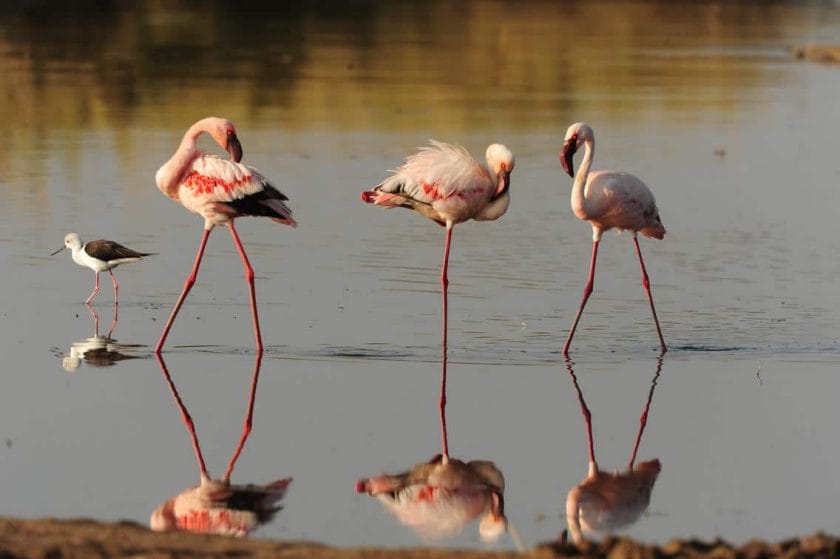
Coming from the direction of Arusha, the road from Lodware Entrance Gate to the crater rim switchbacks uphill through fertile slopes swathed in Afromontane forest to Heroes Point, which is where most visitors catch their first breathtaking view to the crater floor. It is here that German conservationist and filmmaker Michael Grzimek (son of the legendary Professor Bernhard Grzimek of Serengeti Shall Not Die fame) was buried in 1959 after his tragic death in an aeroplane crash over the Serengeti at the age of 24. Look closely at the crater floor below and you should pick out a few hundred-strong herds of wildebeest, zebra and buffalo moving across the crater floor, as well as elephants on the edge of Lerai Forest or flamingos in the shallows of Lake Magadi.
- Lake Eyasi and the Hadzabe
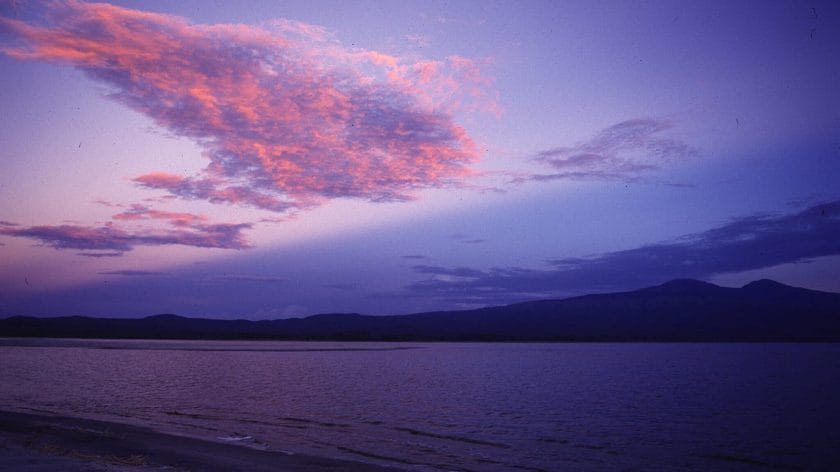
Bounding the southern Ngorongoro Conservation Area at the base of the Rift Valley Escarpment, remote Lake Eyasi is a shallow soda lake prone to large fluctuations in area and level depending on local rainfall. Possessed of a certain desolate beauty, the surrounding dry savannah is home to the Hadza, or Hadzabe, a tribe of nomadic hunter-gatherers that numbers fewer than 100 individuals today and speaks a similar click language to the San people of Southern Africa. The overgrown village of Mang’ola is the most important settlement in the area, and the base from which it is usually possible to visit a family of these traditional nomads, who resolutely refuse to be coerced into a more settled agricultural or pastoral lifestyle, and join them on a hunting expedition in search of baboons, dik-dik or even mice, all of which are despatched with a traditional bow and arrow.
- Lake Natron and Ol Doinyo Lengai
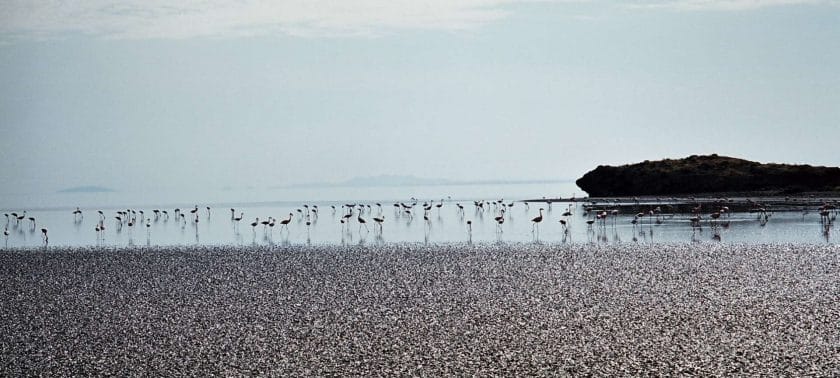
Set within the Rift Valley on the eastern border of the Ngorongoro Conservation Area, Natron is perhaps the most starkly beautiful of all the Rift Valley lakes south of Turkana. Almost 60km long but nowhere more than a metre deep, this primordial alkaline sump is renowned for its caustic and unusually viscous waters, which are enclosed by a crust of volcanic ash and salt, as well as a few isolated swamp patches fed by bubbling hot springs. There is some large wildlife in the area, but Natron’s main faunal claim to fame is as the only known breeding ground for East Africa’s 2.5 million lesser flamingos, which congregate at an inaccessible part of the lake between August and October. Natron also attracts up to 100,000 migrant waders during the European winter. The main attraction close to the Natron is Ol Doinyo Lengai, the Maasai ‘Mountain of God’, a textbook volcano that rises more than 2km above the surrounding Rift Valley floor to an altitude of 2,960m. Probably the most active volcano in East Africa, Lengai has erupted at least a dozen times in the past 150 years, experienced almost continuous low-key activity over the last past century and a half, the most dramatic in recent years being over 2007, when it emitted an ashen steamy plume that travelled almost 20km downwind. The steep ascent of Lengai, ideally undertaken overnight to avoid sun exposure on the black shadeless slopes, is a popular hike with fit and adventurous travellers, at least when the volcano is sufficiently placid. It should only be undertaken with an experienced local guide, ideally leaving shortly before midnight to reach the crater rim for sunrise.
- Lake Ndutu and the Serengeti Plains
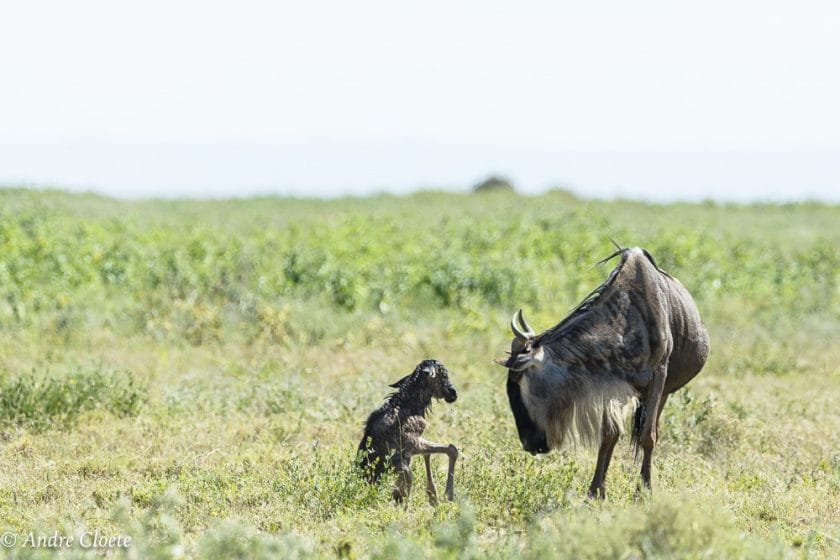
Ngorongoro Conservation Area is essentially an eastern extension of the vast Serengeti-Mara ecosystem – indeed, it formed part of the original Serengeti National Park as it was gazetted in 1951 but was split off shortly afterwards to appease Maasai protests against being evicted from their traditional grazing lands. Today, the southeast of the conservation area, around Oldupai Gorge, remains an important component of this migratory ecosystem, a fact of which you will be in no doubt should you pass through the area en route to the Serengeti National Park during the rainy season (late November to early May), when large herds of wildebeest and other ungulates disperse across the short grass plains and calve en masse in February. At other times of year, the area is a good place to look for cheetah, bat-eared fox, eland and ostrich. The game viewing centrepiece of the region is Lake Ndutu, which straddles the Serengeti-Ngorongoro boundary at the epicentre of the wildebeest dispersal, when it offers truly dramatic game viewing.
- Oldupai Gorge
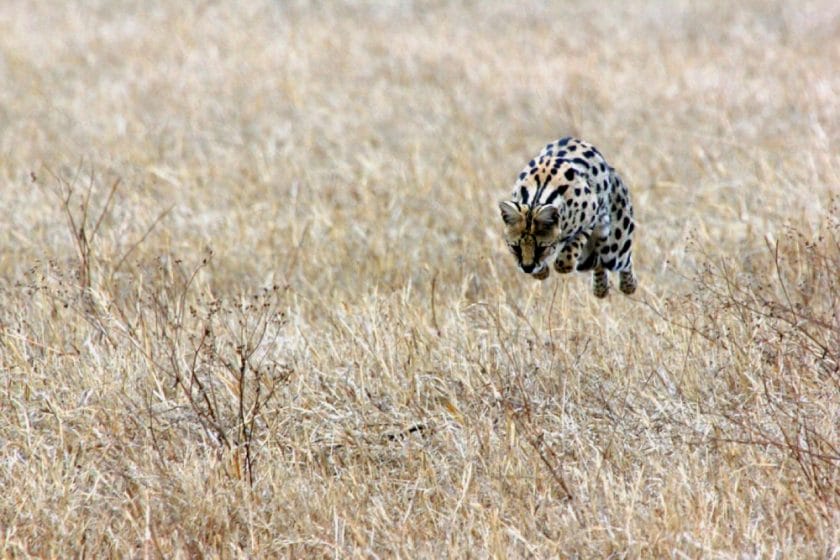
Two million years ago, the landscape of Ngorongoro Conservation Area looked very different to how it does today. Ngorongoro itself would have been an active volcano, taller perhaps than Kilimanjaro is now, and the seasonally parched plains at its western base were partially submerged beneath a seasonal lake that formed an important watering hole for our hominid ancestors. The fluctuating nature of this ancient lake led to a high level of stratification, one that accentuated by sporadic deposits of volcanic ash from Crater Highlands, creating ideal conditions for the fossilisation. Then, tens of thousands of years ago, fresh tectonic activity caused the land to tilt, leading to the formation of a new lake to the east and the creation of a seasonal river that cut through the former lakebed to expose layers of stratification up to 100m deep and a continuous archaeological and fossil record of life on the plains over the past two million years. Named after the Maasai word for the wild sisal that grows in the area, Oldupai Gorge is one of the richest palaeontological sites in East Africa. First excavated in 1931 by Professor Louis Leakey, it was here, in 1959, that Louis’s wife Mary Leakey unearthed a critical landmark in the history of palaeontology: the discovery of a fossilised cranium that provided the first conclusive evidence that hominid evolution stretched back over more than a million years and had been enacted on the plains of East Africa. Nicknamed ‘Nutcracker Man’ in reference to its bulky jawbone, the cranium belonged to a robust Australopithecine that had lived and died on the ancient lakeshore around 1.75 million years earlier, and while its antiquity would later be superseded by more ancient fossils unearthed in Ethiopia and Kenya, it rewrote the perceived timespan of human evolution, shot the Leakeys’ work to international prominence, and led to an a series of exciting new discoveries, including the first fossilised remains of Homo habilis. At nearby Laetoli, in 1976, four years after Louis’s death, Mary Leakey discovered footprints created more than three million years ago by a party of early hominids that had walked through a bed of freshly deposited volcanic ash – still the most ancient hominid footprints ever found.
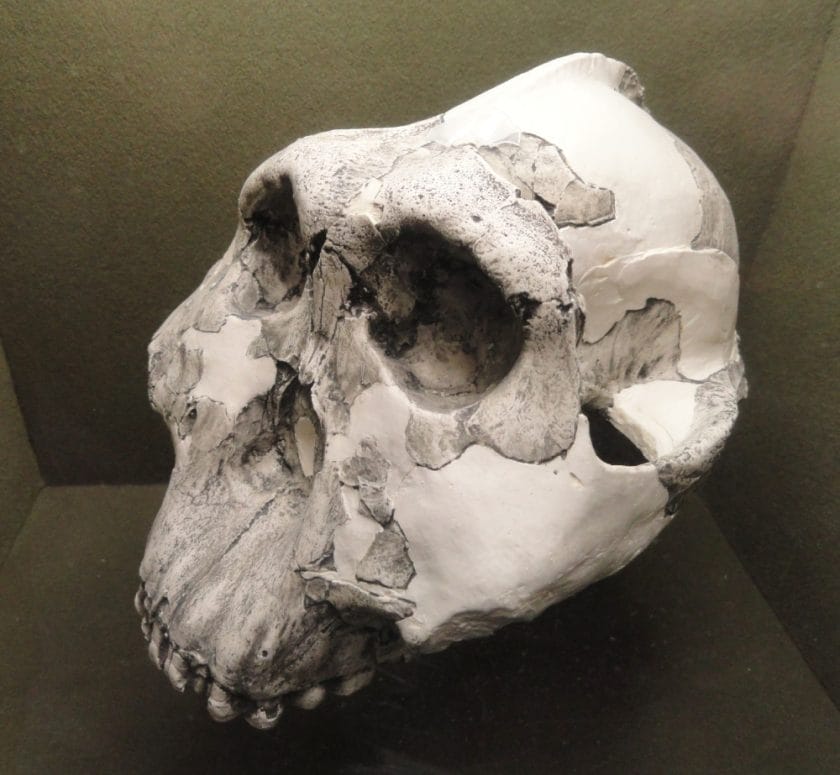
Today, the original diggings can be explored with a guide, but the main attraction is an excellent site museum that lies a short distance off the main track connecting Ngorongoro Crater to Serengeti National Park. Displays include replicas of some of the more interesting hominid fossils unearthed at the site as well as the Laetoli footprints, along with genuine fossils of a menagerie of extinct oddities: a short-necked giraffe, a giant swine, an aquatic elephant and a bizarre antelope with long de-curved horns. Outside the museum, look out for colourful dry-country birds such as red-and-yellow barbet and purple grenadier.
- Olmoti Crater
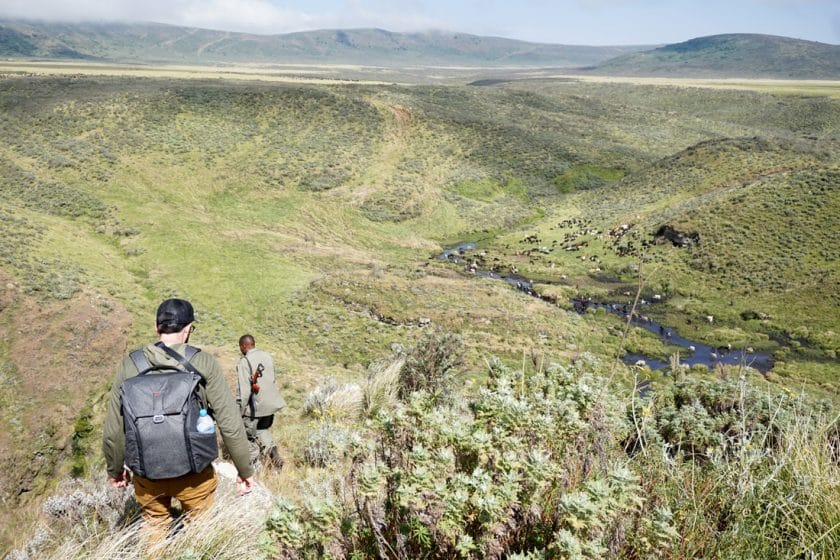
Another dramatic relic of the volcanic activity that shaped the Crater Highlands over the past ten million years, Olmoti – a Maasai name meaning Cooking Pot – is a sunken caldera whose rim is reached along a 30-minute footpath from the ranger post at Nainokanoka. Covered in grass and bisected by a river valley, this shallow crater doesn’t quite match Ngorongoro or Empakaai for scenery, but it is very pretty, and it offers good grazing to the local Maasai cattle and various antelope. Look out for pairs of augur buzzard cartwheeling high in the sky, and the cliff-loving Verreaux’s eagle. From the main viewpoint, a short footpath leads to the seasonal Munge Waterfall, where the eponymous river cascades out of the crater.
Travel with Confidence
With over 20 years of experience, our team will help you choose the perfect african safari for your adventure., 24/7 support, personalized, popular ngorongoro crater safaris, these recommended tours for ngorongoro crater can be tailor-made to match your budget..
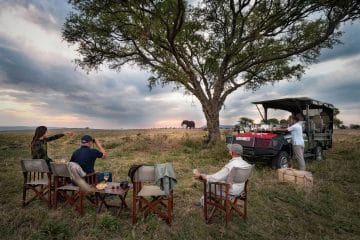
Green Season Migration Safari
East Africa Tanzania Lake Manyara Ngorongoro Crater Serengeti
From $ 5700 /USD

Tanzania Luxury Fly-in Safari in Tanzania
East Africa Tanzania Tarangire Serengeti Ngorongoro Crater
From $ 11150 /USD
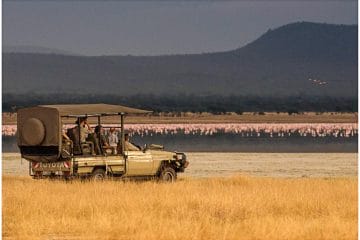
Highlights of Tanzania Group safari
East Africa Tanzania Lake Manyara Serengeti Ngorongoro Crater
From $ 2600 /USD
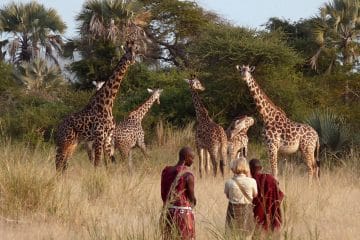
Luxury Safari with migration in Grumeti
Tanzania Arusha Tarangire Lake Manyara Ngorongoro Crater Serengeti
From $ 18300 /USD
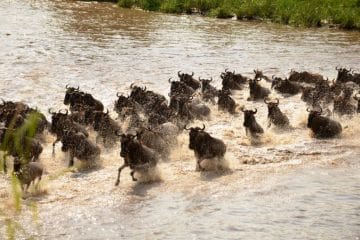
Migration Safari in Kenya and Tanzania With a F...
East Africa Kenya Maasai Mara Tanzania Serengeti Ngorongoro Crater
From $ 7250 /USD
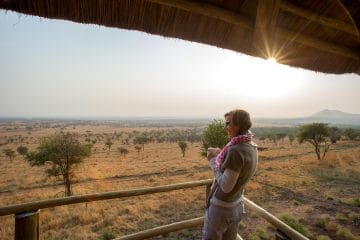
Migration Safari Kenya & Tanzania
East Africa Kenya Maasai Mara Tanzania Ngorongoro Crater Serengeti
From $ 8350 /USD
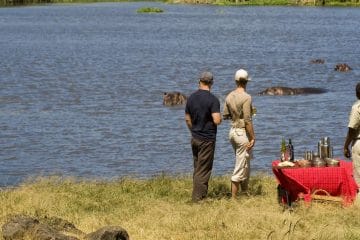
33 Ngorongoro Crater Safaris to choose from
Stay for 6 - 17 days
Experience our Tailor-made Tours in Ngorongoro Crater
When is the best month to travel to ngorongoro crater.
- Ngorongoro in January
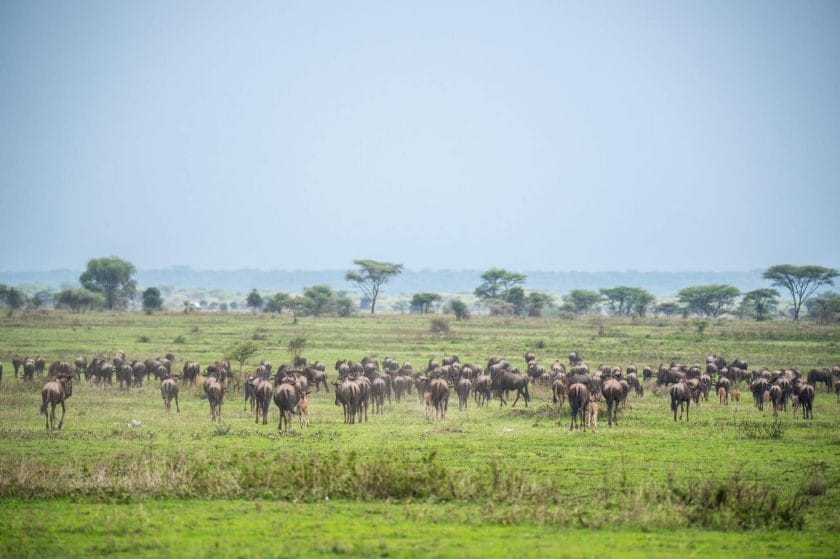
Ngorongoro Crater has a temperate climate characterised by rather chilly nights throughout the year but January is one of the warmest months, with an average daily maximum of 23°C and average minimum of 10°C. January generally marks the end of the so-called short rains, so it shouldn’t be all that wet, but the landscape retains a lush green appearance and the air tends to be crisp and clear. Ample resident mammal populations in the crater are further boosted by migrant herds of wildebeest as they disperse into the south of the Serengeti-Ngorongoro ecosystem, and the month also offers top notch bird watching thanks to the presence of large numbers of Palaearctic migrants and the tendency for many resident birds to display colourful breeding plumages during the rains.
- Ngorongoro in February
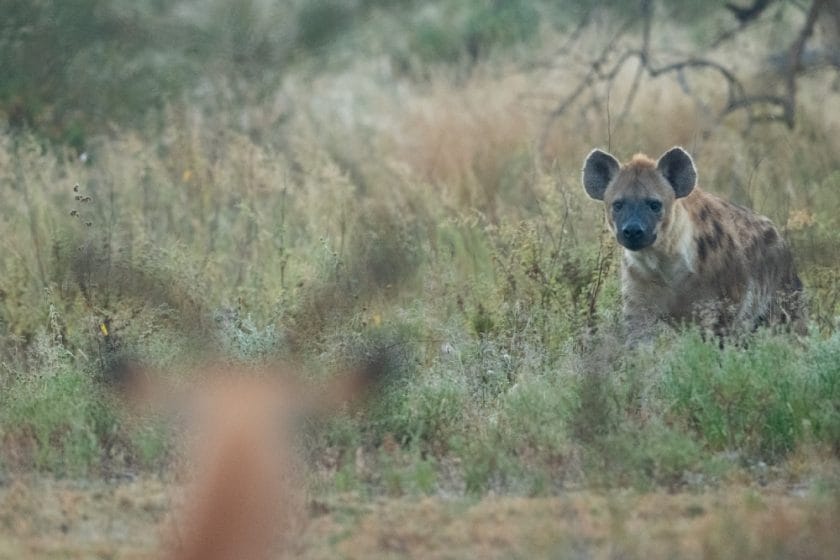
As with January, February is one of the warmest months in this temperate destination, with an average daily maximum of 23°C, but night time temperatures typically drop around 10°C on the crater rim, so be prepared for cool evenings. February is the main cusp month between the so-called short rains and long rains, so rainfall is relatively low (the monthly average is 55m) but the landscape is lush and green. February is also the main calving season for the million-plus wildebeest that congregate in Serengeti-Ngorongoro border area at this time of year, and event that is not only spectacular in itself but that also tends to attract high concentrations of large predators (lion, spotted hyena and cheetah). Birdwatching is excellent to the presence of large numbers of Palaearctic migrants. For those combining a safari with a Kilimanjaro climb, February is one of the best times to tackle the great mountain. The one drawback of visiting in February is that this combination of positive factors attracts a high influx of tourists and corresponding volume of safari vehicles in the crater floor.
- Ngorongoro in March
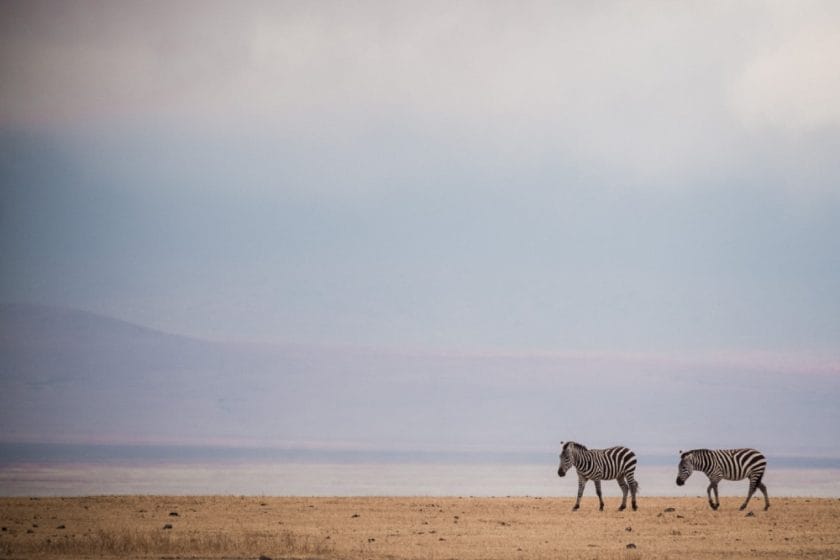
March is a relatively warm month in Ngorongoro, and one of the wettest. The average daily maximum is 22°C, night time temperatures on the crater rim typically drop to around 10°C, and the average annual rainfall is 135mm, though this tends to fall mostly in stormy bursts rather than long bouts of drizzle. The crater floor is lovely and green at this time of year, and there is plenty of wildlife around, not only on the carter floor itself, but also in the more westerly Serengeti border area, where the wildebeest migration is still concentrated in the immediate aftermath of the main calving season. For birders, most of the Palaearctic migrants are present, and many resident species are sporting colourful breeding plumages. Tourist volumes tend be slightly down from February, partly because the calving is over, partly because the monsoon season usually hits Zanzibar – the region’s most popular beach destination – in late March.
- Ngorongoro in April
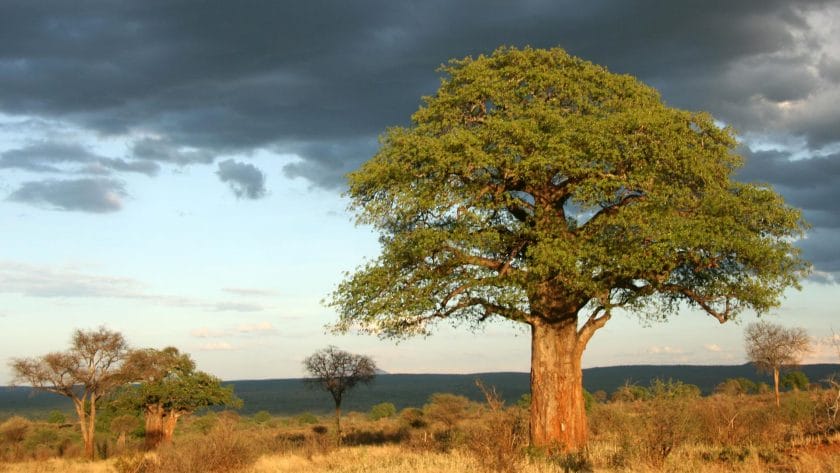
April is the wettest month in most parts of Tanzania, and Ngorongoro is no exception, with the crater rim receiving an average monthly rainfall of 220mm. This has no direct effect on wildlife viewing – on the contrary, wildlife populations within the crater are very high in April – but it does mean that a significant proportion of game drives are likely to be partly rained. Taking other parts of the country into account, April is also the peak of the monsoon season on Zanzibar and the coast, and the worst possible month for Kilimanjaro climbs. On a brighter note, at least for those who’ve no intention of climbing Kilimanjaro or exploring the coast, this weight of negative factors mean that tourist numbers on Tanzania’s northern safari circuit tend to bottom out in April, which makes it an excellent time to experience Ngorongoro and the Serengeti at their least crowded.
- Ngorongoro in May
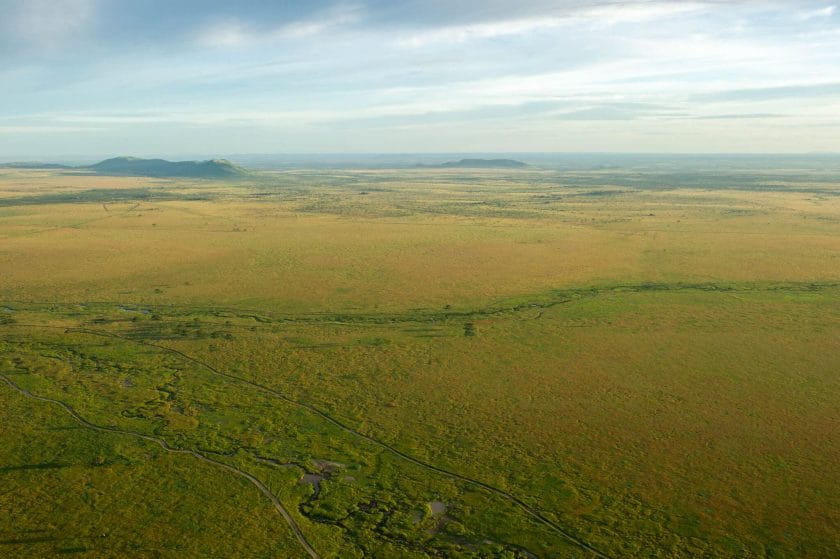
The long rains that peak in April usually continue into early to mid-May, but overall it tends to be a lot dryer that the two months that preceded it. Wildlife viewing is usually excellent, and the scenery is lovely and green, though the wildebeest that amass in the west of the Ngorongoro Conservation Area usually start to head northwest and deeper into the Serengeti at some point before the start of June. That said, for those whose visit to Tanzania is all about the northern safari circuit, May is a pretty good choice, as it tends to be very uncrowded, many hotels and lodges offer discounted rates.
- Ngorongoro in June
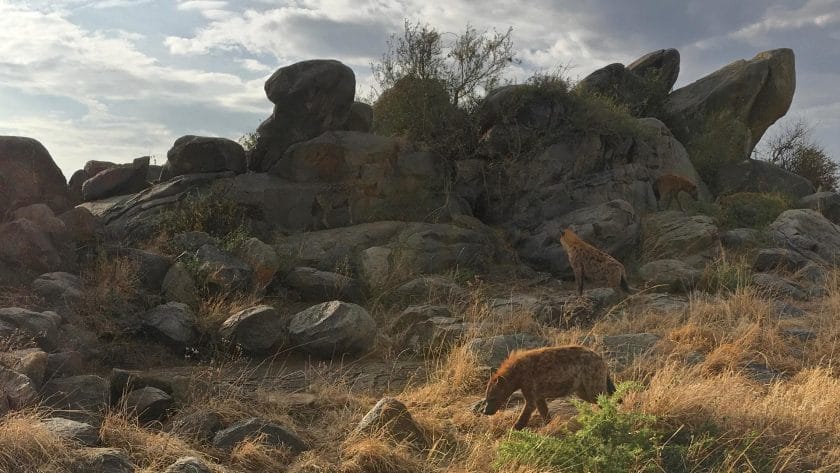
June is arguably the optimum month to visit Ngorongoro Crater. The long rains should be over, but the scenery will still be green and lush, and the safari circuit remains relatively uncrowded, as peak tourist season only starts to kick in towards the end of the month or into July. Looking further afield, it is also a good month for Zanzibar beach holidays and Kilimanjaro climbs, and for catching the Serengeti migration as it moves northwest towards the Grumeti River. There are no real negatives other than that the crater rim will be pretty chilly (average daily maximum 19°C and nightly minimum 8°C) and the avian variety is relatively low.
- Ngorongoro in July
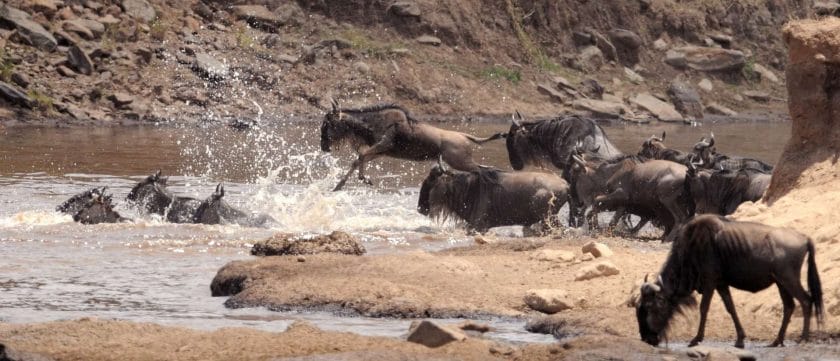
July is a good month to visit Ngorongoro Crater. The long rains will be a distant memory, but the crater shouldn’t have dried out completely, and wildlife is prolific as ever. Further afield, July is also a good month for Zanzibar beach holidays and Kilimanjaro climbs, as well as for optimistic travellers hoping to catch the dramatic Grumeti river crossing as the Serengeti wildebeest march northward through the Western Corridor. Those hoping for an uncrowded safari should be aware that July usually marks the start of the high season in northern Tanzania. Together with June, it is the chilliest month on the crater rim (average daily maximum 19°C and nightly minimum 8°C) but this shouldn’t be a deterrent – just bring plenty of warm clothing.
- Ngorongoro in August

August is one of the driest months in Ngorongoro Crater, and with the long rains having ended two to three months ago, the landscape will be looking parched, yellow and dusty. This makes it easier to see predators on the open plains, so it is great for wildlife spotting, but the hazy skies and starker scenery tends to be less rewarding than wetter time of year for photography. It is also peak safari season, with the wildebeest migration now dispersed along the Mara river in the northern Serengeti and plenty of wildlife activity in Tarangire National Park, whilst also being popular for Zanzibar beach holidays, so things tend to be quite crowded. August is the one of the chilliest months on the crater rim (average daily maximum 20°C and nightly minimum 8°C) so bring plenty of warm clothing.
- Ngorongoro in September
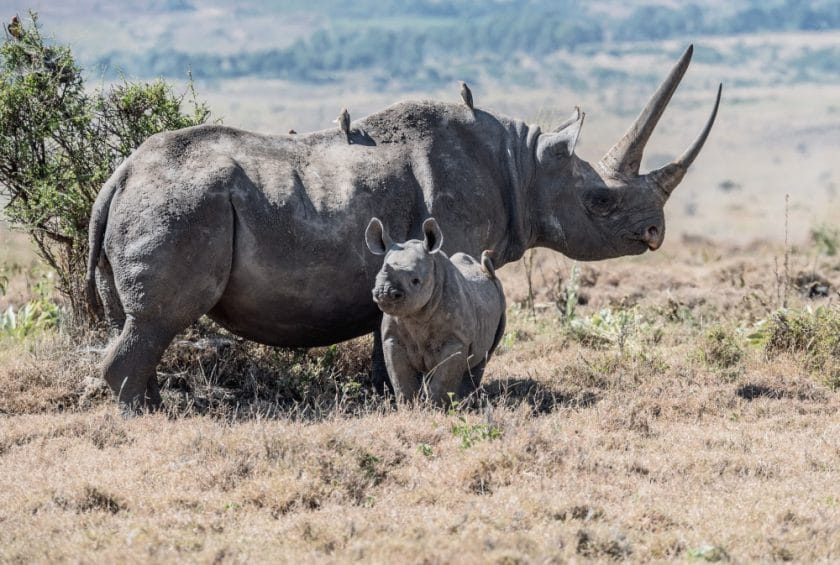
The dry season that started in May or June should continue into August, leaving parts of the crater floor looking like a dust bowl and the remaining grassland all parched and yellow. The low vegetation is great for spotting animals, with predators being at their most conspicuous, and wildlife tends to congregate close to the few remaining sources of drinking water. This is peak safari season in northern Tanzania – as is the case in August, the wildebeest migration will be concentrated around the Mara river in the northern Serengeti and there’s plenty of wildlife activity in Tarangire National Park – as well as popular for Zanzibar beach holidays, so things tend to be quite crowded. The crater rim is quite chilly in September (average daily maximum 21°C and nightly minimum 8°C) so bring plenty of warm clothing.
- Ngorongoro in October
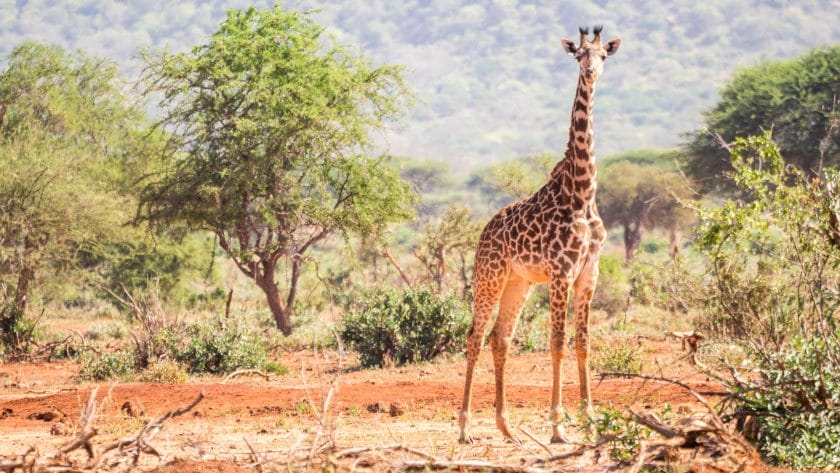
October is a month of transition in Ngorongoro Crater. The start of the month is the height of the long dry season, and much of the crater floor resembles a barren dust bowl of fine volcanic soil, while what grass remains will be low and yellowing, making it easy to spot larger predators, while grazers tend to congregate close to the few remaining sources of drinking water. The first of the short rains usually fall towards the end of October, providing welcome alleviation to the dryness, but unlikely impact negatively on tourist activities. October is peak safari season in northern Tanzania, with the wildebeest migration usually concentrated in the northern Serengeti at the start of the month but starting to travel south once the rains arrive. For those including nearby Tarangire National Park on their activity, wildlife numbers here generally peak in October. Ngorongoro tends to be quite crowded during this time. The crater rim is warms up a bit in October (average daily maximum 22°C and nightly minimum 9°C) so you should still bring plenty of warm clothing.
- Ngorongoro in November
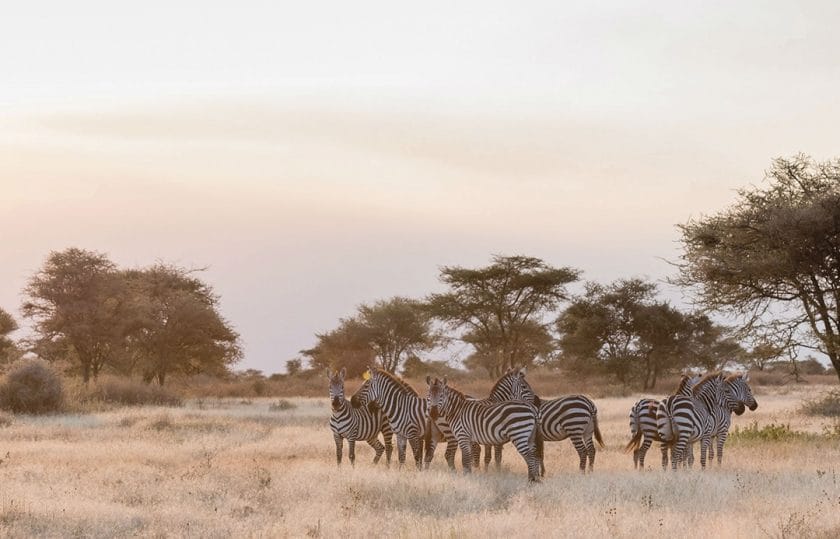
Ngorongoro Crater tends to be relatively warm and wet in November, with an average daily maximum temperature of 22°C, a nightly minimum of 10°C, and around 110mm of rainfall. These short rains are usually not so heavy as to have a negative impact on tourism, and they create an spring-like aura of regeneration to the landscape following the long dry season. Wildlife is plentiful, with the migrating herds of wildebeest and zebra pouring into the Serengeti-Ngorongoro border area after spending the dry season further north, and many animals start breeding at this time of year. For birders, the first of the Palaearctic migrants usually arrive in November. Further afield, November isn’t the greatest month for a beach holiday on Zanzibar or for climbing Kilimanjaro, so Ngorongoro tends to be less crowded than average.
- Ngorongoro in December
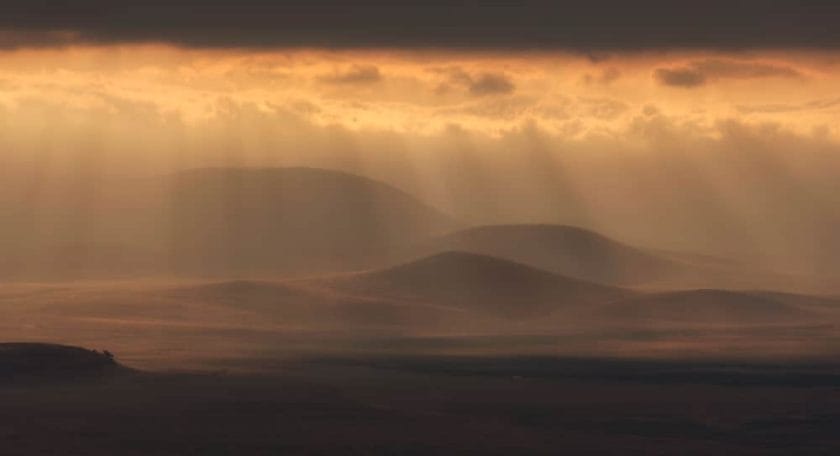
The short rains that started in October continue into December, which is actually the third wettest month in Ngorongoro, receiving an average annual rainfall of 135mm. It is also relatively warm, with average daily temperatures ranging from a minimum of 10°C to a maximum of 22°C. Coming after the long dry season, the rain tends to feel rejuvenated, lending a fresh spring-like feel to the crater and initiating plenty of breeding activity among mammals and birds alike. Wildlife is plentiful, with the migrating herds now concentrated in the Serengeti-Ngorongoro border area, and the influx of Palaearctic migrants is delightful for birders.
Our Recommended Tours in Ngorongoro Crater
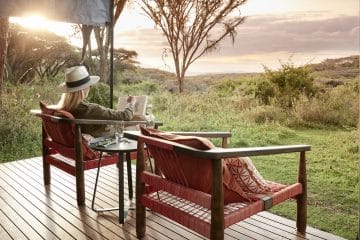
Affordable Fly-in Ngorongoro and Migration Safari
East Africa Tanzania Ngorongoro Crater Serengeti
From $ 6870 /USD
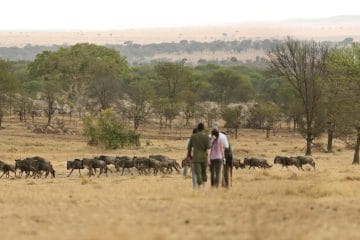
A Romantic Safari in Tanzania
East Africa Tanzania Arusha Tarangire Ngorongoro Crater Serengeti
From $ 7580 /USD
Looking for Something Unique?

Migration Safaris in Africa
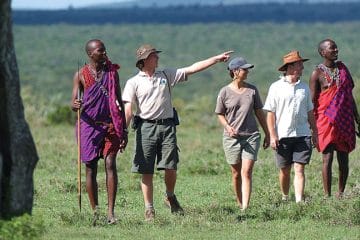
Walking Safaris in Africa
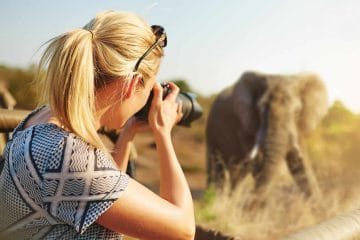
Photographic Safaris in Africa
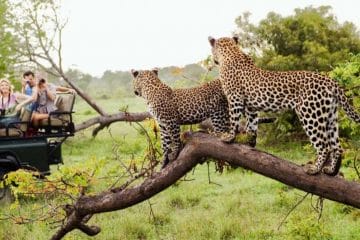
Big Five Safaris in Africa
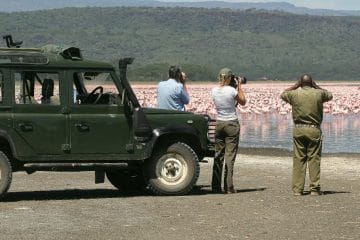
Birding Safaris in Africa
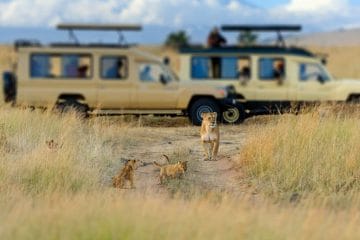
Big Cat Safaris in Africa
Why travel with us?
Recent reviews from travellers who planned and booked their africa trips with discover africa safaris, spectacular.
Tanzania and Kenya Safari Review
Marcy, United States 08 Jan 2024
The whole trip was fantastic with all connections seemless..
Rwanda Gorilla Trekking & Botswana Safari Review
James Draper , New Zealand 19 Jul 2023
Left us with lasting memories and a bucketload of amazing pictures..
Cape Town, Sabi Sands, Victoria Falls & Botswana Safari Review
Nancy Loos, United States 05 Sep 2022
Trip of a lifetime.
African Anniversary Getaway Review
Dani, Canada 09 Jul 2019
Outstanding trip to botswana and zimbabwe..
Botswana and Zimbabwe Review
Chris, Austria 08 Feb 2019
Fantastic planning, wonderful accommodations, amazing experience..
Namibia Safari Tour Review
Jana, United States 18 Aug 2018
Ready to plan your tailor-made safari.

Steve Conradie, Co-founder, Discover Africa
Free safari planning advice from destination experts
Faqs about ngorongoro crater.
- This magnificent Ngorongoro crater is over 600 meters (2000 feet) deep, with high walls towering around the crater edge and a massive area of 259 km2.
- With Ngorongoro wildlife remaining in the steep-walled crater all year, the question of when to go on a Ngorongoro Crater safari is more about how many other people and vehicles you want to share the crater with.
- High visitor numbers can be expected during the dry peak season of July to September, as well as the December to February calving season that follows the November rains.
- With this in mind, the main rainy season of April to May is often regarded as the best time to visit the Ngorongoro Crater because there are far fewer visitors and the crater is lush and green in comparison to the dusty dry-season landscape.
- The Ngorongoro Crater is a massive caldera formed over 2.5 million years ago when a volcano the size of Mount Kilimanjaro erupted and then collapsed on itself.
Our Recommended Activities in Ngorongoro Crater
- Maasai Visits
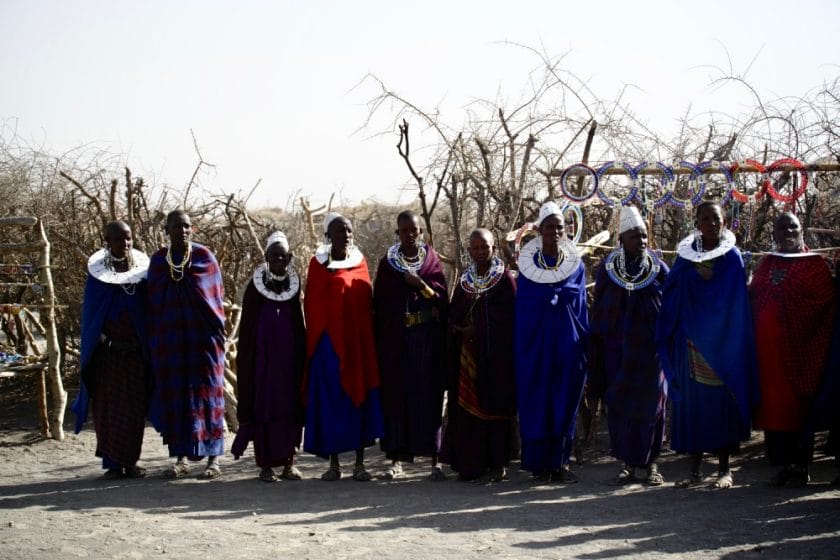
Ngorongoro Conservation Area is one of the last places in Africa where large herds of wildlife still roam alongside people. The people in question are the pastoralist Maasai, staunch traditionalists renowned for their ongoing adherence to a cattle-herding lifestyle and distinctive attire of toga-like red blankets, ochre-dyed hair and beaded jewellery. Several Maasai ‘cultural villages’ scattered in and around Ngorongoro Conservation Area now cater to tourists, and while these manyattas admittedly offer a slightly contrived the experience, all are longstanding Maasai settlements whose inhabitants live a largely traditional lifestyle – and the opportunity to meet, interact with and photograph these proud and charismatic people (whose traditional respect for the local wildlife is the main reason why so much of it still survives in Maasailand) is not to be missed.
See Ngorongoro Crater in Your Comfort
- Affordable Safari in the Ngorongoro
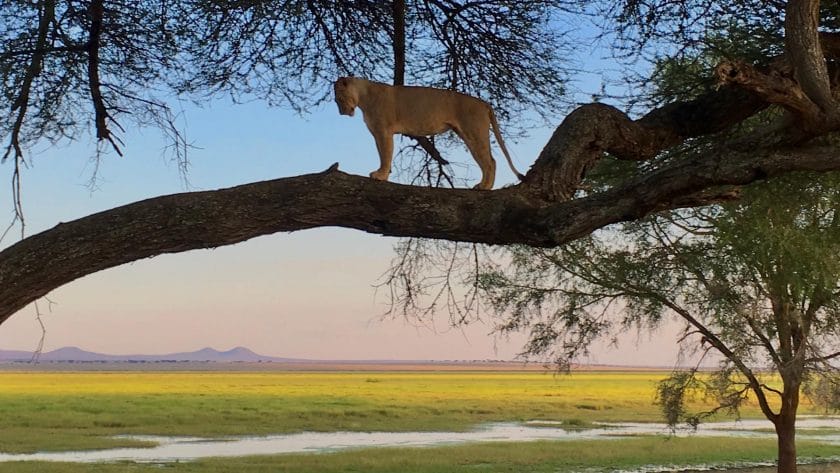
Affordability is a relative thing when it comes to Ngorongoro and the other parks along the northern Tanzania safari circuit. All the parks are serviced by mid-range lodges but these tend to charge rack rates that would be considered upmarket in most other contexts. With Ngorongoro specifically, a good way to keep things affordable is to stay in or around Karatu – although it is less atmospheric than sleeping on the crater rim. Rooms in terms of quality are probably 50% cheaper outside the conservation area, and there are even a few genuine mid-range options that offer simple but comfortable accommodation at wallet-friendly rates. Accommodation and meals aside, most costs associated with an Ngorongoro or northern Tanzania safari (for instance, fuel, driver and conservation fees) are pretty much the same irrespective of whether it is labelled a budget, mid-range or upmarket safari, but the ‘per person’ cost of a safari will decrease significantly if these are split between a group of four or five like-minded friends or family rather than a solo traveller or couple.
- Budget Ngorongoro Safari
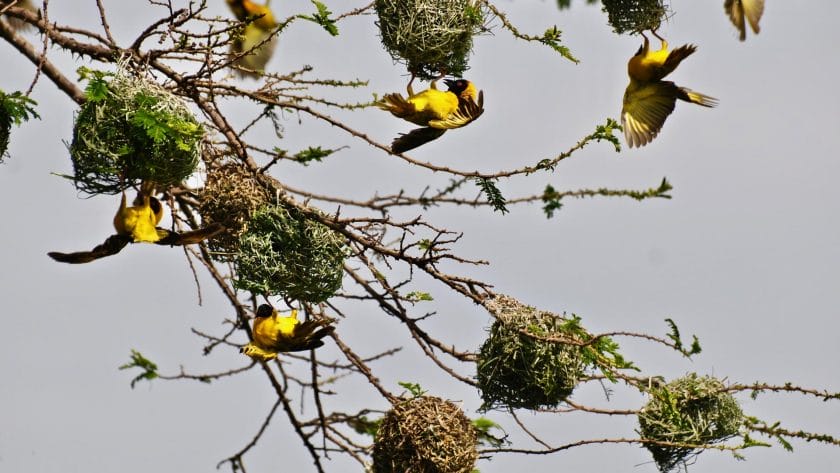
The Ngorongoro Crater cannot be considered a budget destination. The conservation authority charges a high daily entrance fee and crater service fee and access is only realistic in a sturdy and well-maintained 4×4 with an experienced local driver, and accommodation on the crater rim and in nearby Karati is all pretty pricey. The best way to keep down costs is to camp, either at the official campsite on the crater rim (stunning location, but expensive, with limited amenities, and very cold at night) or at one of several equipped but less attractive private sites close to Karati. It will also cut the price significantly if you join or try to put together a group of four of five like-minded travellers, so that transport-associated costs can be split between several people, bearing in mind that most itineraries would also take in a couple of other safari destinations, for instance Serengeti, Tarangire and/or Lake Manyara National Park.
- Luxury Safari in Ngorongoro
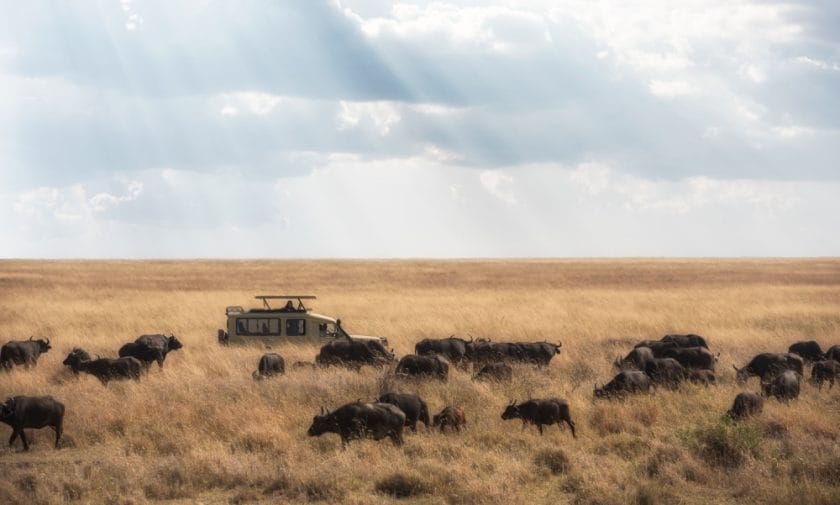
Northern Tanzania boasts some of the most luxurious, exclusive and expensive lodges anywhere on the African safari circuit. Typically, these offer packages inclusive of world-class cuisine, house wines and beer, and game drives with guides who boast a higher level of expertise and far greater local knowledge than the average jobbing safari driver. These all-inclusive lodges also tend to cater to a clientele willing to pay more to fly between lodges rather than to drive along the long, bumpy, spine-jarring roads characteristic of the region. It should be noted that exclusivity and luxury are not always synonymous in northern Tanzania: some of the region’s most prestigious camps and lodges are truly world class in every respect, but others are semi-permanent or mobile tented camps whose main selling point is their remote, down-to-earth and exclusive atmosphere rather than five-star amenities.
Who is Travelling to Ngorongoro Crater with you?
- Family Safari in the Ngorongoro
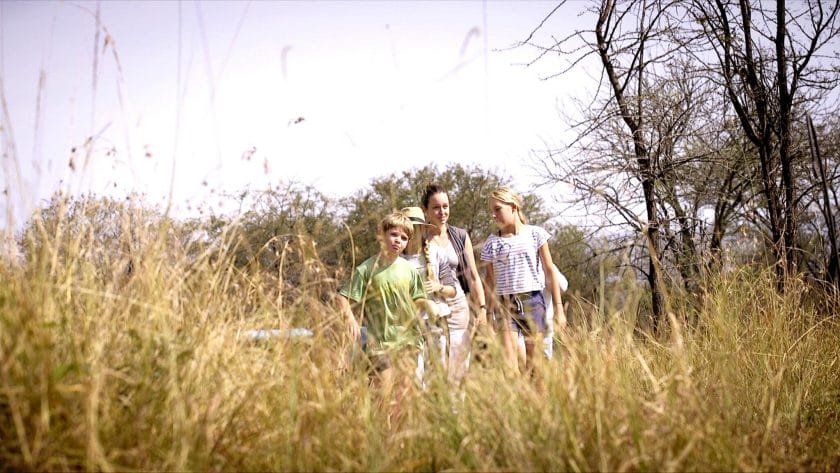
Ngorongoro and the other reserves that comprise Tanzania’s northern safari circuit are well suited to family and small group safaris. Cost-wise, since almost all safaris are undertaken in 4x4s with pop-up tops, the optimum group size is four or five individuals, though larger groups can always be split between two or more vehicles. It is generally a good idea for groups to be reasonably compatible in terms of previous safari experience and special interests – repeat safari goers often have different priorities than first-timers, while passionate birdwatchers or photographers are likely to get up the noses of less dedicated fellow passengers. For this reason, unless your budget absolutely dictates it, we would recommend against joining a group safari with strangers.
- Honeymoon Safari in the Ngorongoro
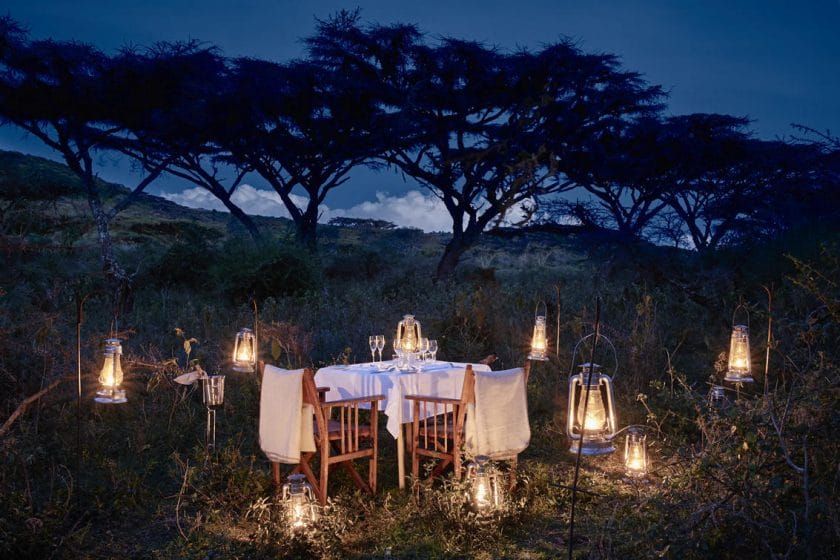
Bespoke safaris are the name of the game in Tanzania, and probably half of the open-topped 4x4s you see in Ngorongoro and elsewhere on the northern safari circuit are occupied by one couple. In many respects, the best way to explore the area is with a like-minded partner rather than a larger group with more divergent interests and temperaments. It is also a more spacious arrangement than cramming four or more passengers into one vehicle. For honeymooners, the Ngorongoro Crater rim must one of the most romantic and memorable settings imaginable. While long dusty game drives on a chilly highland morning watching lions devour gazelles or elephants depositing their heavyweight stools on the roadside might not be everyone’s cup of romance, the crater rim does boast a couple of lodges whose honeymoon facilities live up to the superb setting. A popular option with honeymooners to Tanzania is a few days on safari taking in Ngorongoro and the greater Serengeti area, or even a sojourn into Kenya if you have the time and budget.
- Solo Travel to the Ngorongoro
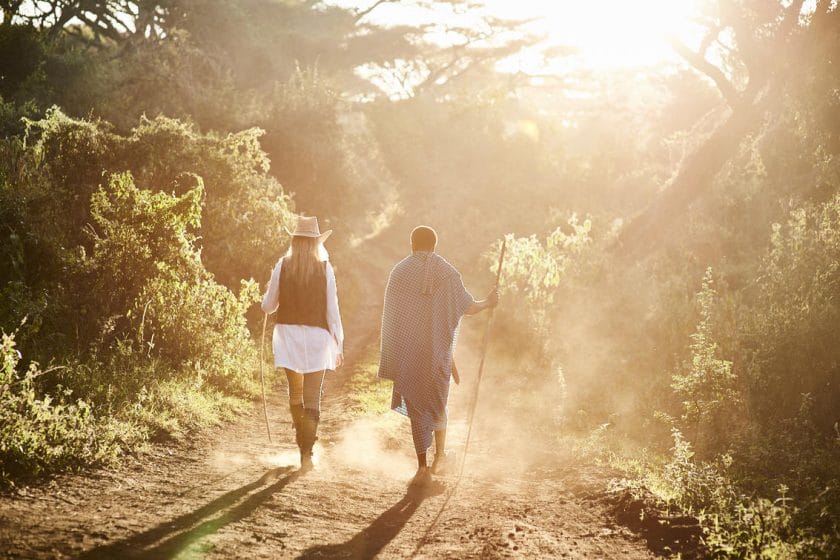
Very few people visit Ngorongoro solo. The main reason for this is presumably because a solo safari in northern Tanzania works out to be so much more expensive per person than it does for a couple or a small group. That said, if cost is not an obstacle, there is absolutely no reason why you couldn’t do a solo safari to Ngorongoro and elsewhere in Tanzania. Those actively seeking company along the way might do best to fly between the sort of exclusive lodges that offer all-inclusive packages, shared game drives and a common dining experience. Those that prefer their own company might prefer to book a bespoke road safari with their own driver/guide throughout. Special interest groups for which a solo safari might be preferable to joining a group safari are photographers and birdwatchers who want to pursue their passion without having to compromise to allow for the requirements of more generalist safari goers.
What You Need To Know
- Welcome to the Ngorongoro Crater
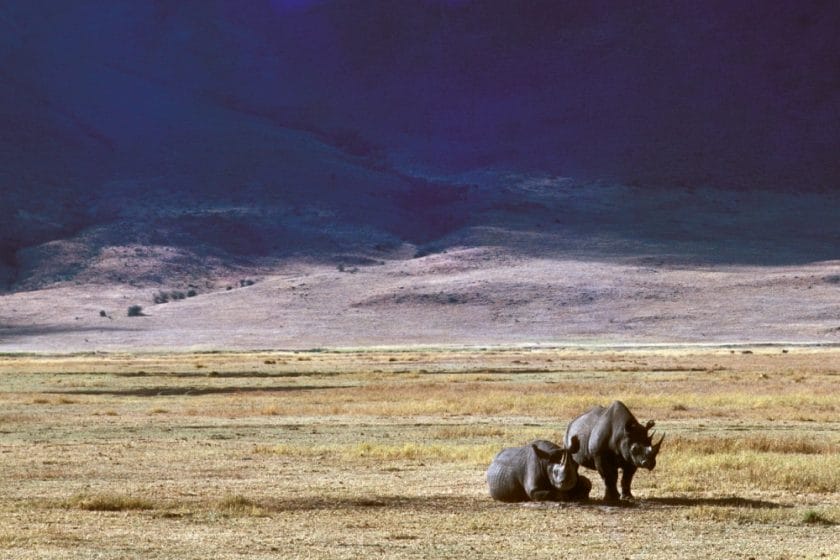
The Ngorongoro Conservation Area is the largest unbroken, unflooded volcanic caldera in the world. It is a scenic showstopper that extends across an astonishing 260 square kilometres. The crater is hemmed in on all sides by sheer craggy walls that rise up to 600m above the floor. The view from the lushly forested rim is utterly stupendous and would justify a visit to Ngorongoro in its own right. But this spectacular crater also stands as one of Africa’s most alluring safari destinations, supporting solid populations of all of the Big Five (elephant, lion, leopard, black rhino and buffalo), plus a host of other iconic large mammals, in a lush and scenic landscape that frequently draws comparisons to the metaphorical “Garden of Eden”. Extending eastward from its border with the Serengeti National Park, the 8,292-square-kilometre Ngorongoro Conservation Area forms part of the greater Serengeti ecosystem, and its western plains lie along a migration route followed annually by some 2,5 million wildebeest and other ungulates. The eastern part of the conservation area comprises the Crater Highlands, a geologically spectacular region of volcanic peaks and craters formed by the same tectonic forces that created the Great Rift Valley below. Most of the crater highlands stand above the 2,000m contour, and while the loftiest peak, Lolmalasin, only ranks third among Tanzania’s mountains (after Mount Kilimanjaro and Mount Meru), there is no higher summit in any of the dozen African countries that lie to its south.
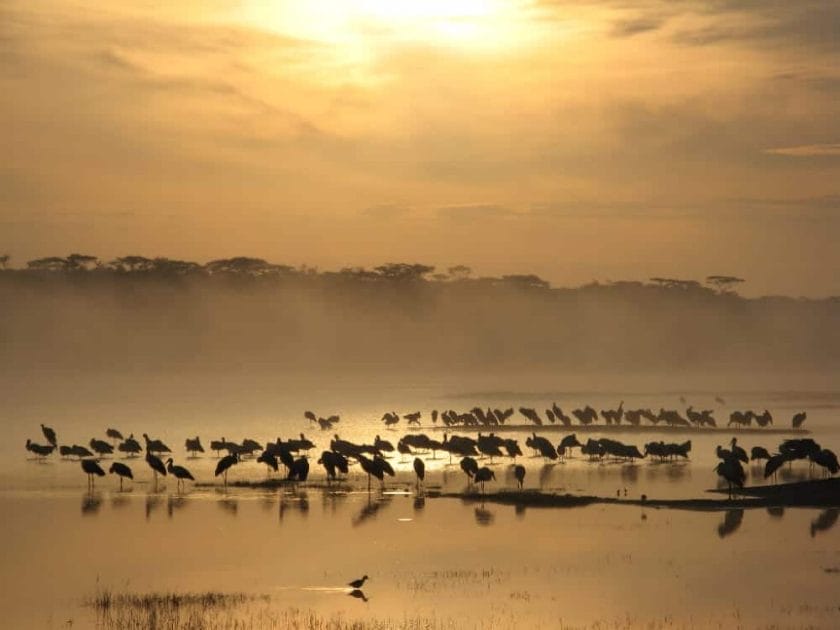
Ngorongoro Conservation Area was inscribed as a UNESCO World Heritage Site in 1979. It is one of only 38 such sites worldwide to be listed on mixed natural and cultural criteria. In addition to its staggering volcanic scenery and profuse wildlife, the conservation area contains many archaeological sites of great international importance. Most notable among these is Oldupai Gorge, where Richard and Mary Leakey discovered the game-changing , 1,75 million-year-old fossil jawbone nicknamed Nutcracker Man in 1959. Nearby, the three-million-year-old Laetoli footprints are the most ancient hominid tracks ever found. Another striking feature of Ngorongoro Conservation Area is that among African game reserves of comparable stature, it still supports significant human communities, comprised mainly of traditionalist Maasai and Datoga pastoralists and Hadza hunter-gatherers, all of whom co-exist reasonably harmoniously alongside the prodigious wildlife.
- Wildlife in the Ngorongoro Crater
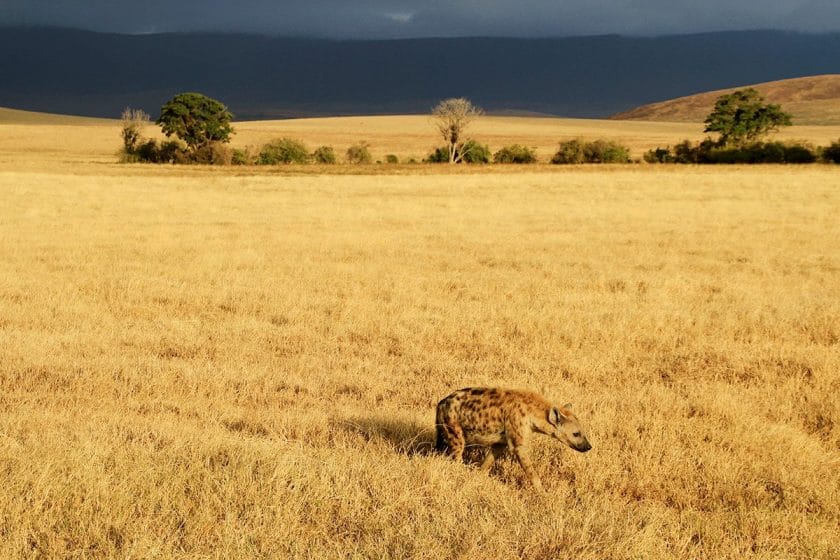
The game viewing centre piece of Ngorongoro Conservation Area is the grassy floor that stands at an altitude of 1,800m. T he crater is dominated by a cover of open savannah that looks lush and green during the rainy season but is altogether dustier and more windswept during drier months. Important micro habitats within the crater floor include the fever-tree forest at Lerai, the shallow saline Lake Magadi, the lush reed-fringed Gorigor Swamp, and a permanent hippo pool fed by Ngoitokitok Springs. The open grasslands of the crater floor is home to immense concentrations of grazing antelops all year through, with numbers peaking between December and May, the main rainy season. Most common are blue wildebeest and Burchell’s zebra, resident populations of which are estimated at 10,000 and 5,000 respectively. Wildebeest and zebra are commonly seen together and/or in the company of other grazers such as the diminutive Thomson’s gazelle, the larger and longer-horned Grant’s gazelle, and the rather doleful looking topi and Coke’s hartebeest). Other less numerous antelopes include the handsome Defassa waterbuck (which differs from the common waterbuck in having a redder tinge to the coat and a full white rump), the secretive bushbuck, and the massive eland, all of which are most commonly seen in the vicinity of Lerai Forest or swampy areas.
The crater floor supports significant populations of all the Big Five. Most commonly the African buffalo, large herds of which are often seen marching across the crater floor in search of grazing or water. Least likely to be seen is the leopard, which is resident on the crater floor, but only in small numbers due to a lack of suitable habitat, and tends to be retiring and secretive. Ngorongoro Crater serves as something of a retirement ground for old elephant bulls, many of which sport outsized tusks to dimensions now seldom seen in parts of Africa that have suffered from commercial poaching in recent decades. Lerai Forest and the nearby Gorigor Swamp are the favoured haunt of these mighty male tuskers, up to 70 of which are resident at any given time. Oddly, no elephant breeding herds are resident on the crater, though females and family herds do pass through from time to time.

Ngorongoro Crater is one of the best places in East Africa to look for the black rhino, an endangered species with a very restricted presence in Tanzania. Between 1964 and 1992, the crater’s resident population of these cumbersome beasts decreased from an estimated 100 individuals to no more than 10 as a result of poaching. Since then, the local rhino population and the diversity of the gene pool has been boosted by the introduction of several individuals from South Africa, though the authorities are reluctant to publicise actual numbers. All the crater’s rhinos have been fitted with a tracking device in their horns, in order to monitor their movements and to discourage poachers. They tend to range between the Lerai Forest and Lake Magadi, browsing in the latter by night and then moving into more open terrain by day. Their unusually pale coloration is attributable to a predilection for bathing in saline Lake Magadi and rolling in the fringing salt flats. The floor of Ngorongoro Crater reputedly supports Africa’s densest concentration of lions, with up to 100 individuals present in suitable conditions. That said, lion numbers do fluctuate somewhat, due to a combination of disease (the closed nature of the crater makes its inhabitants particularly vulnerable to epidemics), emigration from and immigration to the surrounding highlands, and occasional pride takeovers that often result in the new dominant male killing all unrelated cubs and adolescents. It would be unusual to spend a day in the crater and not see any lions, which are generally very relaxed around vehicles, though they might be encountered just about anywhere so it is difficult to predict where you might find them.

Other predators are well represented too. Most populous is the spotted hyena, which is Africa’s second largest carnivore after the lion, and tends to be less dependent on scavenging than is popularly assumed. An estimated 400 individuals are resident in the crater, so you are unlikely to spend long there without stumbling across one. If you specifically want to seek out a hyena, head to the eastern shore of Lake Magadi, where they often rest up during the day, occasionally trying to sneak up and snack on the flamingos that flock the shallows. The open grasslands of the crater floor are the perfect cheetah habitat, and there are also plenty of small antelope for these feline speedsters to feed on, so it’s a bit surprising that none were present as recently as the 1990s. The most likely explanation for this is competition with the dense populations of lion and spotted hyenas, both of which will routinely chase a cheetah off a fresh kill. Since 2000, however, cheetahs have recolonised the crater floor and they are now quite commonly seen stalking through the plains in search of gazelle.
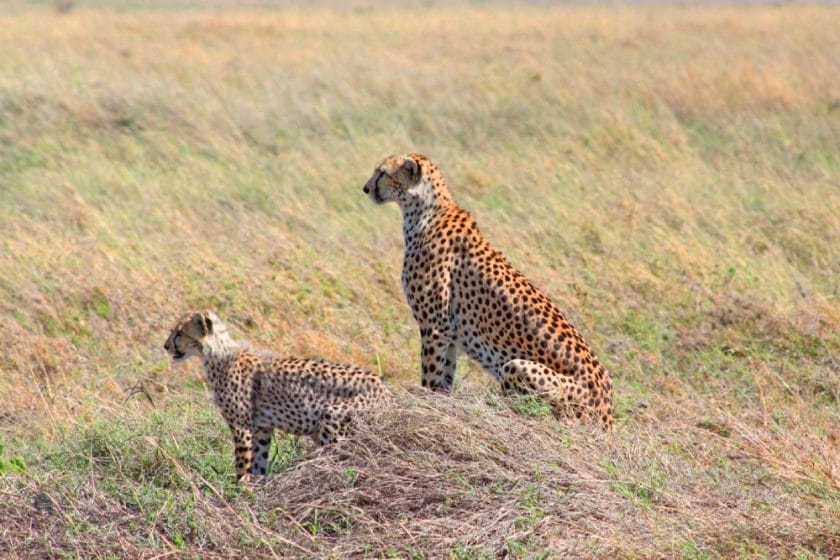
Other common predators are the golden jackal, black-backed jackal and bat-eared fox, with the former being most likely to be encountered due to its relatively diurnal habits. By contrast, giraffe and impala, both common on the surrounding plains, are totally absent from the crater floor. In the case of the giraffe, this is possibly attributable to a lack of suitable browsing fodder, or to the difficulty of descending the steep crater walls, but the absence of impala is a mystery. ### Birds A high proportion of the 550-plus bird species recorded in the Ngorongoro Conservation Area inhabit the crater floor. For casual visitors, a highlight is the large flocks of lesser and greater flamingo that aggregate in Lake Magadi, tinting its margins pink from a distance. Common grassland specialists include ostrich (the world’s largest bird), Kori bustard (the world’s heaviest flying bird, known for its spectacular mating dance) and a host of smaller ground birds including the exquisite rosy-throated longclaw, the babbler-like rufous-tailed weaver (a species endemic to the Tanzanian interior) and various larks, wheatears and pipits. Moist grassland often supports flocks of the lovely grey crowned crane and (in the rainy season) huge flocks of migrant white, black and Adbim’s storks. Lerai forest is the place to seek out striking woodland specialists such as Hildebrandt’s starling, green wood hoopoe and Fischer’s lovebird.
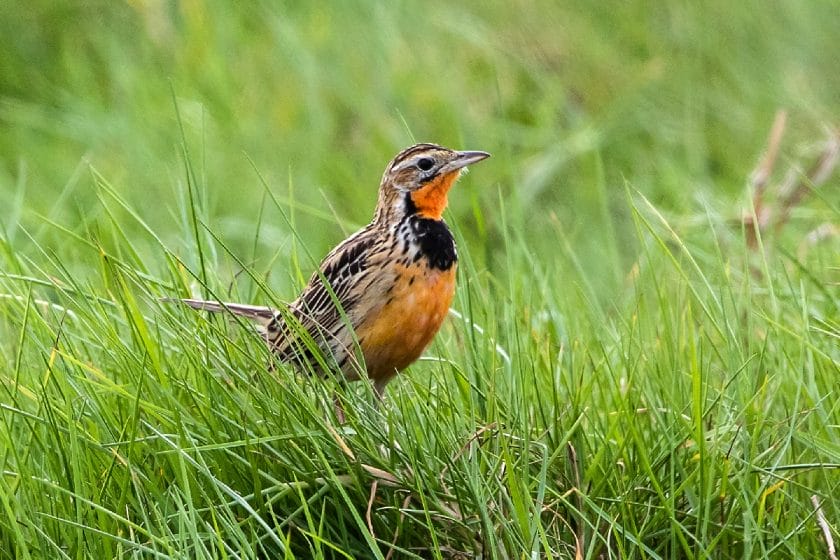
Raptors are abundant. The most conspicuous species is the handsome augur buzzard, sometimes seen here in its unusual melanistic form, but always distinguishable by its reddish tail. The crater floor is ideal habitat for the secretary bird, an anomalous long-legged terrestrial hunter that stands up to 1.5m tall and feeds mainly on snakes, which it stamps to death in a bizarre flailing dance. The most interesting of seven vultures recorded in the crater is the Egyptian vulture, a localised species whose who know to crack open ostrich eggs by holding a stone in its beak, making it the only avian tool-user. Finally, on the subject of scavenging birds, watch out for the black kites that haunt the picnic site at Ngoitokitok Springs, swooping down on unprepared tourists to snatch the food from their hands! The Afromontane forest that swathes the crater rim supports a very different flora and fauna to the crater floor. Mammals are thinly distributed, but the forest does support a dense population of elusive leopards, plenty of blue monkeys and bushbuck, as well as the secretive bushpig and the localised tree hyrax (which is more difficult to see than the rock hyrax, but reveals its presence with an far-carrying eerie nocturnal call that sounds like it comes from a much larger creature). Colourful forest birds often seen in lodge gardens on the crater rim include bar-tailed trogon, cinnamon-chested bee-eater, baglafecht weaver, tacazze sunbird, malachite sunbird, golden-winged sunbird and Schalow’s turaco.
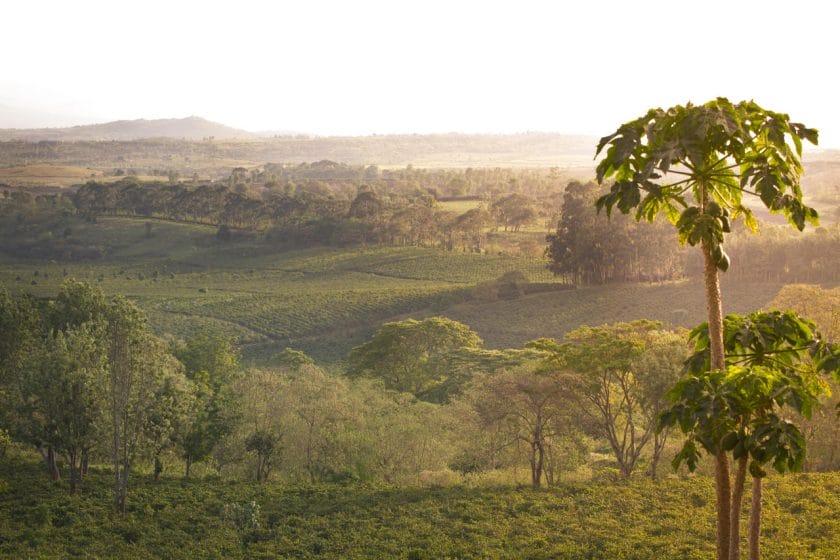
Elsewhere the crater highlands support a cover of open Afromontane grasslands where low volumes of grazers such as buffalo and zebra coexist with domestic cattle owned by the red-robed Maasai who still pursue their traditional pastoral lifestyle in the area. Game is rather more prolific in the relatively low-lying short-grass plains that stretch west from the base of the Crater Highlands to the Serengeti border. Indeed, this Serengeti-Ngorongoro border region is the main focal point of the annual Serengeti migration of more than two million wildebeest and other ungulates during the rainy season (typically from late November to early May) and it is also where the wildebeest calving takes place over February.
- Ngorongoro Travel Tips
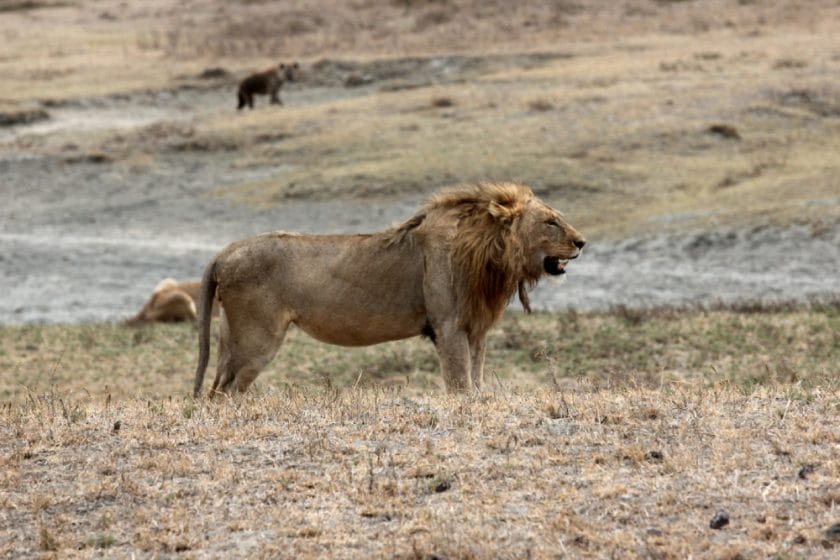
Ngorongoro Conservation Area can only realistically be explored in a solid 4×4. The 150km road from the northern Tanzanian ‘safari capital’ Arusha to Lodware Entrance Gate, the only access point along the eastern border, is now surfaced in its entirety, and can be covered in less than three hours. All roads within the conservation are unsurfaced, however, and most – including the bumpy descent and ascent tracks to the crater and corrugated strip of fine compacted ash running west to Serengeti National Park – are pretty rough going. Tanzania’s safari industry is not really geared towards a self-drive approach, and the roads are unsuited to large coach tours, which means that almost all visitors to Ngorongoro either join a bespoke or small-group safari with a local driver-guide, or fly from Arusha to a camp offering a package inclusive of game drives. In theory, Ngorongoro Crater could be visited on a standalone one or two-night safari out of Arusha, but in practice it usually forms part of a longer (5-14 day) safari taking in some or all of the other highlights of the northern Tanzania safari circuit i.e. Serengeti National Park, Lake Manyara National Park, Tarangire National Park and Arusha National Park. – A day trip to Ngorongoro Crater is worth planning carefully. Vehicles are forbidden from entering the crater before 07h00, and they must leave before 18h00, and a hefty ‘crater service fee’ is payable every time a vehicle enter the crater. This combination of rulings has forged a situation where most safaris breakfast at their lodge before going on a game drive and carry a picnic lunch. Far preferable, however, to take a packed breakfast and lunch, allowing you to get down into the crater as early as possible, partly because early morning offers the best photographic light, but also because the place is at its most magical before the tourist hordes descend, with the main procession usually starting the descent from 08h00 onwards.
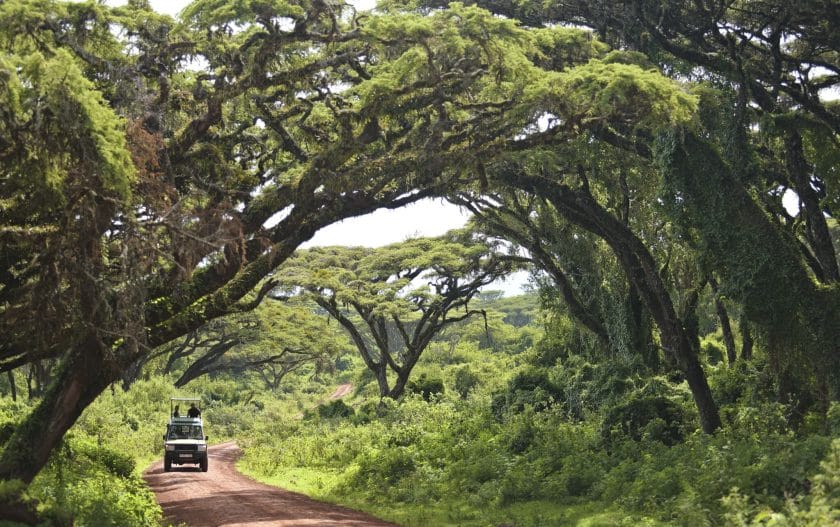
The conservation authority forbids tourists from staying overnight within Ngorongoro Crater. But several tourist lodges and tented camps are perched on the lofty crater rim, offering fine views over the floor and its teeming wildlife, and there is also a campsite. Plenty of accommodation is also available in and around the town of Karatu, which straddles the main surfaced road from Arusha about 15 minutes’ drive from Lodware Entrance Gate. The lodges on the crater rim are preferable in terms of views and for placing you as close as possible to the heart of the action, but accommodation in and around Karatu tends to offer better value for money. Either way, the elevated altitude of the crater rim and Karatu largely negate their near-equatorial location and nights can be decidedly chilly, so bring plenty of warm clothing to wear in the evening and early morning game drives.
- Weather in Ngorongoro
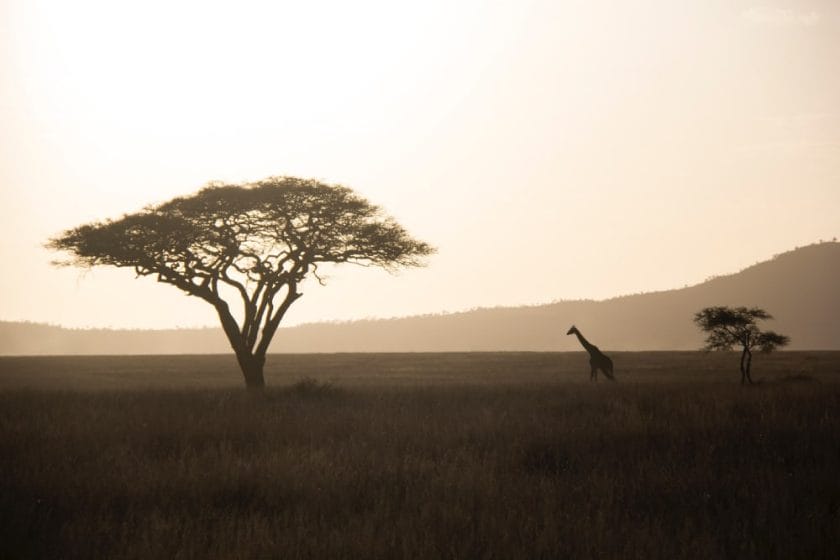
Although Ngorongoro and the Crater Highlands stand in the heart of the tropics less than 200km south of the equator, the high elevation (mostly above 2,000m) means the climate is surprisingly cool, seldom rising above 25°C by day and more often than not dropping to below 10°C by night. It tends to be sunny by day, but cloudy weather is far from unusual and the gap in altitude between the crater floor and rim usually results in a significant build-up of mist in the early mornings. Ngorongoro’s tropical location means there is relatively little seasonal variation in average minimum and maximum temperatures, though the period from October to March tends to be a few degrees warmer than the closest months of May to August. Rainfall is far more seasonal, since it is largely associated with the moist trade winds that blow inland from the Indian Ocean over November to May. More than 80 percent of the annual precipitation of 1,000mm falls over these months, with December. March and especially April being the wettest months. By contrast, rainfall over June to September stands at less than 20mm per month. Despite this, it is fine to visit Ngorongoro at any time of year and there are several more compelling factors in deciding your timing than climate. Because the crater can get quite crowded with safari vehicles during peak seasons, those seeking a relatively untrammeled atmosphere might consider aiming for April and May, which are the quietest months for tourism, not only both in Ngorongoro but in all the other reserves along the northern Tanzania safari circuit.
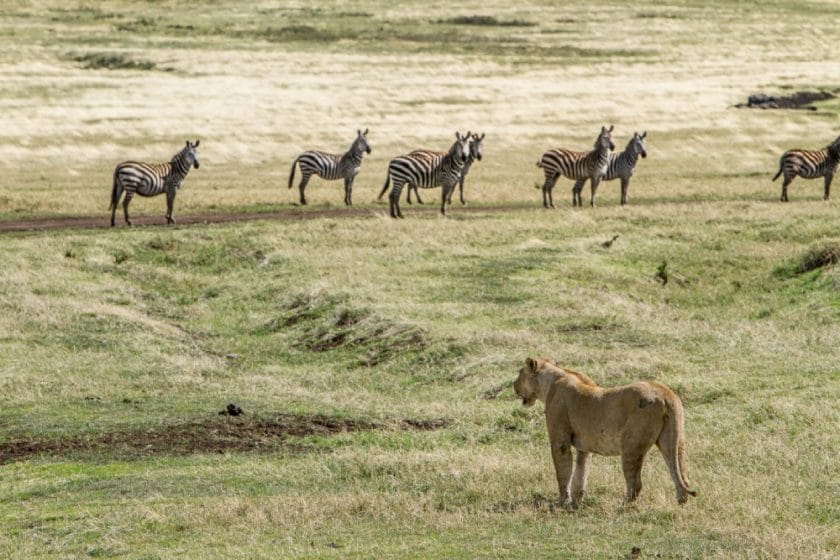
Since Ngorongoro is usually just a one- or two-night stop on a more extended holiday in Tanzania, the timing of a visit should also allow for seasonal factors at other sites on the itinerary. Those continuing on to the Serengeti might opt to time their safari to try to catch the wildebeest calving season in the south (February) or the peak period for river crossings in the north (August and September), while beach lovers on a safari-and-sand package would almost certainly want to avoid peak monsoon season on Zanzibar and the coast (April and May) and hikers tackling Kilimanjaro should aim to climb during one of its dry seasons (January to March or June to October).
- Why Ngorongoro Crater
Registered Members of these Organizations
USEFUL LINKS
- African Safaris
- African Safari Tours
- African Safari Lodges
- Why Book with us?
- Content Collaborations
- Safari Cost Estimator Tool
- Wildebeest Migration
- Privacy Policy
- Website Terms of Use
POPULAR COUNTRIES
- View All Countries
- South Africa Safaris
- Botswana Safaris
- Kenya Safaris
- Tanzania Safaris
- Namibia Safaris
- Rwanda Safaris
- Uganda Safaris
- Zambia Safaris
- Zimbabwe Safaris
POPULAR DESTINATIONS
- View All Destinations
- Cape Town Holidays
- Kruger Safaris
- Victoria Falls Safaris
- Masai Mara Safaris
- Serengeti Safaris
- Etosha Safaris
- Chobe Safaris
- Okavango Delta Safaris
TRAVEL BLOGS
- Cape Agulhas Development Enhances Africa’s Southernmost Experience
- Virgin Atlantic and Kenya Airways improve connectivity to Kenya
- South Africa’s Mega Landscapes Plan: Conservation Boost or Nature Risk?
- Rwanda vs Uganda: Which is Better for Mountain Gorilla Trekking?
- Kruger’s New Gate to Grow Tourism + SA’s Top Parks to Visit in 2024
DISCOVER AFRICA SAFARIS
2nd floor, Tygervalley Chambers One, 27 Willie van Schoor Avenue, Bellville, Cape Town , 7530

Passing Thru Travel
Serengeti National Park 2024: 10 Ultimate Adventures That Will Ignite Your Wanderlust
Posted: March 15, 2024 | Last updated: March 15, 2024
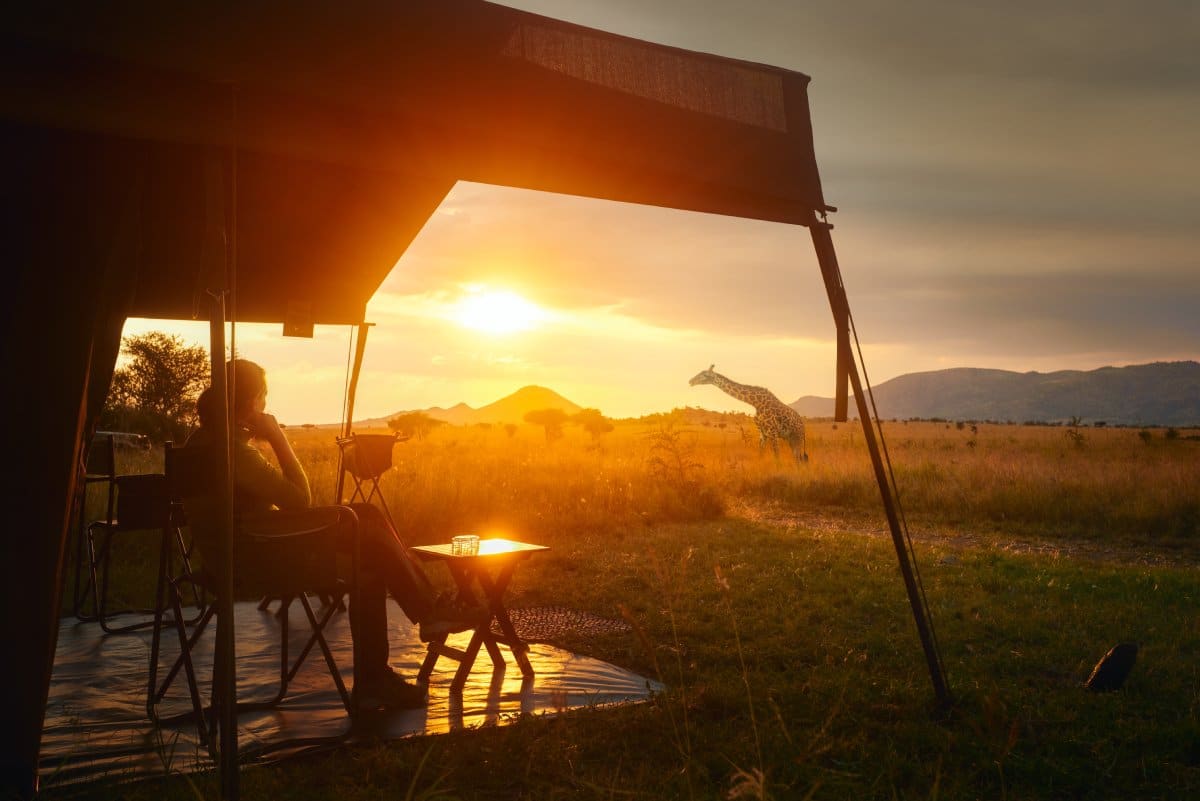
Serengeti National Park, a UNESCO World Heritage site in Tanzania, is a symbol of African wildlife conservation. Known for its vast savannahs, the park is home to the great wildebeest migration and diverse wildlife. This comprehensive guide will lead you through the best experiences Serengeti has to offer, providing insider tips to enhance your journey.
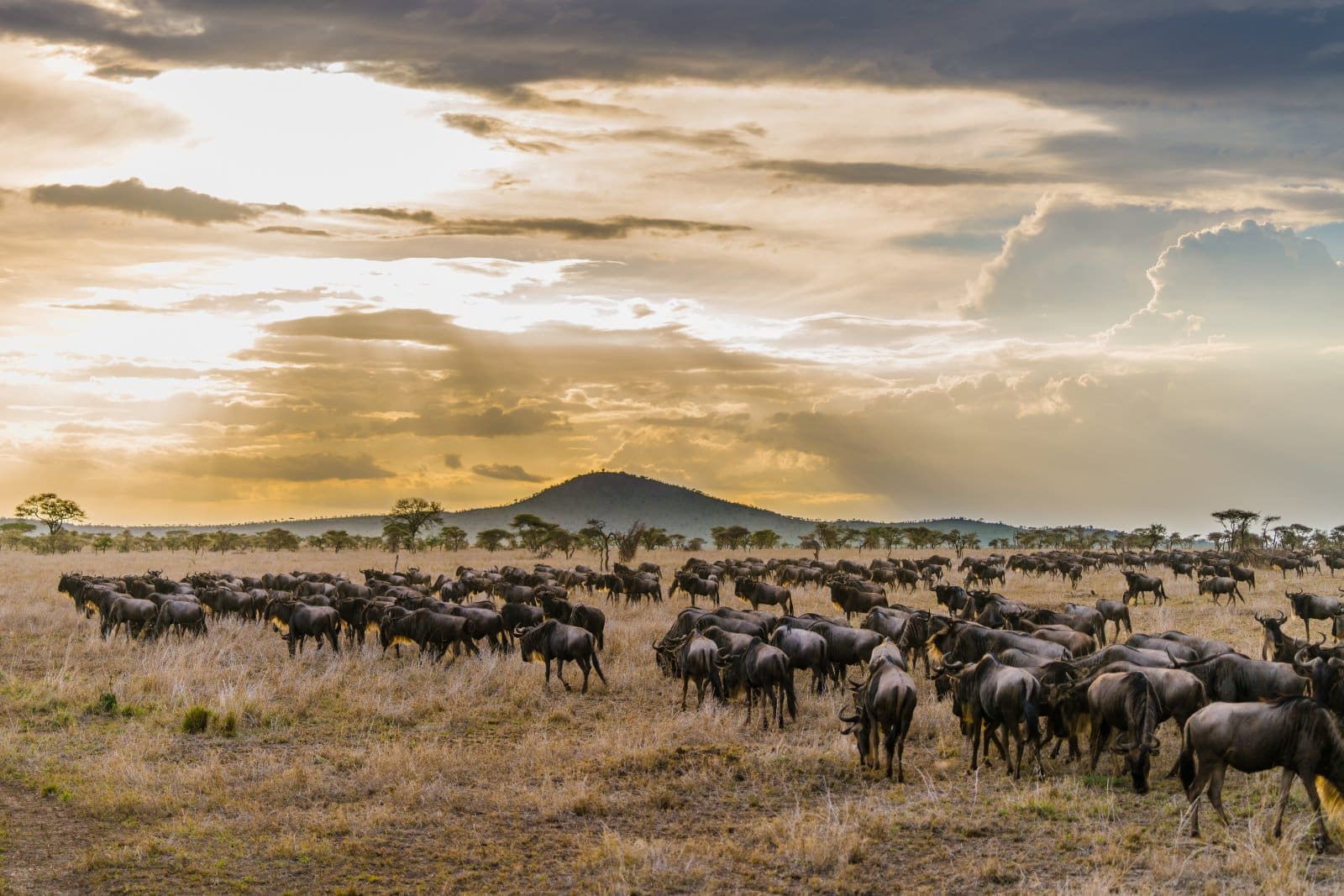
1. The Great Wildebeest Migration
The Great Wildebeest Migration in the Serengeti is an awe-inspiring natural phenomenon, marking one of the most significant wildlife events on the planet. Over a million wildebeest, alongside zebras and gazelles, embark on a relentless journey through the Serengeti ecosystem, driven by ancient instincts to find fresh grazing and water.
This migration is characterized by its sheer scale and the dramatic challenges the migrating herds face, particularly during perilous river crossings where aquatic and terrestrial predators lurk. Witnessing this event provides a profound insight into the unscripted drama of the natural world. As an observer, you are privy to moments of triumph and tragedy, encapsulating the raw essence of survival in the African wilderness.
Insider’s Tip: Opt for a hot-air balloon ride for an unparalleled aerial view of the migration.
When to Travel: The migration is year-round, but river crossings typically occur between July and September.
How to Get There: Fly to Kilimanjaro International Airport, then a domestic flight to Seronera Airstrip in the Serengeti.
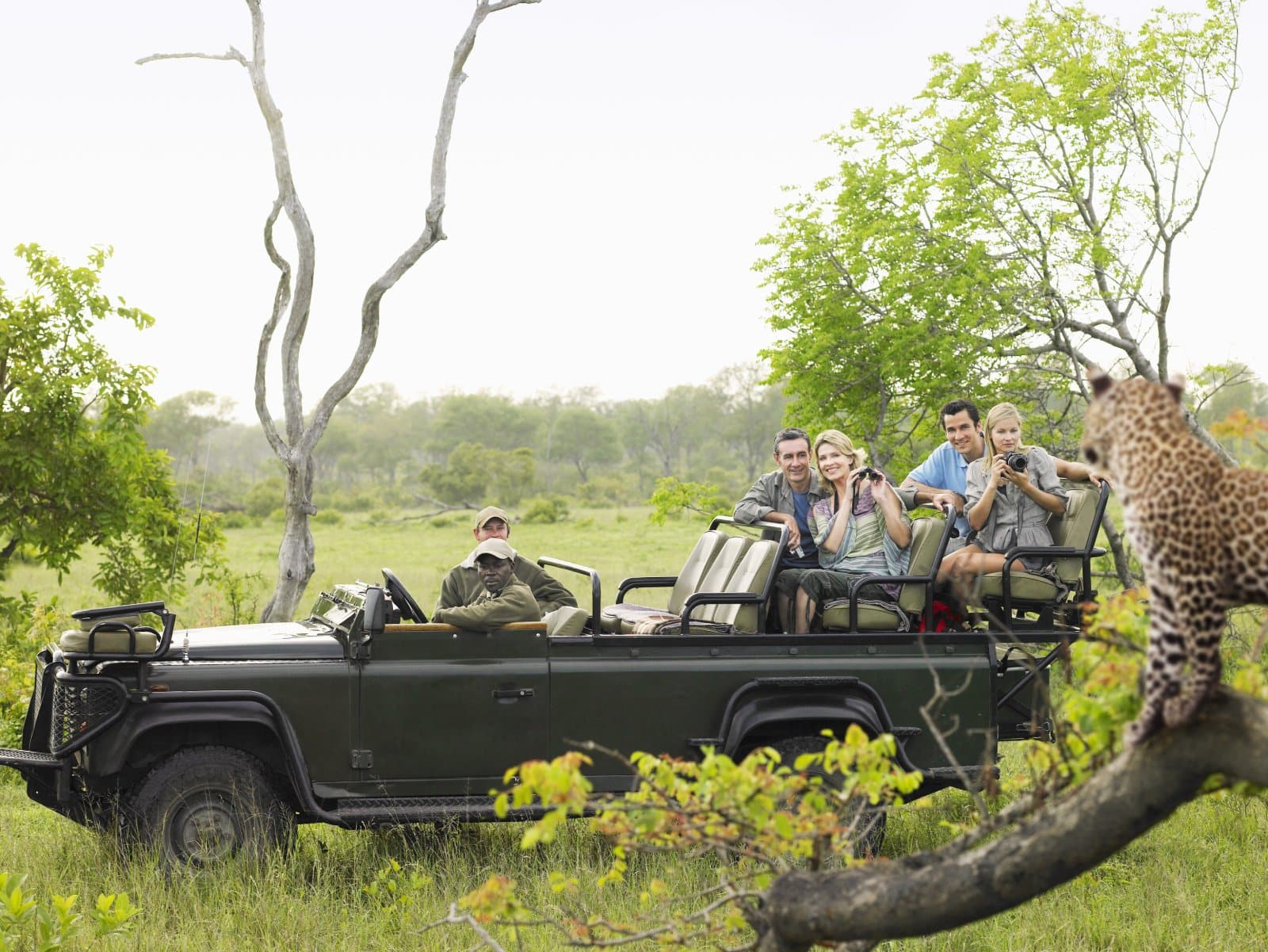
2. Predators of the Serengeti
The Serengeti is a stronghold for Africa’s most iconic predators. This vast landscape is a prime setting for observing lions, leopards, cheetahs, and hyenas in their natural habitat. The region of Seronera, in particular, is celebrated for its exceptional predator sightings. Here, you can observe the dynamics of lion prides, the stealth of leopards, and the strategic hunting techniques of cheetahs.
Witnessing these predators in action, whether during a hunt or nurturing their young, offers an unfiltered glimpse into their complex lives. The experience is about the thrill of the sighting and understanding the role these apex predators play in maintaining the ecological balance of the Serengeti.
Insider’s Tip: Early morning game drives offer the best chance to see predators in action.
When to Travel: The dry season (June to October) is best for visibility year-round.
How to Get There: Access is through the Seronera Airstrip, with game drives organized by local lodges.
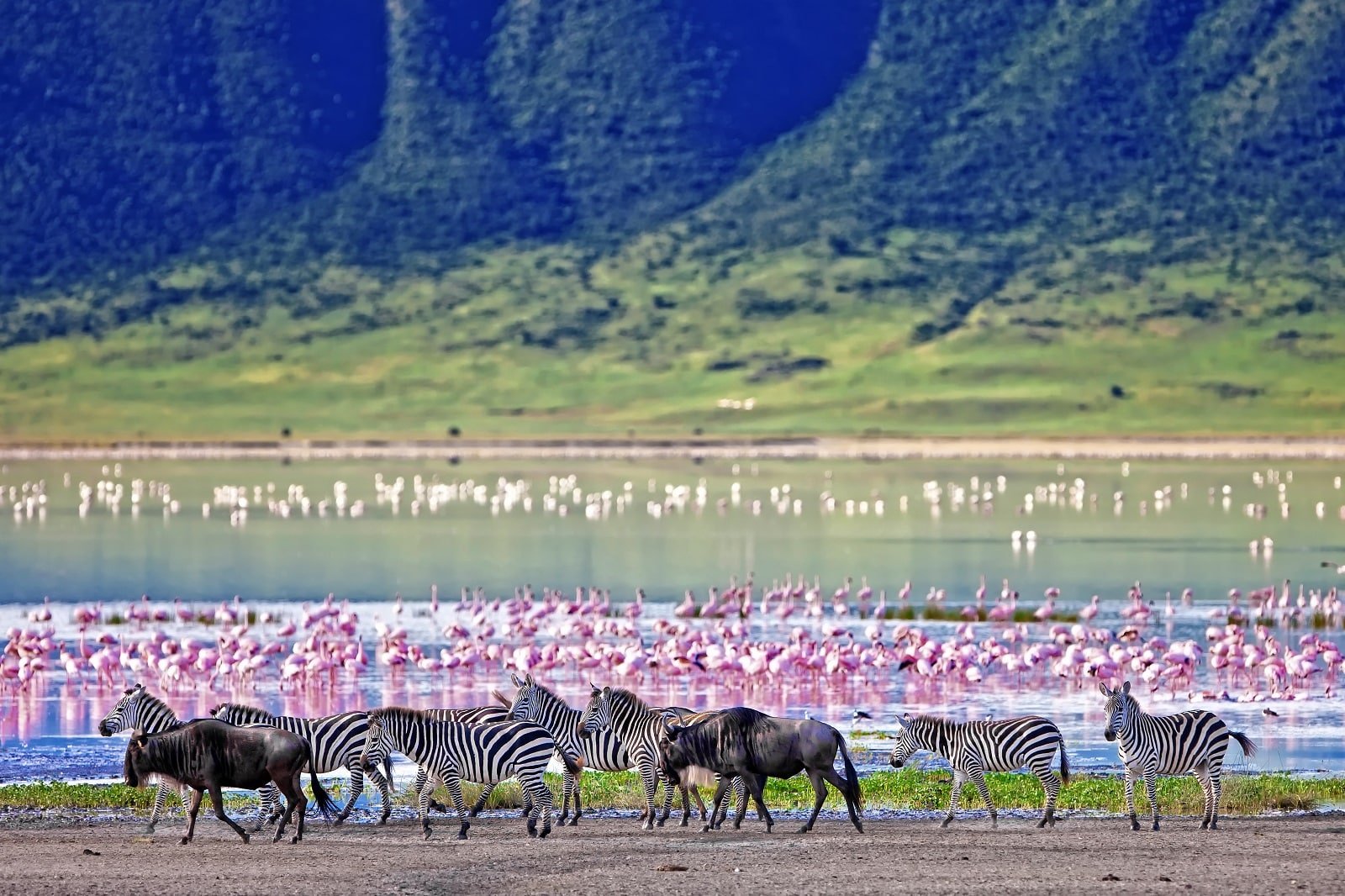
3. Ngorongoro Crater Conservation Area
Adjacent to the Serengeti lies the Ngorongoro Crater, a breathtaking natural wonder. This massive volcanic caldera forms a distinct ecosystem with diverse habitats. It’s home to a dense concentration of wildlife, including the elusive black rhino, herds of wildebeest, zebra, and a healthy population of lions.
The crater floor, with its verdant plains, acacia forests, and soda lakes, offers an unparalleled safari experience. The Ngorongoro Crater is a wildlife retreat and a porthole into the geological history of the Earth, its towering walls providing a backdrop of dramatic landscapes that are both ancient and ever-changing.
Insider’s Tip: Visit in the early morning to avoid crowds and spot nocturnal animals returning from hunting.
When to Travel: Year-round; however, the dry season provides better wildlife viewing.
How to Get There: Drive from Arusha or fly to Lake Manyara Airstrip, followed by a drive to the crater.
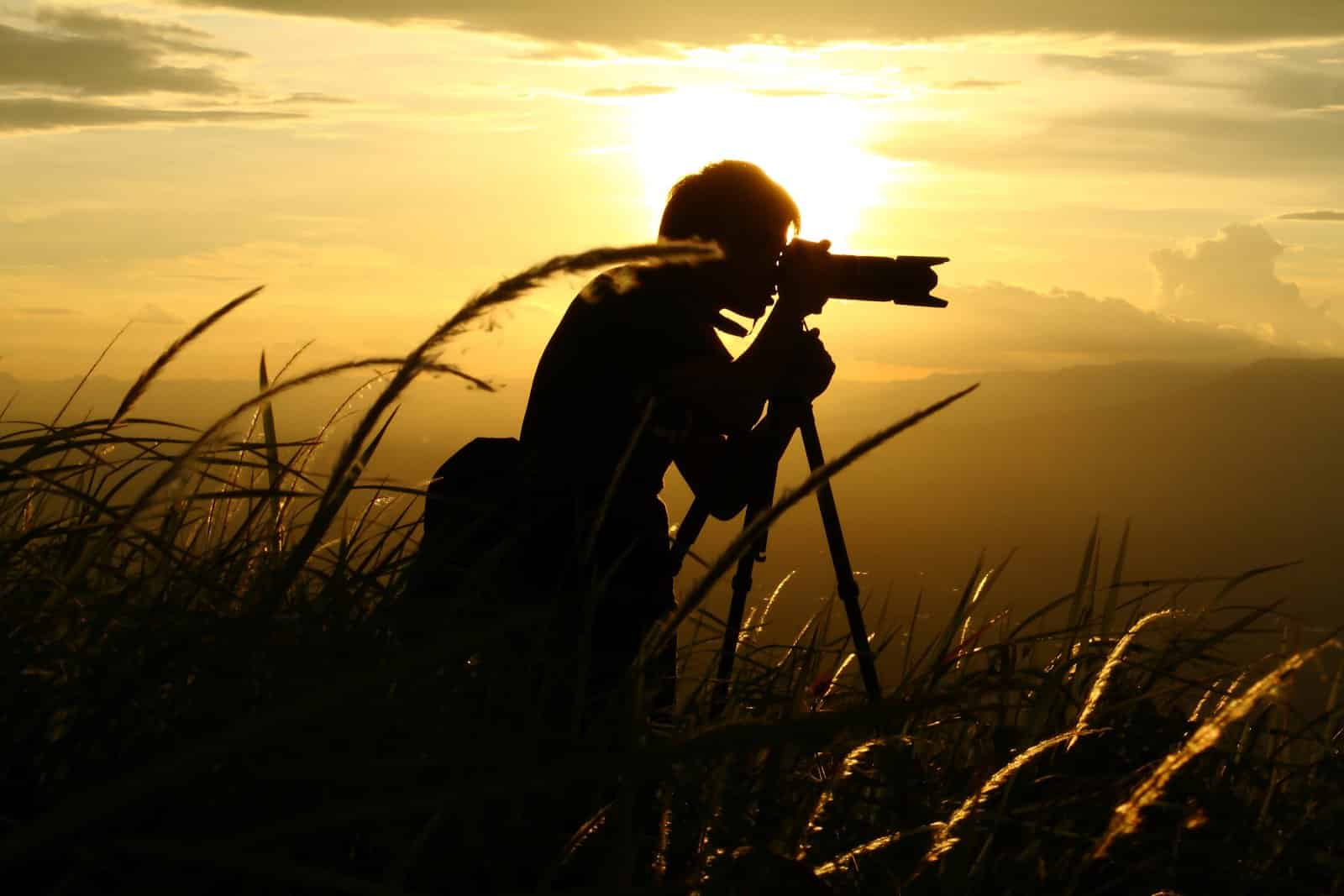
4. Birdwatching in the Serengeti
For bird enthusiasts, the Serengeti offers an avian paradise. The park is a habitat for over 500 bird species, ranging from the commonly seen African fish eagles and vultures to the more elusive species like the Kori bustard and Secretary bird. The varied ecosystems within the park – from savannahs to riverine forests – create ideal conditions for birdwatching.
Each area within the Serengeti offers a different birding experience, whether observing migratory birds around the wetlands or spotting endemic species in the dense foliage. The experience is as educational as it is delightful, providing a deeper understanding of avian life and its crucial role in the ecosystem.
Insider’s Tip: Bring a high-quality zoom lens for bird photography.
When to Travel: November to April, during the migratory season.
How to Get There: Fly to Seronera Airstrip and arrange guided birdwatching tours through your lodge.
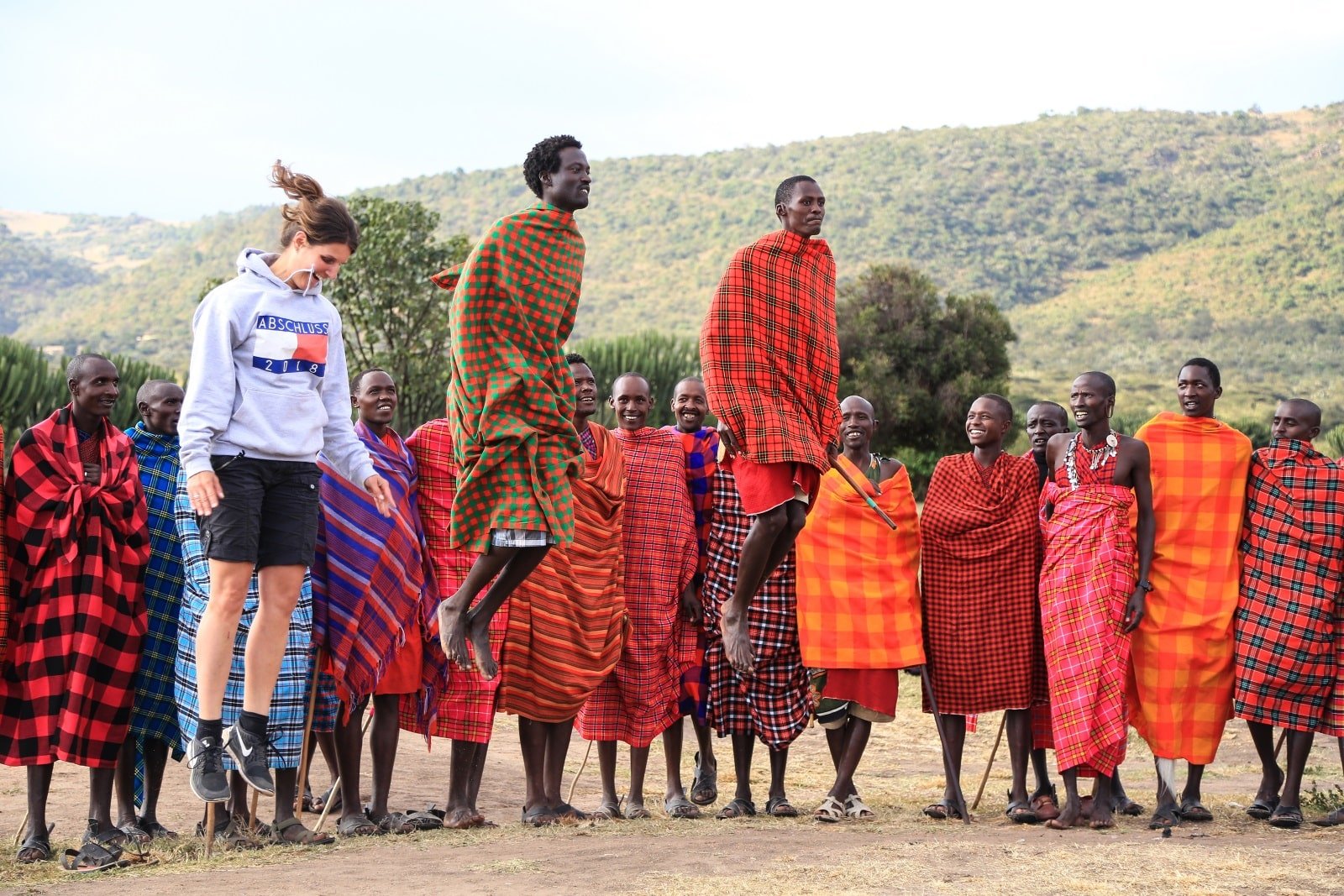
5. Maasai Cultural Experience
The Maasai people, with their rich cultural heritage, have been an integral part of the Serengeti landscape for centuries. Engaging with the Maasai offers a unique cultural immersion. Visits to Maasai villages allow you to witness their traditional way of life, unchanged for generations.
Participating in a Maasai dance, learning about their pastoral lifestyle, and observing their skilled beadwork provide a rare glimpse into a culture deeply connected to the land and its wildlife. This cultural exchange is about observing and understanding and respecting a way of life that has coexisted with Africa’s wildlife in a delicate balance.
Insider’s Tip: Participate in a traditional Maasai dance or craft-making session.
When to Travel: Year-round.
How to Get There: Most cultural tours are organized by lodges within or near the Serengeti.

6. Serengeti Walking Safaris
Walking safaris in the Serengeti offer a profoundly personal connection with the African bush. Escorted by experienced guides, these safaris allow for close encounters with the diverse flora and fauna of the park. The pace is slower, the senses heightened, and the experience more immersive.
Walking in the footsteps of wildlife, tracking animals, and learning about medicinal plants offer a deeper understanding of the intricate connections within the Serengeti ecosystem. This intimate safari experience transcends the usual game drives, offering a unique perspective of the African wilderness.
Insider’s Tip: Wear comfortable, neutral-colored clothing to blend into the environment
When to Travel: The dry season, for safer walking conditions and better wildlife visibility.
How to Get There: Organize through lodges in Serengeti, with most starting points accessible by vehicle from your accommodation.
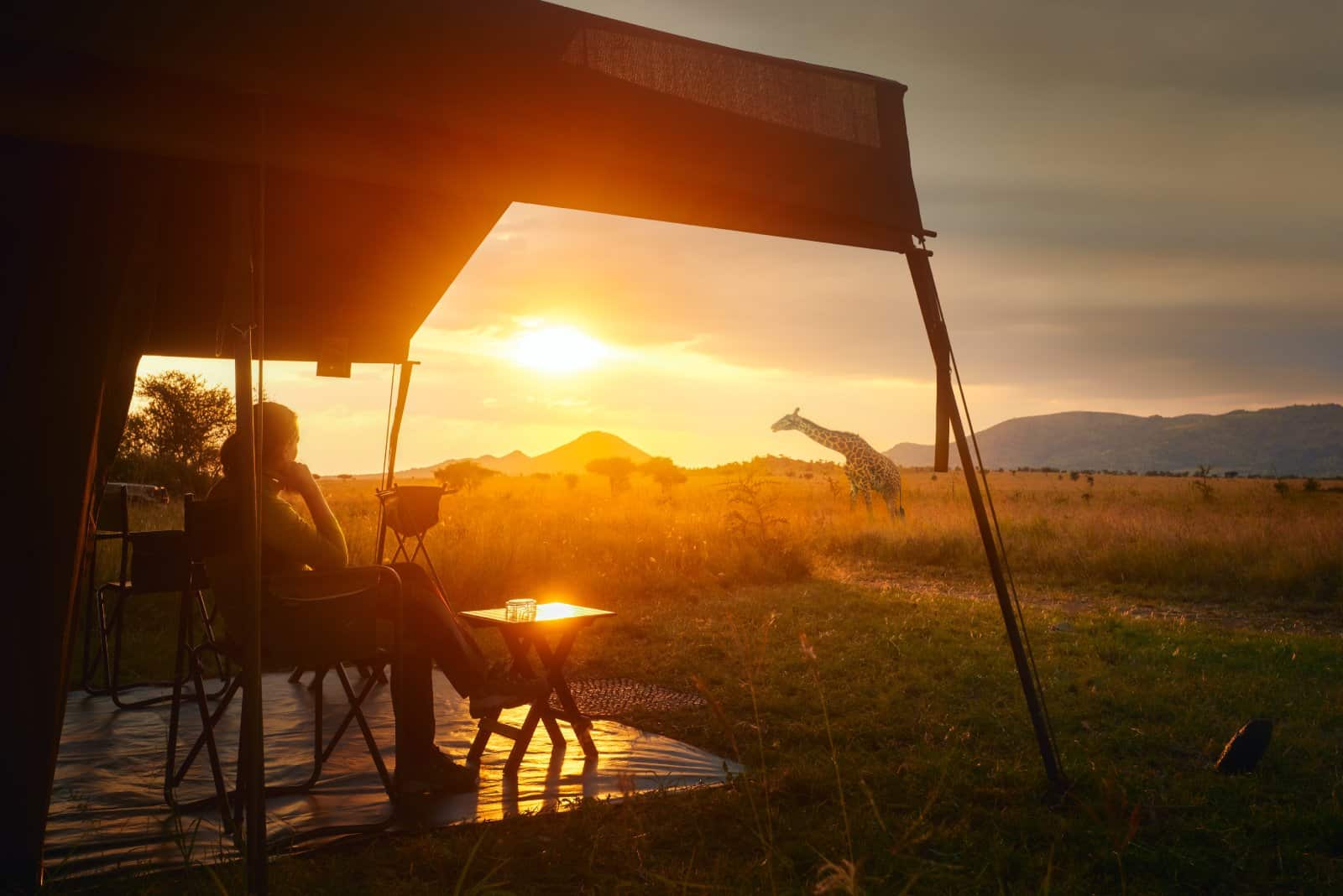
7. Luxury Camping
Luxury camping in the Serengeti combines the allure of the wild with the comforts of modern amenities. These camps are strategically located to offer the best wildlife viewing experiences, including being in the path of the great migration. The accommodation ranges from lavish tents with en-suite bathrooms to exclusive lodges with private decks overlooking the savannah.
The experience extends beyond the accommodation, with night drives and bush dinners under the stars, providing an enchanting way to experience the Serengeti’s nocturnal life and its vast, starlit skies.
Insider’s Tip: Book a camp that moves with the migration for a unique experience.
When to Travel: Depends on the migration pattern if following the herds; otherwise, year-round.
How to Get There: Accessible via game drives organized by the camps, usually from the nearest airstrip.
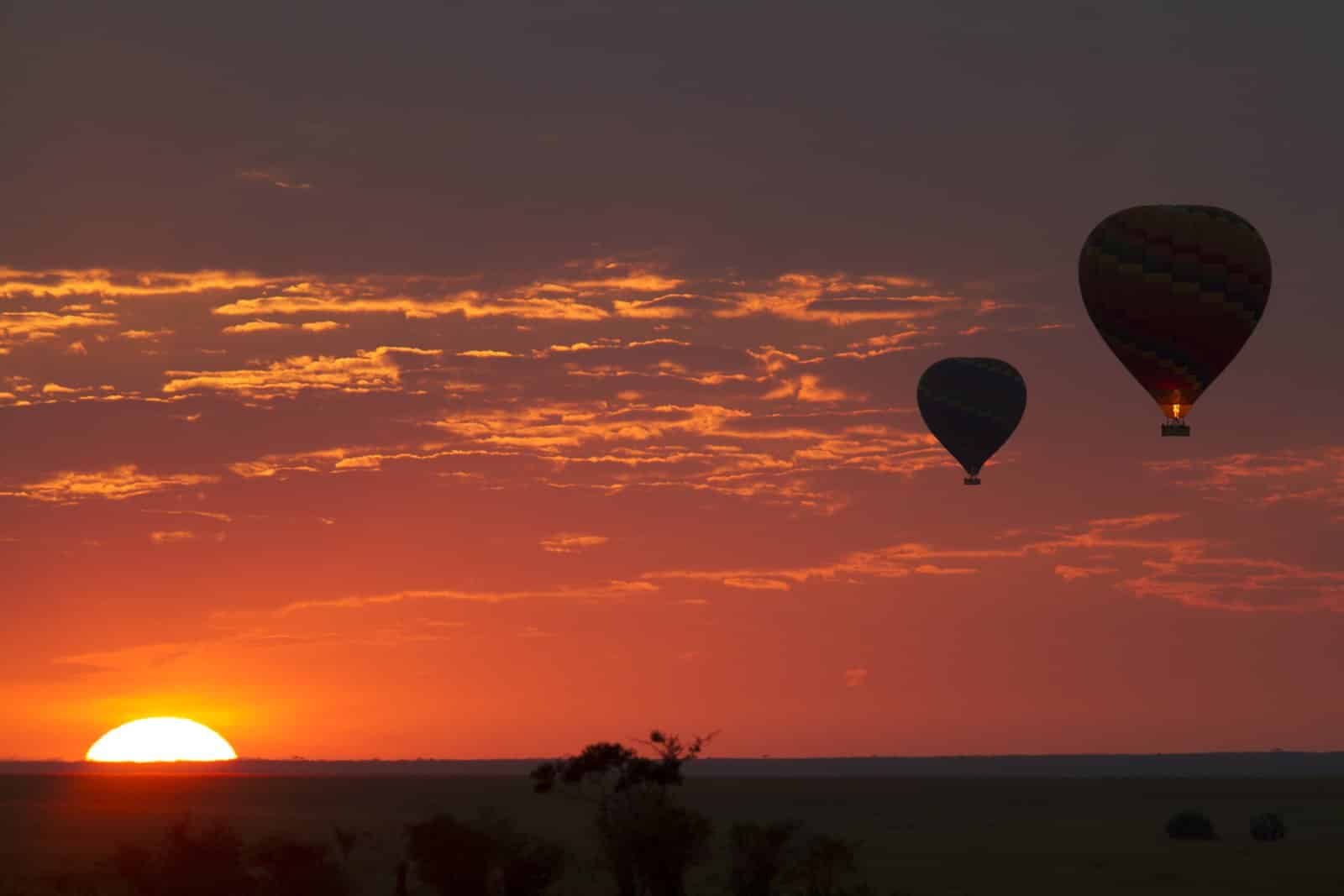
8. Serengeti Balloon Safaris
A hot-air balloon safari in the Serengeti is an experience of a lifetime. Floating silently above the savannah at sunrise, you witness the park from a vantage point like no other. The balloon’s path, dictated by the morning breezes, offers a tranquil and panoramic view of the sprawling Serengeti below.
From this aerial perspective, the scale and beauty of the park are truly appreciated, revealing patterns of movement and life that are invisible from the ground. The flight culminates in a traditional champagne breakfast in the bush, a fitting end to an unforgettable journey.
Insider’s Tip: Book well in advance as these popular safaris have limited capacity.
When to Travel: Year-round, with clearer skies during the dry season.
How to Get There: Most balloon safaris launch near the Seronera region, accessible from nearby lodges.
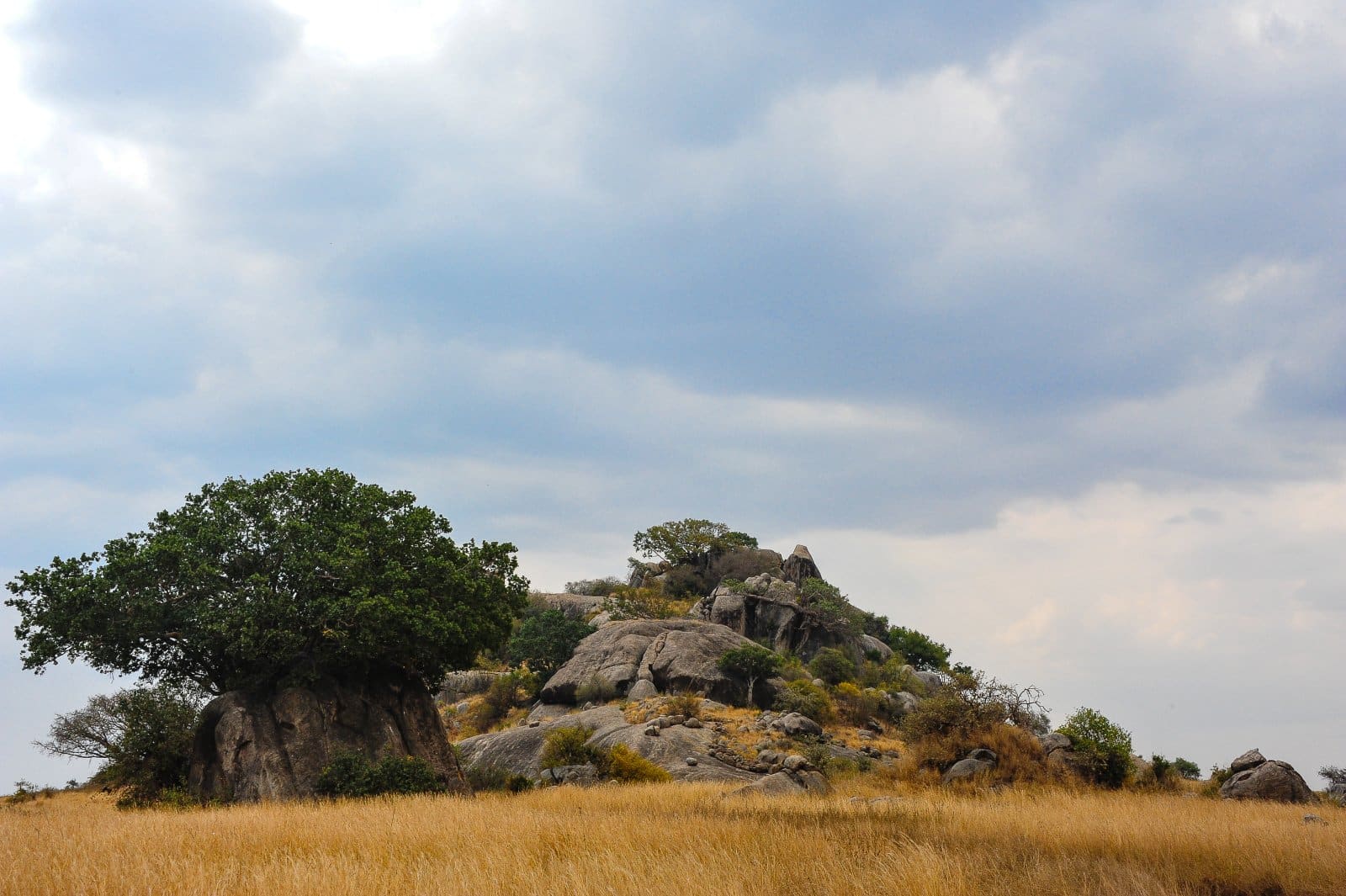
9. Kopjes Exploration
Kopjes, ancient granite rock formations scattered across the Serengeti, are islands of biodiversity. These outcrops provide various wildlife habitats, including reptiles, birds, and mammals. Exploring these kopjes allows you to observe creatures like agile rock hyraxes, colorful agama lizards, and lions basking on the warm rocks.
The kopjes also offer some of the most picturesque landscapes in the park, with sweeping views of the surrounding plains, making them ideal spots for wildlife observation and photography.
Insider’s Tip: Visit during the late afternoon when animals are more active.
When to Travel: Year-round, with better accessibility during the dry season.
How to Get There: Accessible by game drives from any Serengeti lodge or camp.

10. Photography Workshops
Photography workshops in the Serengeti cater to both amateur and professional photographers. Under the guidance of experienced professionals, these workshops focus on capturing the essence of the Serengeti through the lens.
They provide practical tips on wildlife photography, from mastering light and composition to understanding animal behavior for the perfect shot. These workshops enhance your photography skills and deepen your appreciation of the Serengeti’s landscapes and inhabitants.
Insider’s Tip: Ensure you have extra memory cards and batteries.
When to Travel: Year-round, though the dry season offers better light and visibility.
How to Get There: Workshops are typically arranged by lodges or tour companies in the Serengeti.
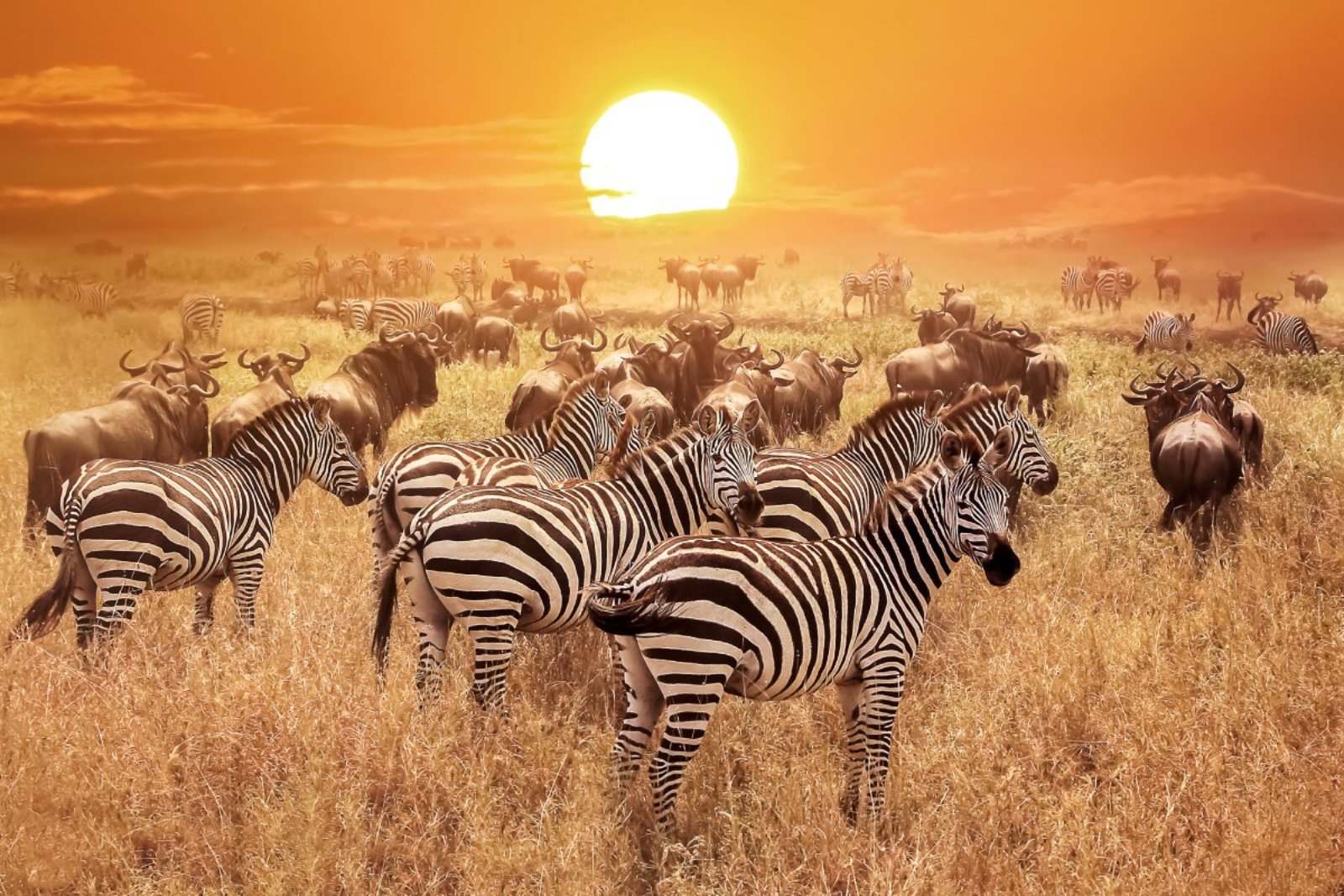
The Bottom Line
As you embark on your journey to the Serengeti National Park, embrace the opportunity to connect with nature and wildlife in one of the world’s most iconic landscapes. Your experiences here, whether witnessing the great migration, capturing the perfect photograph, or learning from the Maasai are spectacular moments in travel and allow you to understand and appreciate the delicate balance of our natural world. Remember, your travels contribute to the conservation of this extraordinary ecosystem.
More Articles Like This…
Barcelona: Discover the Top 10 Beach Clubs
2024 Global City Travel Guide – Your Passport to the World’s Top Destination Cities
Exploring Khao Yai 2024 – A Hidden Gem of Thailand
The post Serengeti National Park 2024: 10 Ultimate Adventures That Will Ignite Your Wanderlust republished on Passing Thru with permission from The Green Voyage .
Featured Image Image Credit: Shutterstock / soft_light.
For transparency, this content was partly developed with AI assistance and carefully curated by an experienced editor to be informative and ensure accuracy.
More for You
The Best Local Ice Cream Shop in Every State
Stephen A. Smith declares he's 'ashamed' of Democratic Party for not replacing Biden: 'It is pathetic'
Are eggs bad for cholesterol? New study reveals how many you can eat

Florida woman wakes up to find car destroyed. Video shows unlikely culprits
Steelers' Mike Tomlin Detailed That Russell Wilson Is 'Driven' Not Hungry
Another pandemic is coming. This time we have to be ready
4 Chain Restaurants With The Absolute Best Chicken Pot Pie And 4 With The Worst
The best beach town to live in on the East Coast is not in Florida, according to data. See the top 25.
7 High-Protein Snacks to Lower High Cholesterol, Recommended by a Dietitian
At 17, she found out she was autistic. It's a story that's becoming more common. Here's why.
4 telltale signs that it's time to upgrade your PC
Election law expert rejects prosecutor's allegation Stormy Daniels payments are an election expense
The Most Famous Food Brands From Every State
The Advantages Of Having Red Hair
18 Things You’ll Still Want to Do After 60 But Probably Can’t
Try This 5-Minute Dumbbell Workout to Shred Your V-Taper
11 Facts You Should Know About Hard-Boiled Eggs
Chiefs' Andy Reid impresses with perfect ceremonial first pitch at Royals' Opening Day
How to shut down your computer using the keyboard
The 25 Best Long-Lasting Perfumes You Won't Need to Reapply
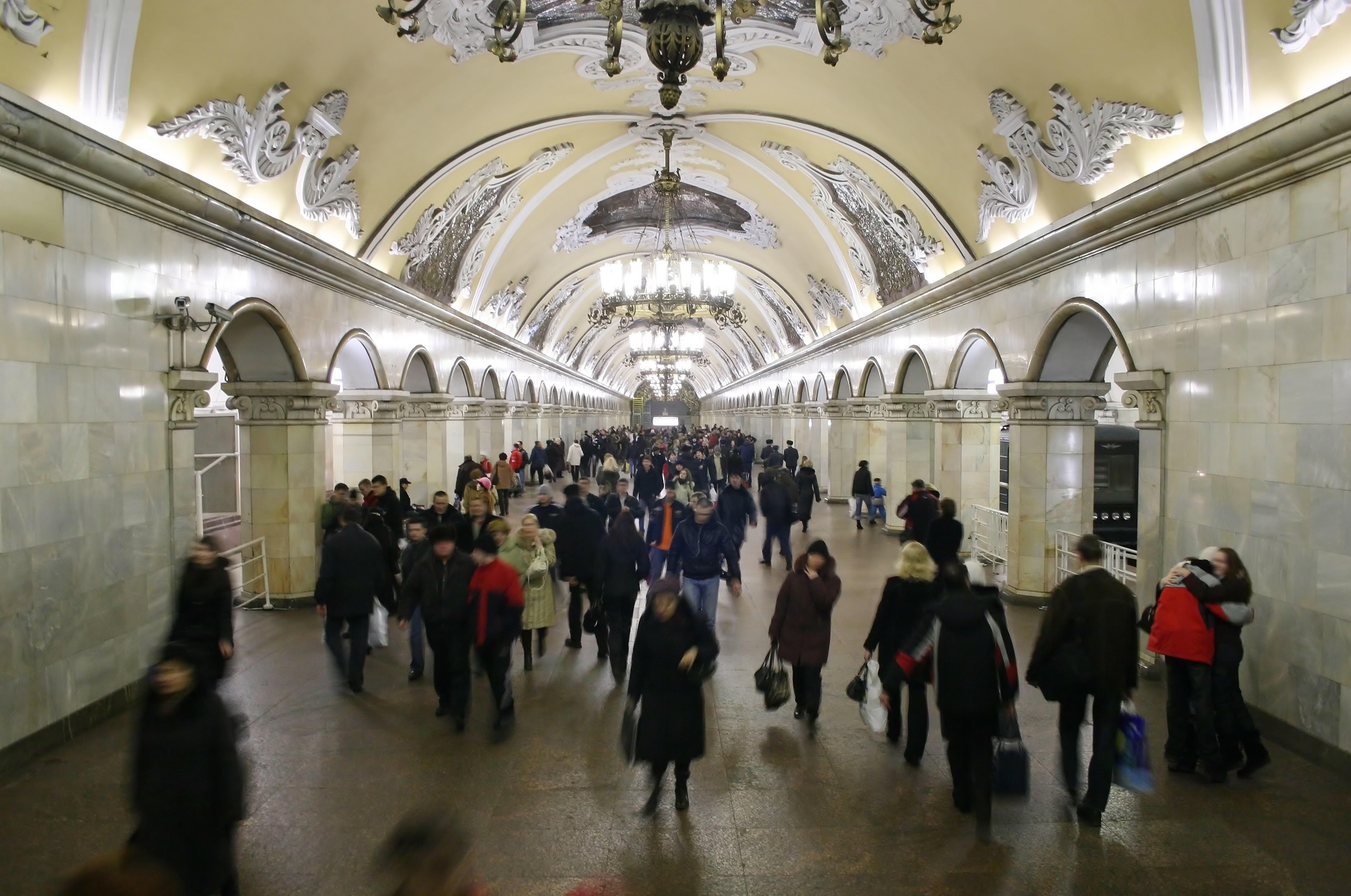
Guided Walking Tour of the Moscow Metro
Description, good to know.
- Pricing details
Departure place
You would like, admiring the frescoes in kurskaya and komsomolskaya metro stations, marvelling at the architecture of the moscow metro, listening to your guide's commentary, essential information *, duration 1 hour 50 minutes, starting time 2:00 pm.
Set off to discover the most breathtaking stops on Moscow’s beautiful metro system on this walking tour.
Some of the stops on the Moscow metro are real masterpieces. Head underground and admire the Moscow metro with your guide.
During your guided tour, you will get to admire the Ploshchad Revolyutsii , designed by the architect Dushkin. There are no fewer than 72 sculptures in this station!
You will then explore Kurskaya station, built in 1938. The design, mosaics and slogans will immerse you in the era of Stalin. You will also see the frescoes depicting Russian victories in Komsomolskaya station.
Then, continue to one of Moscow’s must-see metro stations, Novoslobodskaya , which resembles an underground palace: marble, stained glass windows...
Join your guide to explore the most lavish and important metro stops in Moscow!
- Availability: every day (excluding exceptional dates)
- Duration: 1 hr. 50 mins approx.
- Departure point: The Kremlin
- Languages: English
- Please wear comfortable shoes
- Metro tickets are included for the metro stations visited during the activity
- A valid student card will be requested from participants who have booked the reduced student tariff
- A minimum of 2 participants is required to book this activity
Price includes
- Metro tickets
- The services of an English-speaking tour guide
- The guided tour of the Moscow metro
Price doesn’t include
- Access to stations not included in the tour
- Hotel pick-up/drop-off
- Tips (optional)
- All other extras
Customers also look

IMAGES
VIDEO
COMMENTS
Ngorongoro Walking Safaris. This scenic walking safari takes place in the Ngorongoro Conservation area with the largest unbroken caldera in the world; the breathtaking Ngorongoro Crater. During this remote walking safari you will explore extinct volcanoes, diverse landscapes, wildlife and meet the local Maasai who live in this area.
The local communities around the Ngorongoro conservation area also engage in the walking safaris by acting as guides for the tourists during their experience around the wilderness and cultural experience in Tanzania. Walking safaris take about 2 to 3 hours of exploring Ngorongoro conservation area. This activity is offered by different tour ...
Ngorongoro walking safari is a unique and active safari experience; a trekking safari provides a welcome break to sitting in a vehicle for days on end. While walking you have the opportunity to stalk wildlife, search for tracks, and mix with indigenous cultures. You will only need to carry your small daypack with water and personal gear for the ...
Ngorongoro walking safari is a unique and active safari experience; a trekking safari provides a welcome break to sitting in a vehicle for days on end. While walking you have the opportunity to stalk wildlife, search for tracks, and mix with indigenous cultures. You will only need to carry your small daypack with water and personal gear for the ...
Best experience with Bee Adventure Safaris We did a two day-one night safari in Ngorongoro and Hadzabe tribe at Lake Eyasi in December 2022 and Izack made sure that everything was perfect. To fulfill all our wishes, he made a detour so that we could visit a witch-doctor and a Masai village, on our way back to Arusha, with no extra cost.
Compare 3,589 Ngorongoro Crater safari tours offered by 297 specialized tour operators. Find the best deals using the largest marketplace for African safaris. Best price guarantee! ... Walking safaris (5) Self-drive (0) Guided self-drive (0) Chimp trekking (11) Overland tours (1) Cycling safaris (0) Canoe safaris (0) Horseback safaris (0)
A remarkable 7-day safari adventure that combines breathtaking wildlife encounters, Maasai cultural tours, and walking safaris along the Ngorongoro Crater Rim with captivating landscapes in Tanzania's northern circuit. With carefully selected accommodations and knowledgeable guides, this safari promises an unforgettable journey into the heart ...
Ngorongoro walking safari and Odoinyo Lengai trekking provides you with the real exposure to the natural African beauty and the wildlife. Escorted by full armed ranger and the maasi warriors you will trek to embulbul, empakai crater and finally to Ngaresero area which is the starting point for trekking Oldoinyo Lengai. This active volcano is ...
Day to Day Itinerary of the 6 days Walking Safari. Day 1: Arrival in Arusha, transfer to accommodation. Day 2: Arusha to Tarangire National Park, game drive, overnight in Karatu. Day 3: Ngorongoro Crater exploration, drive to Empakaai Camp. Day 4: Hike from Empakaai Crater to Acacia Camp with donkeys. Day 5: Hike from Acacia Camp to Lake Natron ...
Program Highlights. 8 Days Tanzania Walking Safaris to Ngorongoro & Lake Natron, Experience the spectacular scenery of the Ngorongoro Highlands where indigenous Maasai people live in their traditional ways and climb the Maasai Mountain of God, an active volcano. For active types, Tanzania has a lot to offer and this is one of the most dramatic hikes in East Africa.
Discover an affordable private tour through the Northern Circuit's wildlife wonders, including Tarangire, Serengeti, and Ngorongoro, with chances to encounter the Big Five. Highlighted by a unique Serengeti walking safari, you will travel comfortably in a 4x4 safari vehicle with a pop-up roof for excellent wildlife viewing and limitless game ...
Day 00: Kilimanjaro International Airport to Arusha. Arrival at Kilimanjaro Airport, picked up by our driver/guide and transferred to Arusha for overnight at Green Mountain Hotel or Similar ready for the next Hiking Ngorongoro Crater safari. Day 01: Arusha to Ngorongoro Crater. Early breakfast at hotel, depart at 6:30am with packed lunches to ...
Walking safaris: Explore wildlife and private concessions on foot, an authentic and economical means of exploring wildlife in the Ngorongoro and Lake Eyasi. ... Ngorongoro luxury safari tours: With excellent game viewing, Ngorongoro also offers some of the very best luxury lodges in the world. With incredible décor, modern decorated suites ...
A walking safari in the Ngorongoro Conservation Area is a once-in-a-lifetime opportunity to connect with nature in a more intimate and personal way. You not only walk through the Ngorongoro Conservation Area's natural areas, which have spectacular landscapes, wildlife, and people, but you also synchronize with your surroundings and become one ...
The Ngorongoro Crater in Tanzania is the largest unfilled inactive volcanic crater, or caldera, in the world. However, it's not entirely empty as a wildlife spectacle unfolds in this dramatic setting. At the base of 610m cliff faces elephants trumpet, lions roar, and antelope…eat grass. The crater is arguably the best place in Tanzania to ...
Ngorongoro walking safari is a unique and active safari experience; a trekking safari provides a welcome break to sitting in a vehicle for days on end. While walking you have the opportunity to stalk wildlife, search for tracks, and mix with indigenous cultures. You will only need to carry your small daypack with water and personal gear for the ...
Day 2: Drive to Ngorongoro, Crater Rim Walking Safari. Drive Time: Approx. 3-4 hours. You shall be picked up at the hotel in Arusha by your driver guide. You will proceed to drive to the Ngorongoro conservation area where you will engage in a walking safari. During your walking safari, you will be accompanied by a ranger and you will get a ...
10 Day Luxury Fly-in Kenya & Tanzania Tour. 1 night at Gran Melia Hotel (breakfast only) 2 nights at Melia Ngorongoro Lodge. 3 nights at Nimal Serengeti. 3 nights at Entim Mara Camp. Transfers between lodges and airstrips. View safari to see all inclusions.. $ 950 USD. Per person per night.
Get to Know Ngorongoro Crater. This is where vast herds of the Great Migration come to give birth in a 3-million-year-old collapsed volcano, Masai people live and fossils abound. Ngorongoro Crater - a Unesco World Heritage site - is 600 meters deep, 20 kilometres wide and the largest unflooded, unbroken caldera in the world.
Walking safaris in the Serengeti offer a profoundly personal connection with the African bush. Escorted by experienced guides, these safaris allow for close encounters with the diverse flora and ...
Set off to discover the most breathtaking stops on Moscow's beautiful metro system on this walking tour. Some of the stops on the Moscow metro are real masterpieces. Head underground and admire the Moscow metro with your guide. During your guided tour, you will get to admire the Ploshchad Revolyutsii, designed by the architect Dushkin. There ...
See the best examples of underground Soviet-era architecture on a 1.5-hour walking tour of Moscow's metro stations! With an expert guide at your side, visit five of Moscow's must-see stations, including iconic Mayakovskaya, and learn all about Stalin's visions for the former Soviet Union. Hear about the Metro-2, a secret line said to have been used by the government and KGB, and see ...
View the most beautiful of Moscow's Soviet-era metro stations on this walking tour. With an expert guide, visit five of the Russian capital's celebrated stations built during the Soviet period as you learn how the lavish, subway Moscow architecture was designed to express a bright, bold new Soviet future. Admire the extravagant décor, chandeliers and sculptures at the stations, including ...